Sinharaja Forest Reserve - UNESCO Rainforest
Biosphere Reserve and World Heritage Site by UNESCO
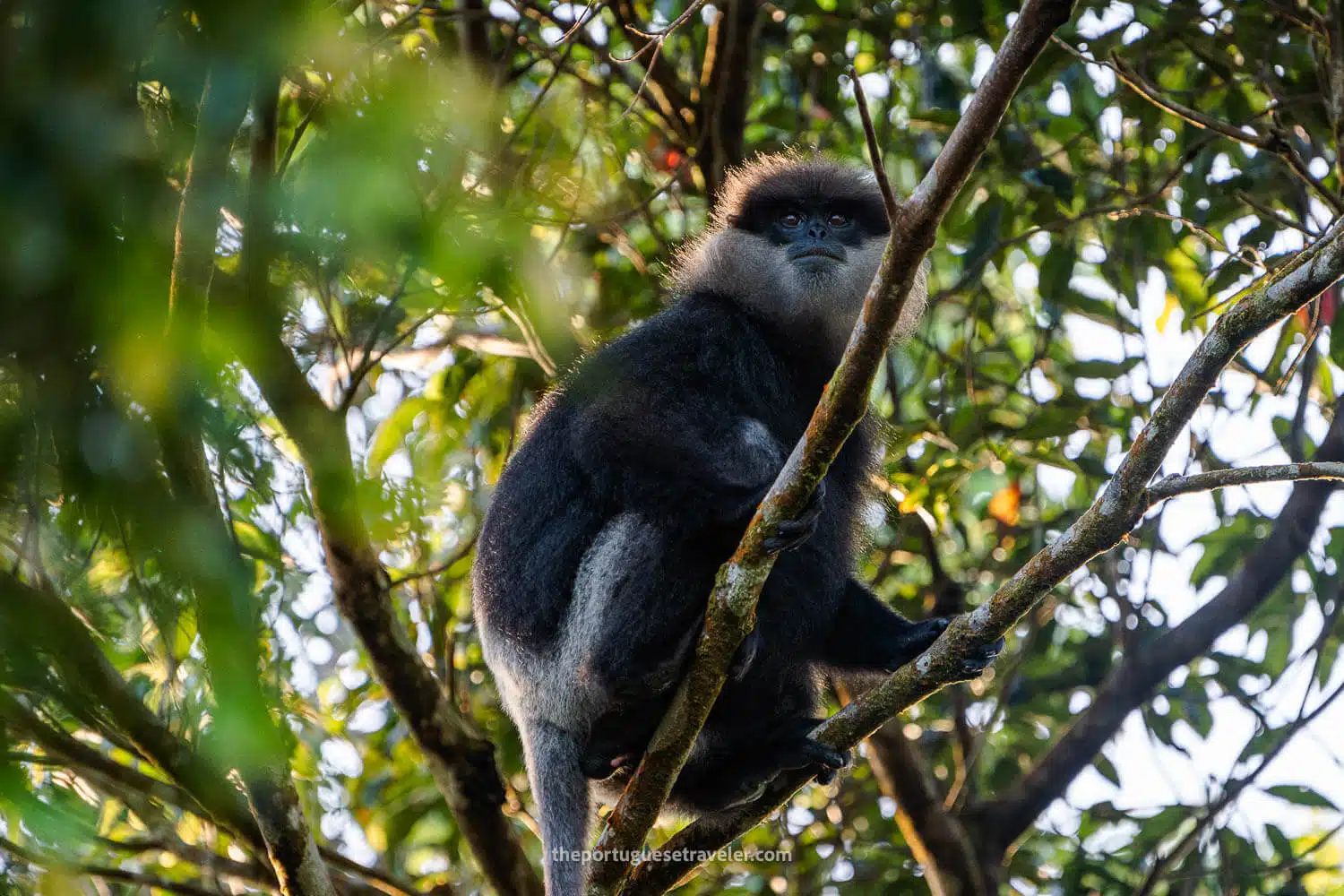
Sinharaja Forest Reserve is one of those rare places that feels like stepping into another world. As Sri Lanka’s last stretch of tropical rainforest, it’s a sanctuary for nature lovers and anyone looking to experience the island’s rich biodiversity. The reserve is lush and teeming with life, from rare birds and butterflies to the sounds of hidden waterfalls. Whether you’re hiking through the greenery or simply soaking in the surroundings, the experience is peaceful and humbling.
If your Sri Lanka itinerary includes eco-tourism or off-the-beaten-path adventures, Sinharaja is a must. It’s a place to reconnect with nature in its purest form.
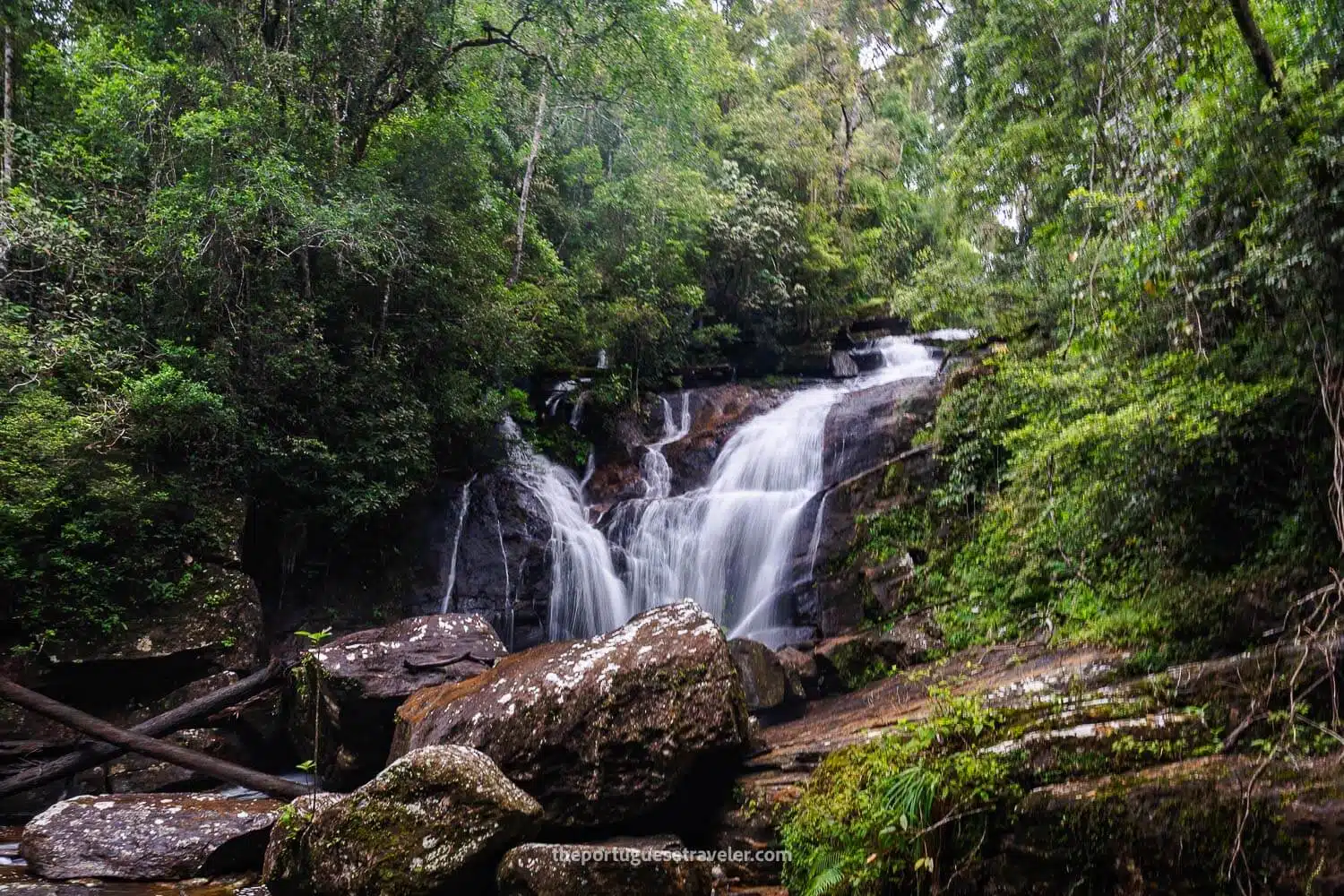
Table of Contents
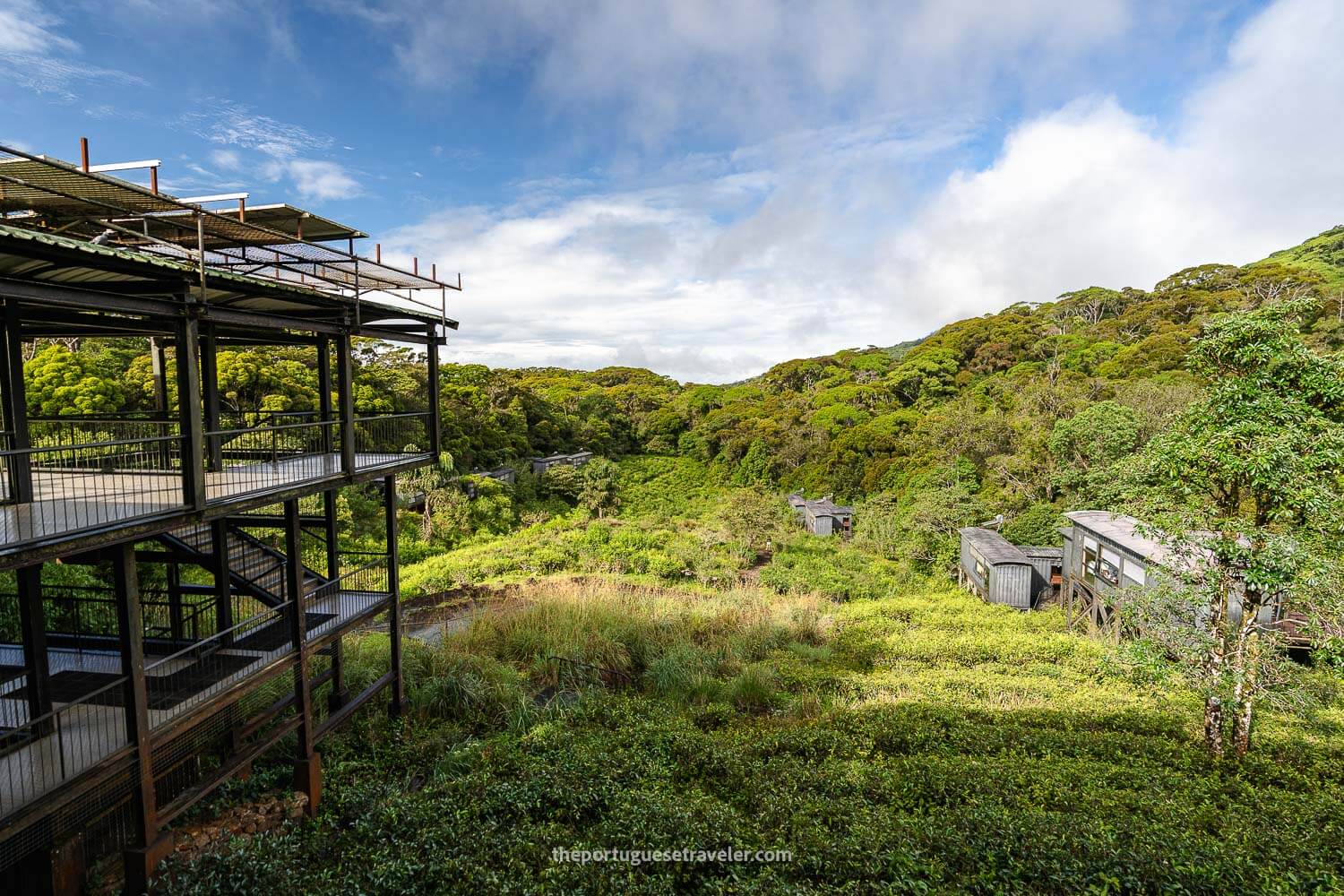
Sinharaja Forest Reserve: Essential Information
The Sinharaja Forest Reserve is one of Sri Lanka’s most remarkable natural treasures, renowned for its exceptional biodiversity and rich ecosystem. It is the last remaining primary tropical rainforest in the country, home to an astounding variety of endemic species. Here are some key facts about this UNESCO World Heritage Site:
- Area: 8,864 hectares
- Altitude Range: 300 – 1,170 meters
- Annual Rainfall: 3,614 – 5,006 mm
- Location: Southern Sri Lanka, within Ratnapura, Galle, and Kalutara Districts
- Endemic Plants: 139 species, including rare palms like Loxococcus rupicola
- Endemic Birds: 95% of Sri Lanka’s endemic bird species
- Conservation Status: World Heritage Site (1988), Biosphere Reserve (1978)
For more information please get in touch with the official tourism board at:
Why Visit the Sinharaja Forest Reserve?
If you love immersing yourself in nature, exploring wild landscapes, and documenting rare wildlife, then Sinharaja Forest Reserve in Sri Lanka is a place worth experiencing. As the last viable area of primary tropical rainforest in the country, it offers a glimpse into an untouched world filled with endemic species. Over 60% of the trees are found nowhere else, and the reserve is home to more than half of Sri Lanka’s endemic mammals, butterflies, and birds.
Walking through Sinharaja feels like entering a living museum of biodiversity. While leopards, Indian elephants, and the endemic purple-faced langur inhabit the forest, sightings of these elusive creatures are quite rare. But even without spotting them, the atmosphere of the forest is rewarding in itself. The thick canopy filters light beautifully, and the sound of streams and waterfalls tucked away in the forest makes every trail feel special. Vibrant bird species like the Sri Lanka blue magpie are more frequently seen, adding bright flashes of color to the lush green surroundings.
Sinharaja’s significance extends beyond its beauty, serving as a vital site for understanding biological evolution and preserving ancient plant life. Conservation efforts keep visitor numbers low to protect the ecosystem, making it an ideal destination for those who appreciate rare wildlife, pristine landscapes, and the peacefulness of untouched nature.
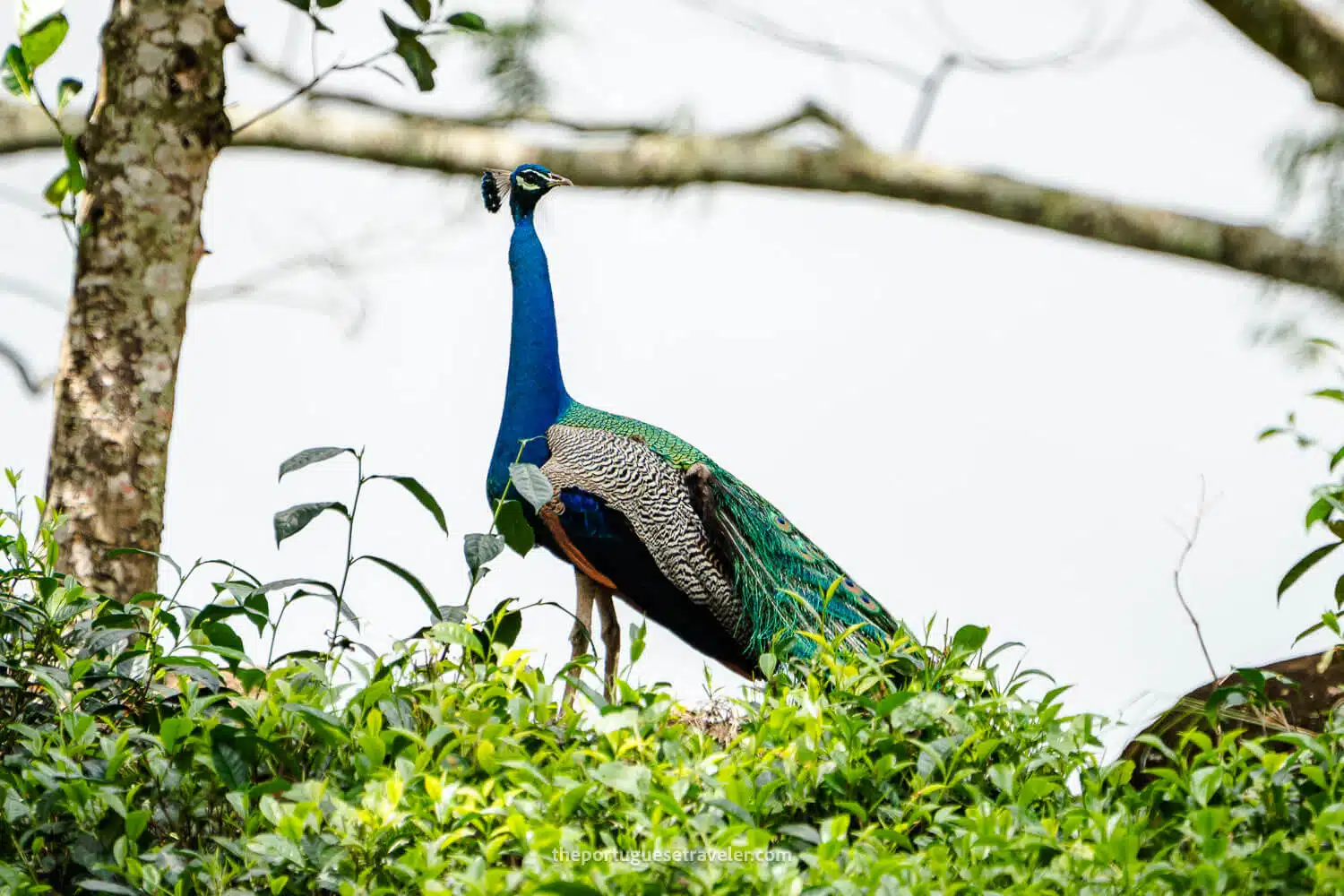
When is The Best Time to Visit the Sinharaja Forest Reserve?
The ideal time to visit Sinharaja Forest Reserve is during the driest months of the year, which are from January to March and July to September. These months offer more favorable weather conditions with less rainfall, making it a great time for hiking and exploring the reserve’s vibrant biodiversity. However, even during these months, there is still a chance of rain, as Sinharaja sees rainfall on most days throughout the year.
The area has a wet equatorial climate, receiving over 400 cm of rain annually, which makes it one of the wettest parts of Sri Lanka. During the monsoon seasons, from May to July (southwest monsoon) and November to January (northeast monsoon), heavy rainfall occurs, making outdoor activities difficult. The inter-monsoonal period in October also brings unsettled weather. The reserve experiences high humidity, often reaching 90%, except during the dry months.
For the best overall experience with milder weather, clearer skies, and more predictable trekking conditions, January to March is considered the optimal time to visit.
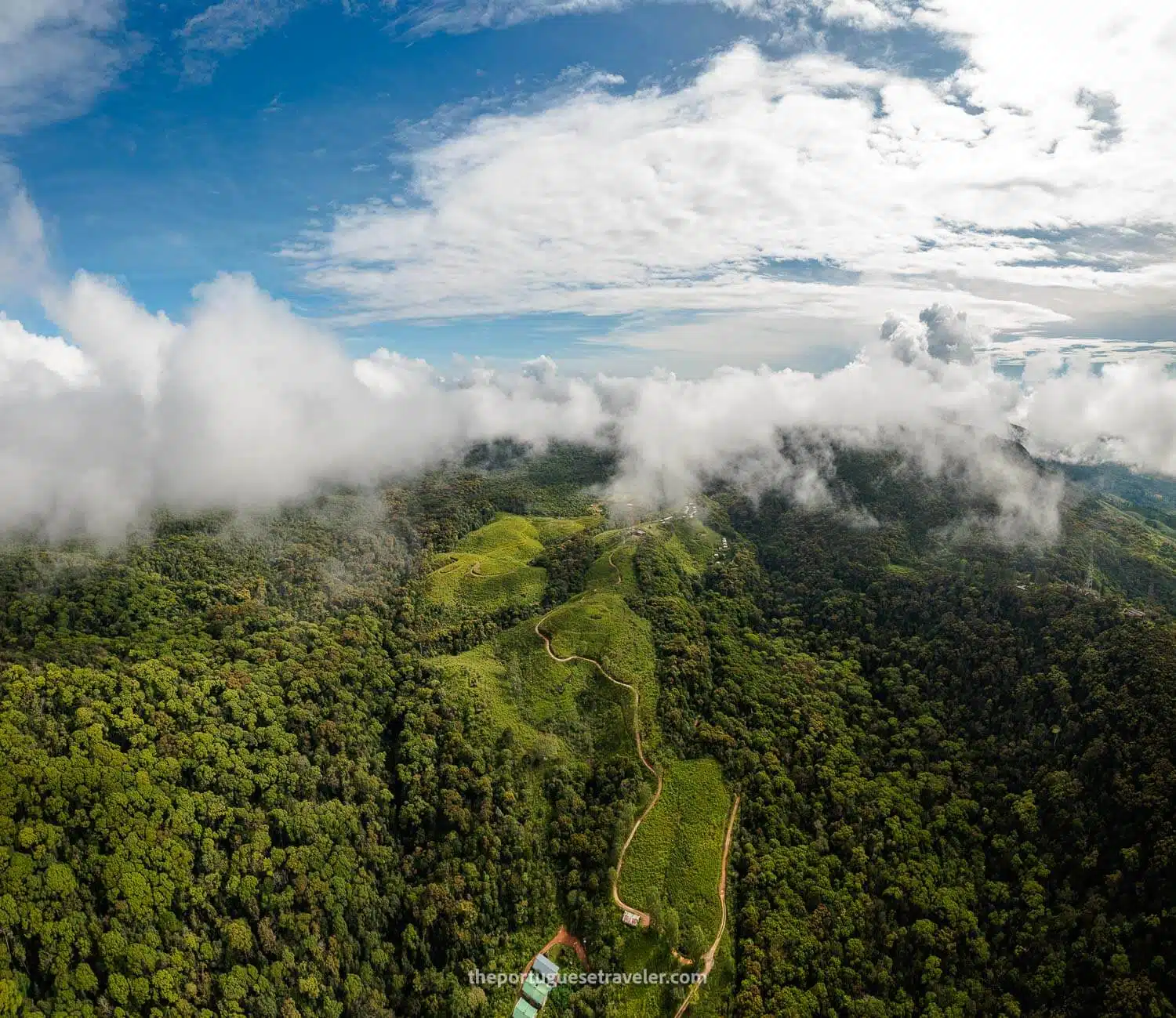
How to Get from Colombo to the Sinharaja Forest Reserve?
To reach the Sinharaja Forest Reserve from Colombo, there are several transportation options depending on which entrance you’re visiting. During our press trip, the Sri Lanka Tourism Board arranged everything for our group, including a private transfer to the Deniyaya Kurulugala entrance, where we stayed at the Rainforest Ecolodge. This entrance is the closest to the lodge, and since it was part of the organized trip, all logistics were planned for us.
For those traveling independently, here’s how you can get to the Sinharaja Forest Reserve using public transportation:
First, you’ll need to travel from Colombo to Matara, which can be done by bus or train. Buses to Matara leave from the Colombo bus terminal, and there are also trains available from Colombo Fort Railway Station. The train ride to Matara is scenic, taking you along the southern coastline of Sri Lanka.
Once in Matara, you’ll transfer to a bus heading for Deniyaya. From Deniyaya, a tuk-tuk is required for the final stretch to the main entrances of the reserve. If you are visiting the Pitadeniya or Kurulugala entrance, both are in Deniyaya, and the tuk-tuk will take you directly to the trailheads or your accommodation, such as the Rainforest Ecolodge.
Pitadeniya Entrance is one of the most accessible and popular points for exploring the reserve, while Kurulugala Entrance is the closest to the Rainforest Ecolodge. Both entrances offer various trails that showcase the incredible biodiversity of the forest.
For those opting to visit the Kudawa-Kalawana Entrance on the western side of the reserve, you’ll need to take a bus from Colombo to Ratnapura. After arriving in Ratnapura, you can catch another bus heading to Kalawana, where a tuk-tuk ride is the most convenient way to reach the entrance.
In addition to these main entrances, several smaller access points are scattered around the perimeter of the reserve, providing a more secluded experience for those looking to avoid the crowds. Two of those entrances are the Morningside Entrance and the Lankagama Entrance.
While public transport is an affordable option, you may prefer the convenience of private transfers for a more comfortable journey. However, if you’re traveling on a budget, the bus and tuk-tuk combination will get you to the entrances.
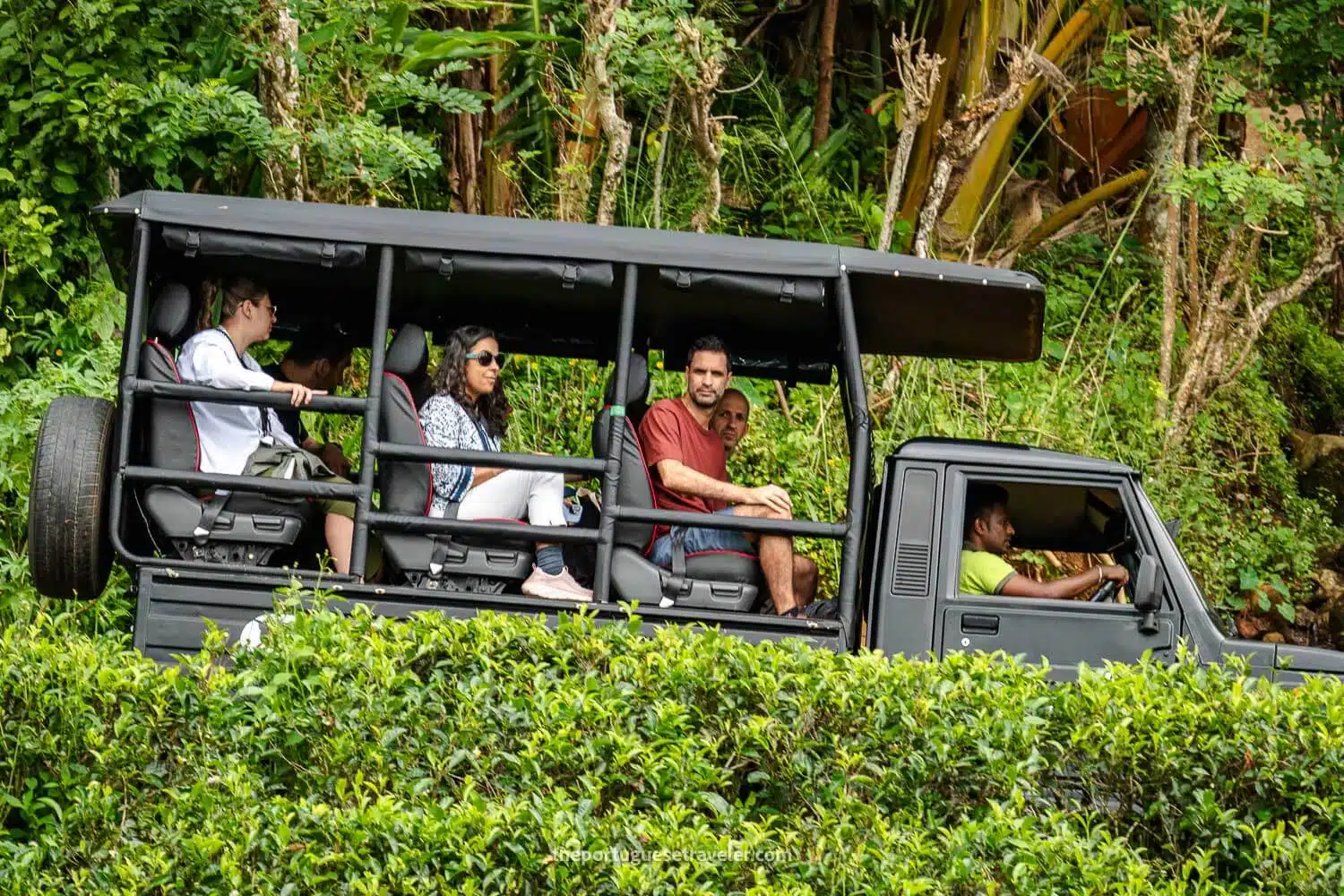
Best Things to Do in the Sinharaja Forest Reserve?
There are countless ways to immerse yourself in the wonders of Sinharaja Forest Reserve:
Jungle Hikes: Take you along winding trails, leading to lush, hidden corners of the forest, where you can enjoy nature’s serenity and connect with the environment.
Waterfall Tours: Are a fantastic way to unwind, offering stunning views of cascading waters and an immersive experience of the forest’s vibrant beauty.
Birdwatching at Dawn: It is a magical experience, as the early morning light reveals rare endemic species and the forest begins to stir with life.
Night Tours: Take you into the forest’s shadowy depths, offering a glimpse of nocturnal wildlife such as amphibians, reptiles, and insects.
Butterfly Watching: Provides a calm, quiet opportunity to admire the colorful species that gather in the forest’s open spaces.
Photography Tours: Capture the essence of the reserve’s diverse wildlife, plants, and sweeping landscapes.
Beyond the forest, nearby villages and tea plantations await exploration.
Tea Plantation Tours: Reveal the intricate process behind local tea production, paired with breathtaking vistas.
Village Visits: Offer a fascinating glimpse into traditional life and customs.
A two-day itinerary could start with an adventurous jungle hike and waterfall visit on day one, followed by early morning birdwatching and a relaxing evening by the fireplace at the lodge. Each day in Sinharaja brings new opportunities to embrace the natural world.
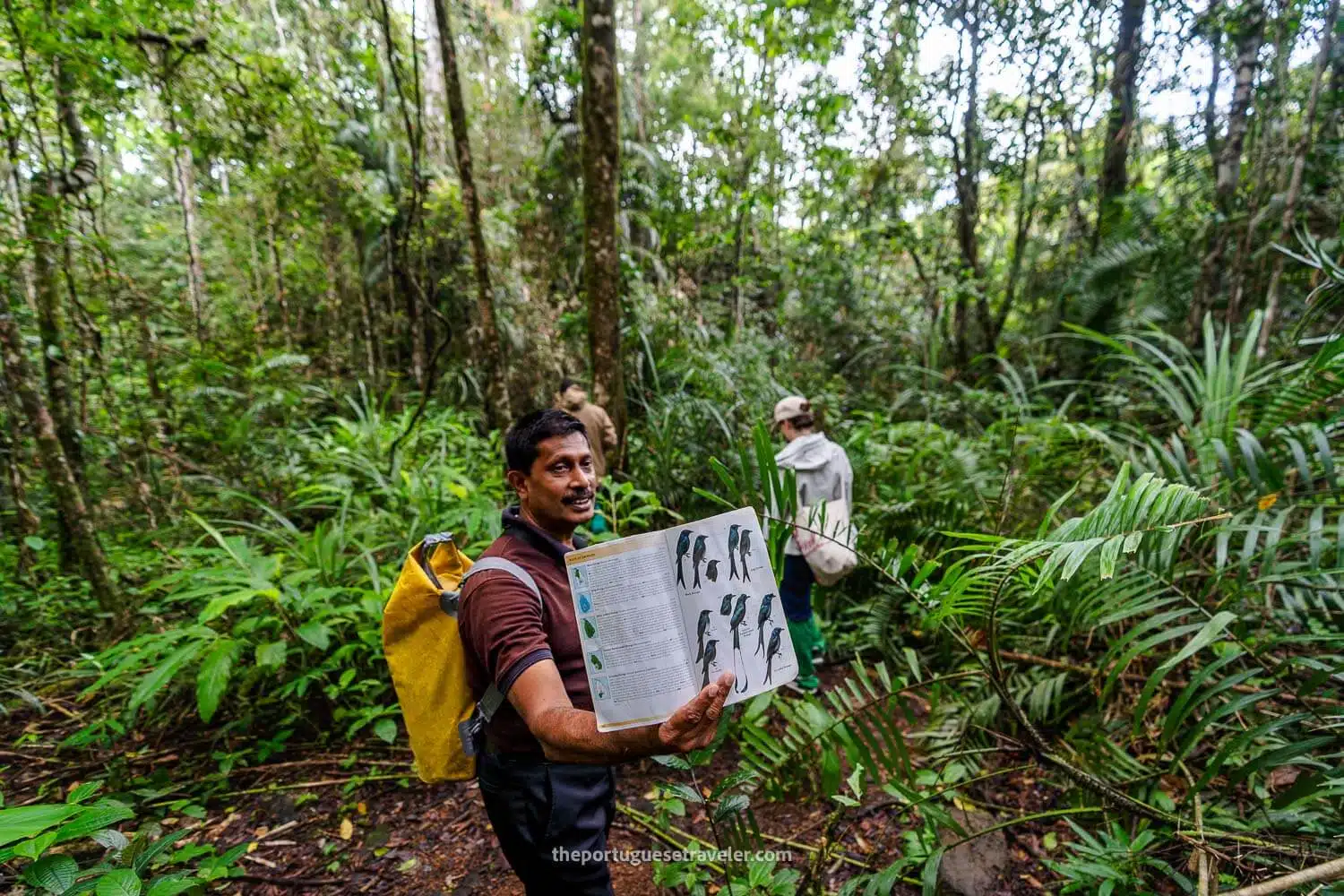
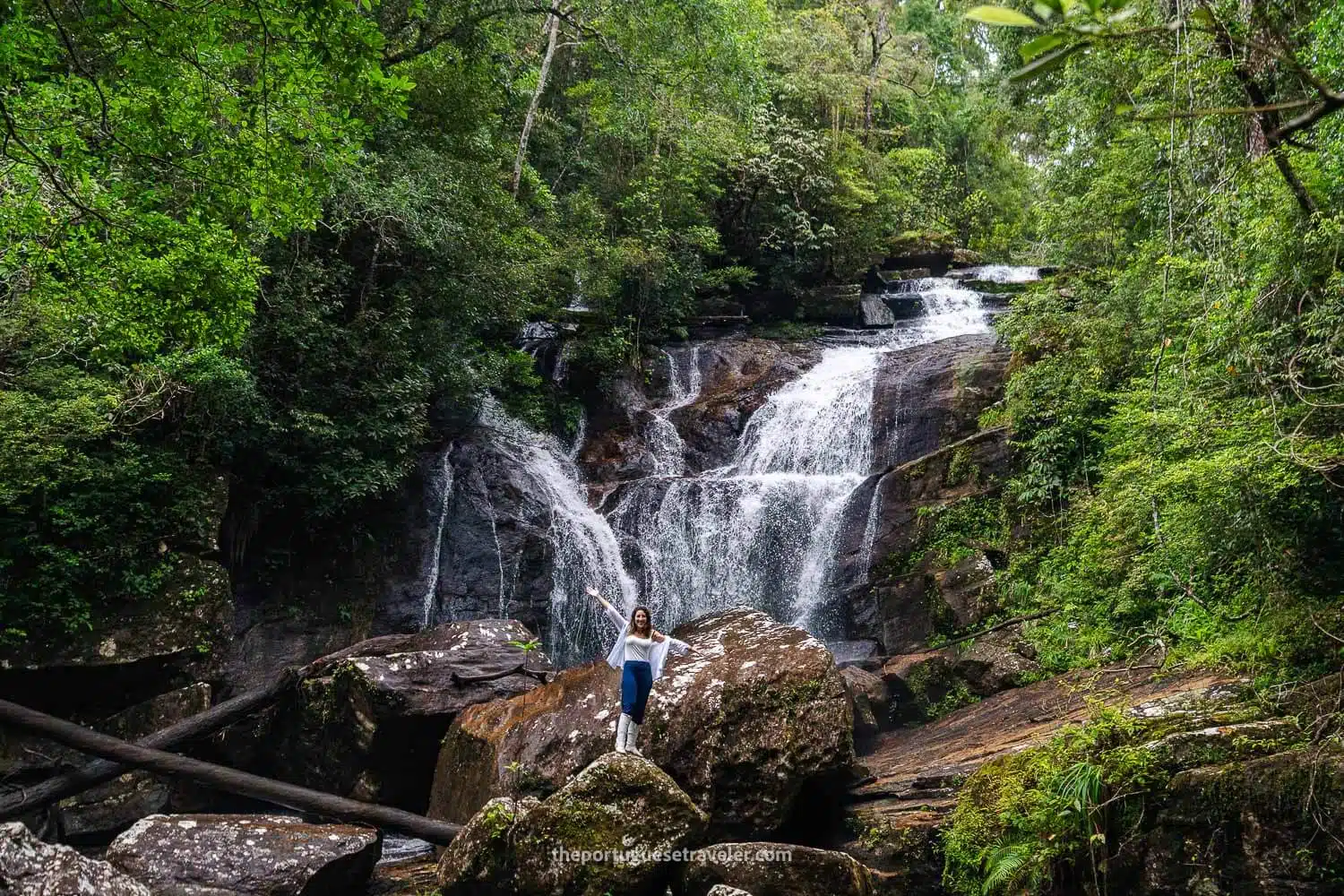
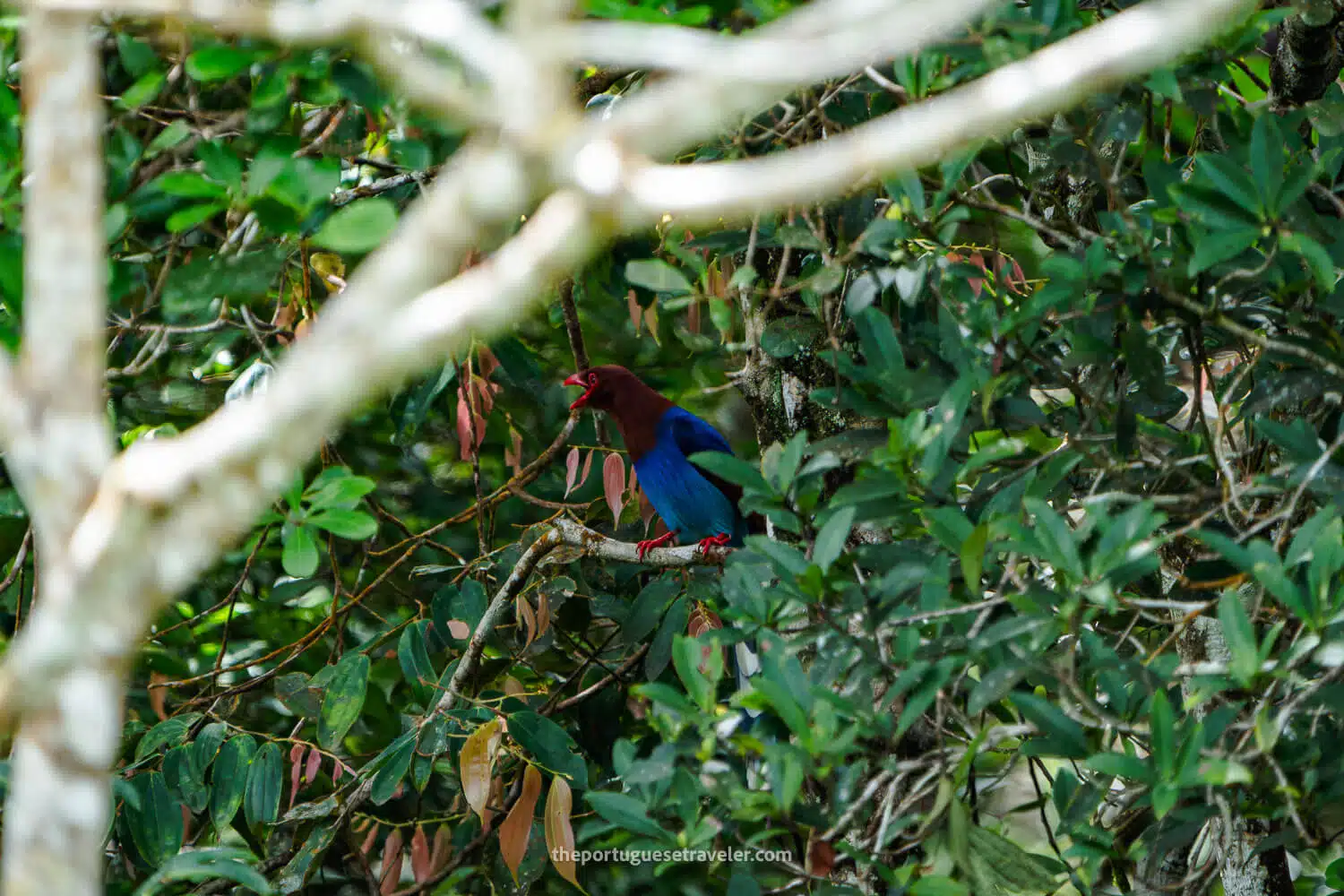
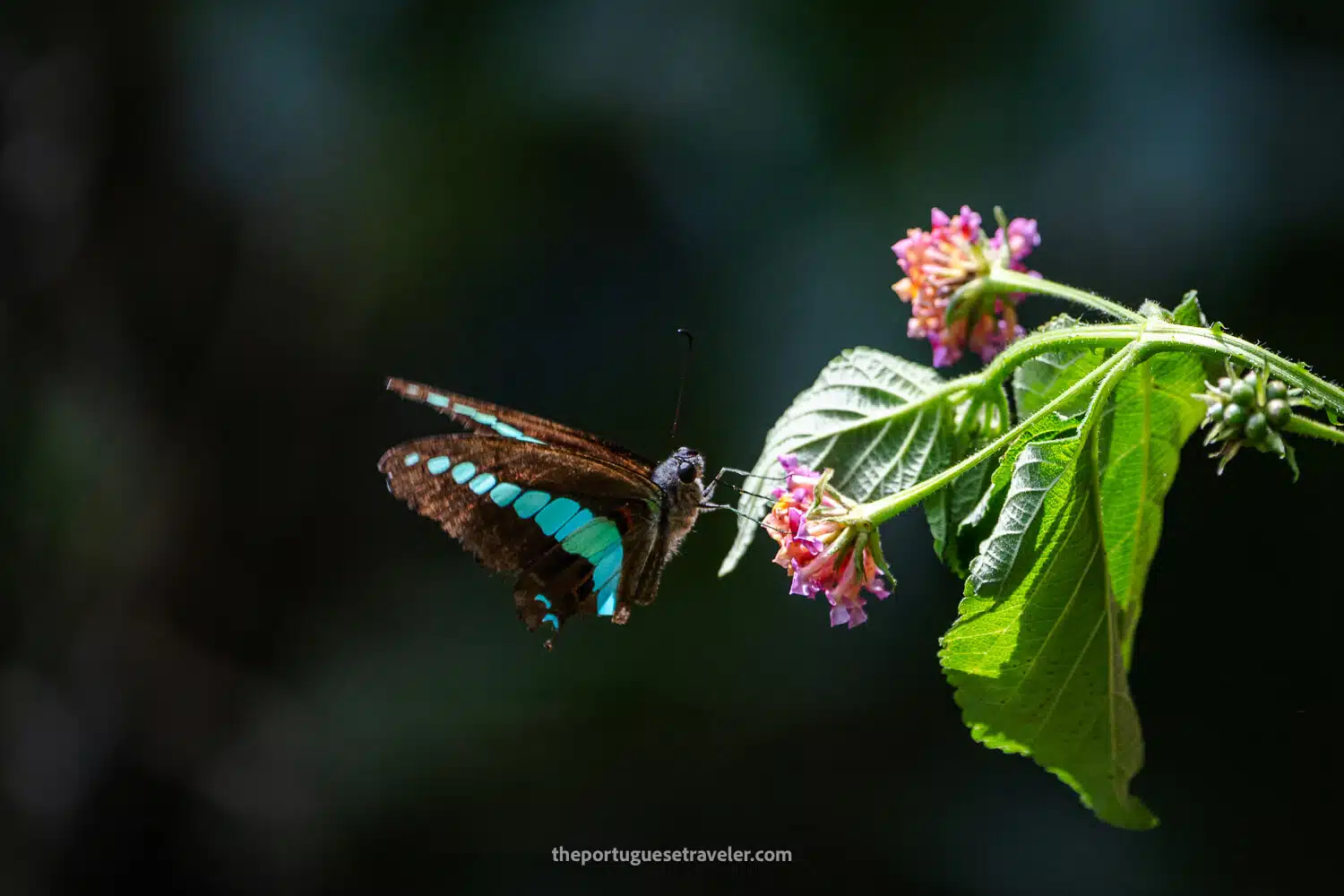
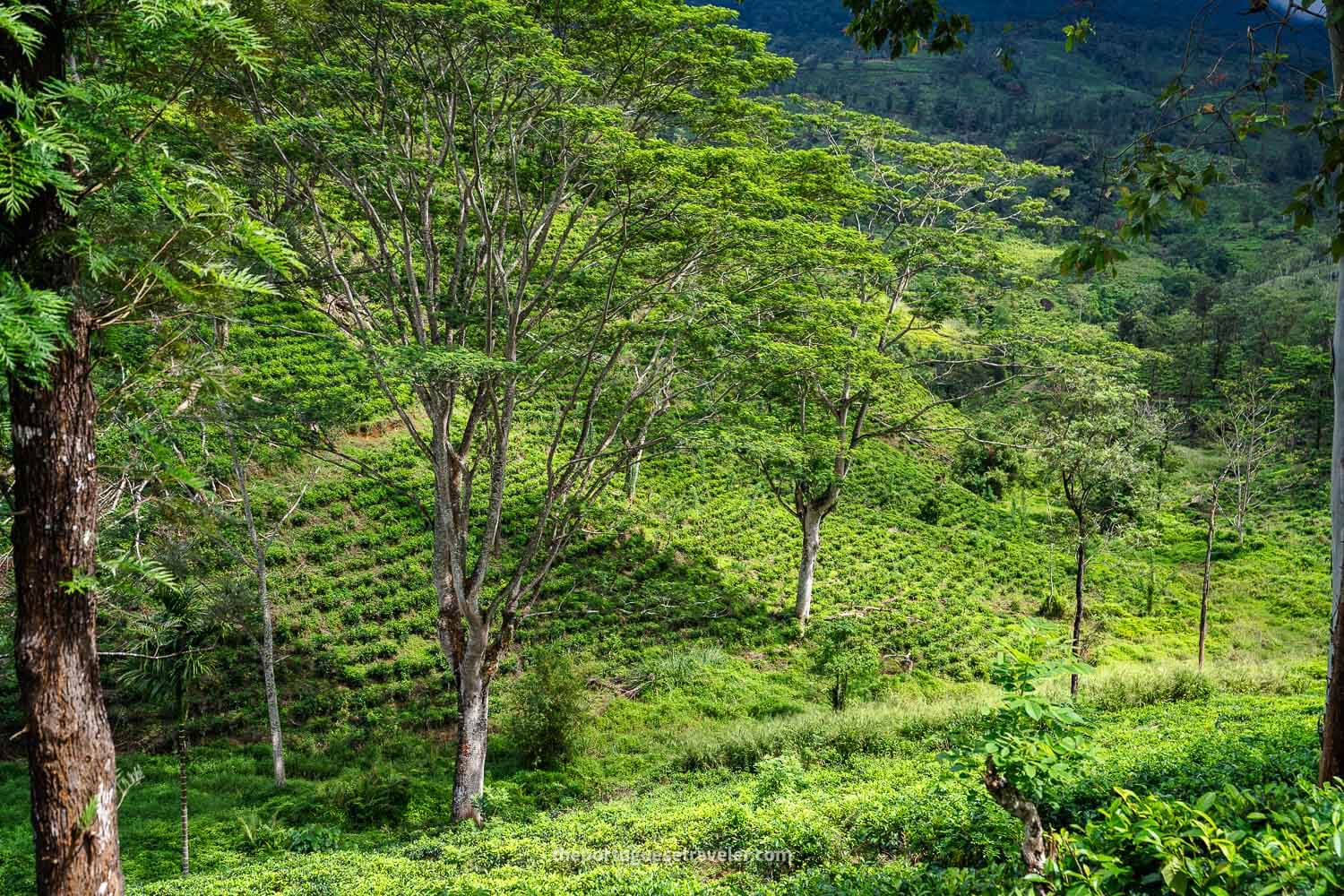
What Animals Can I Find in the Sinharaja Forest Reserve?
Sinharaja Forest Reserve is a paradise for birdwatchers, home to a variety of endemic species. Among the highlights are the Sri Lanka Blue Magpie, Red-faced Malkoha, Yellow Fronted Barbet, Sri Lanka Hanging Parrot, and Sri Lanka Crested Drongo. The forest also hosts many other birds like the Orange Billed Babbler, Malabar Trogon, Peacocks, Black-naped Monarch, Serendib Scops Owl, and Spot Winged Thrush.
The reserve’s mammals include the Purple-faced Langur, Toque Macaque, Sri Lankan Giant Squirrel, and the Sinharaja Shrew. The elusive Red Slender Loris is also found in the forest, active at night. Rare and endangered species like the Sri Lankan Leopard and the critically low-population Sri Lankan Elephant are also present, though sightings are extremely rare.
Reptiles like the Green Pit Viper, Hump-nosed Viper, Sri Lankan Long-Nosed Whip Snake, Forsten’s Cat Snake, and the Hump-nosed Lizard roam the reserve, along with tree-dwelling amphibians such as the Common Hourglass Tree Frog. Invertebrates, including the stunning Sri Lankan Birdwing Butterfly, Sri Lanka Scorpion, Ghost Ornamental Tarantula, Black Tipped Flashwing, and Sri Lanka Millipede, add to the biodiversity.
With such a high concentration of endemic, rare, and endangered species, Sinharaja is a vital and protected natural treasure. However, visitors should be aware that leeches are also present and can be an annoying nuisance when exploring the forest.
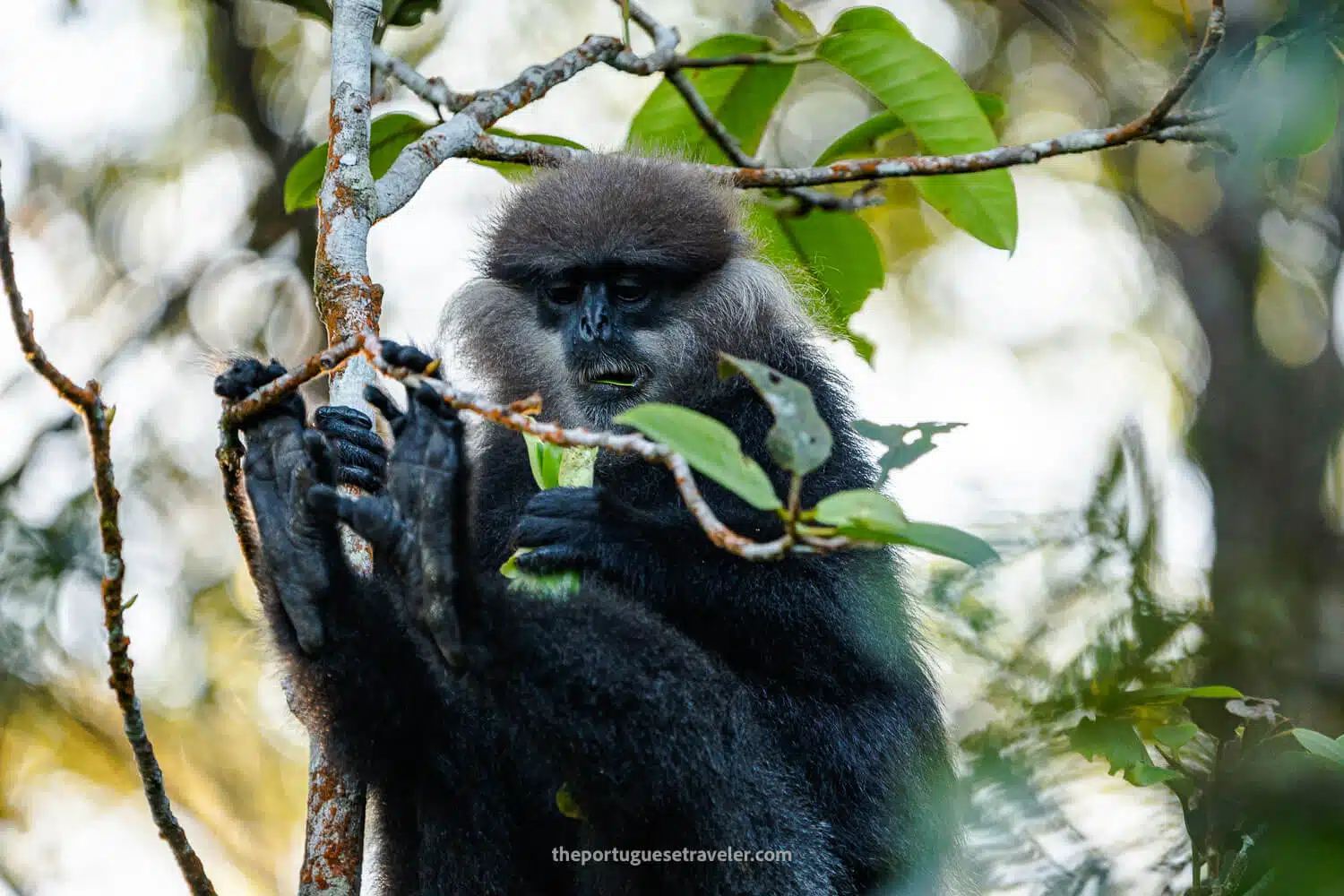
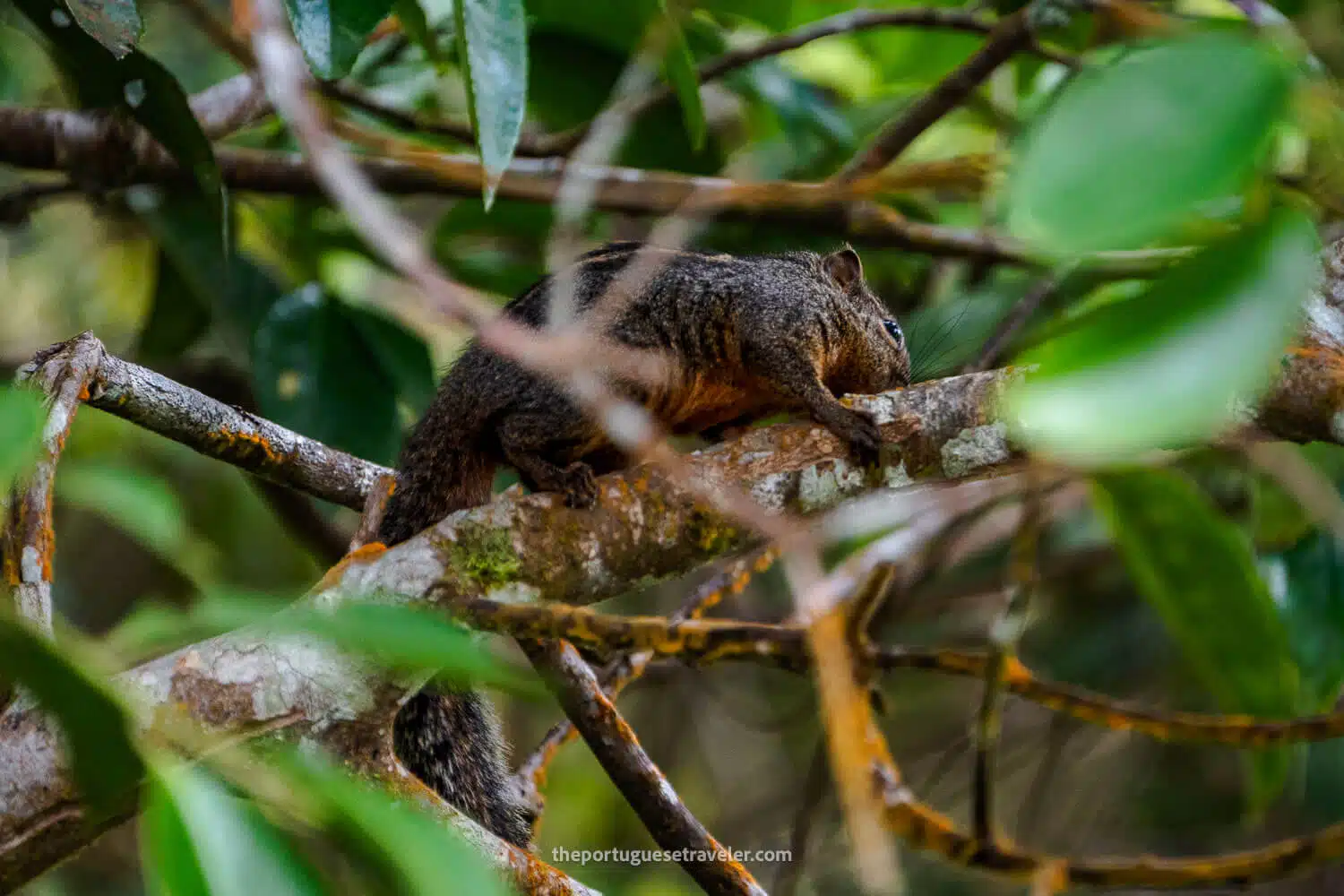
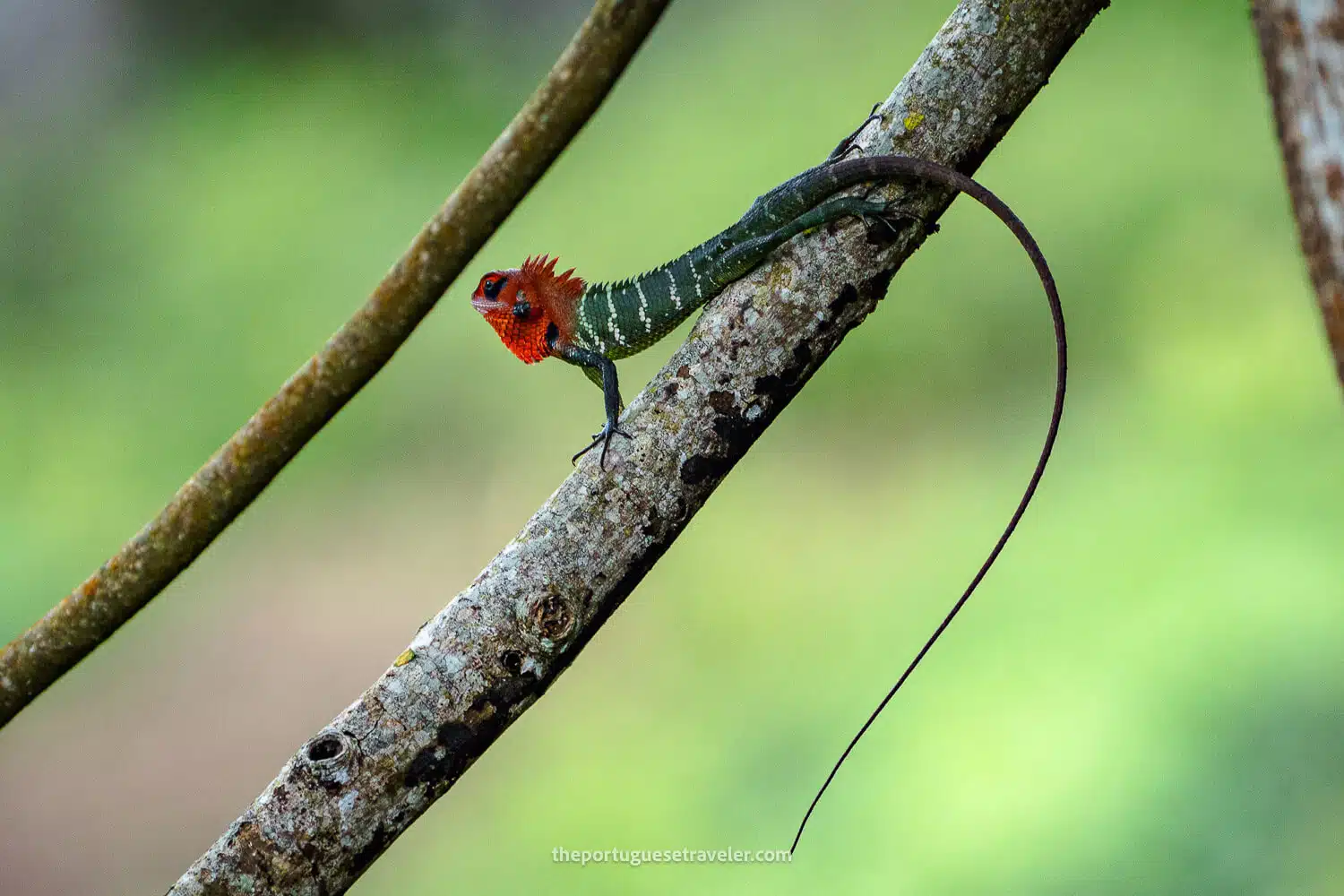
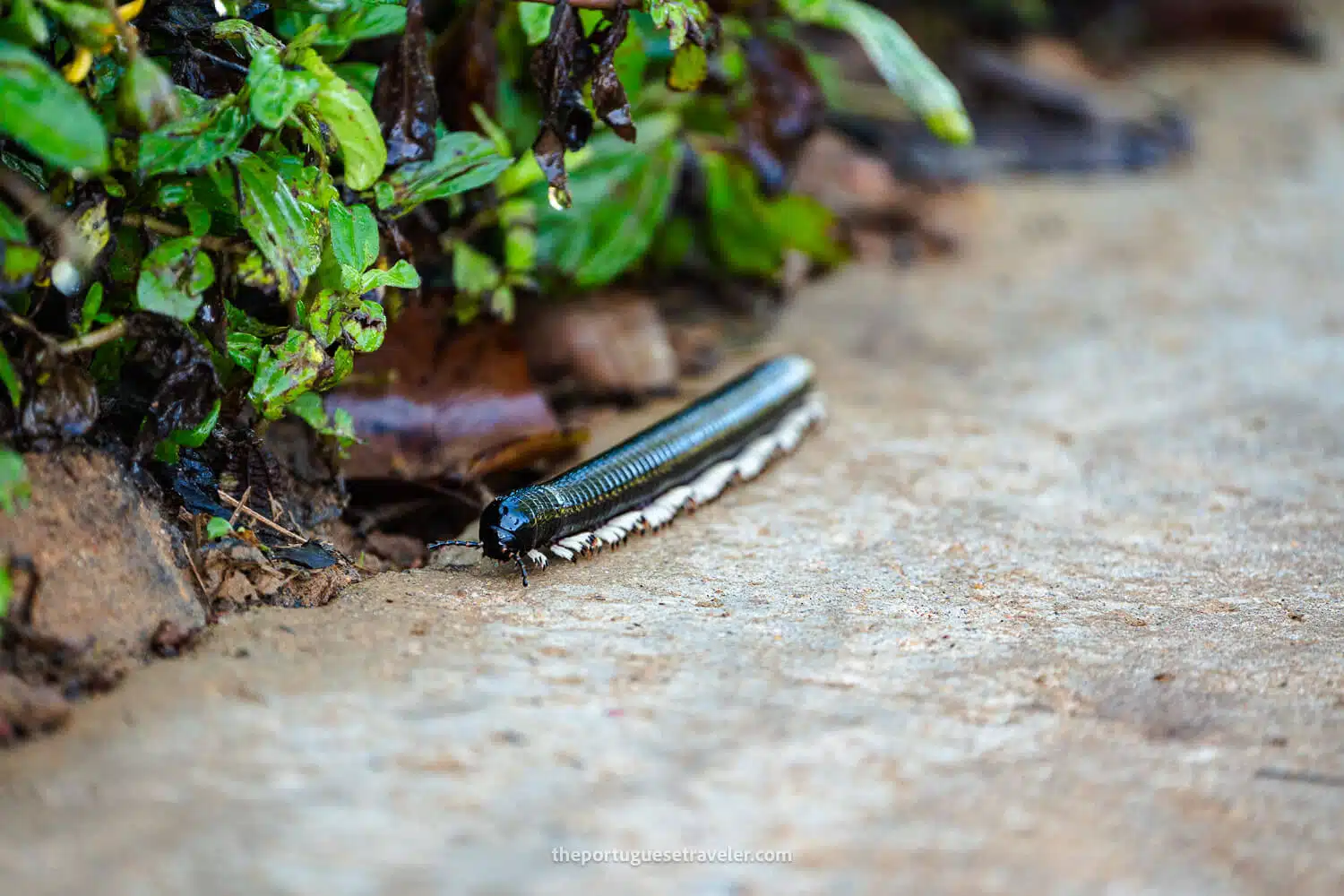
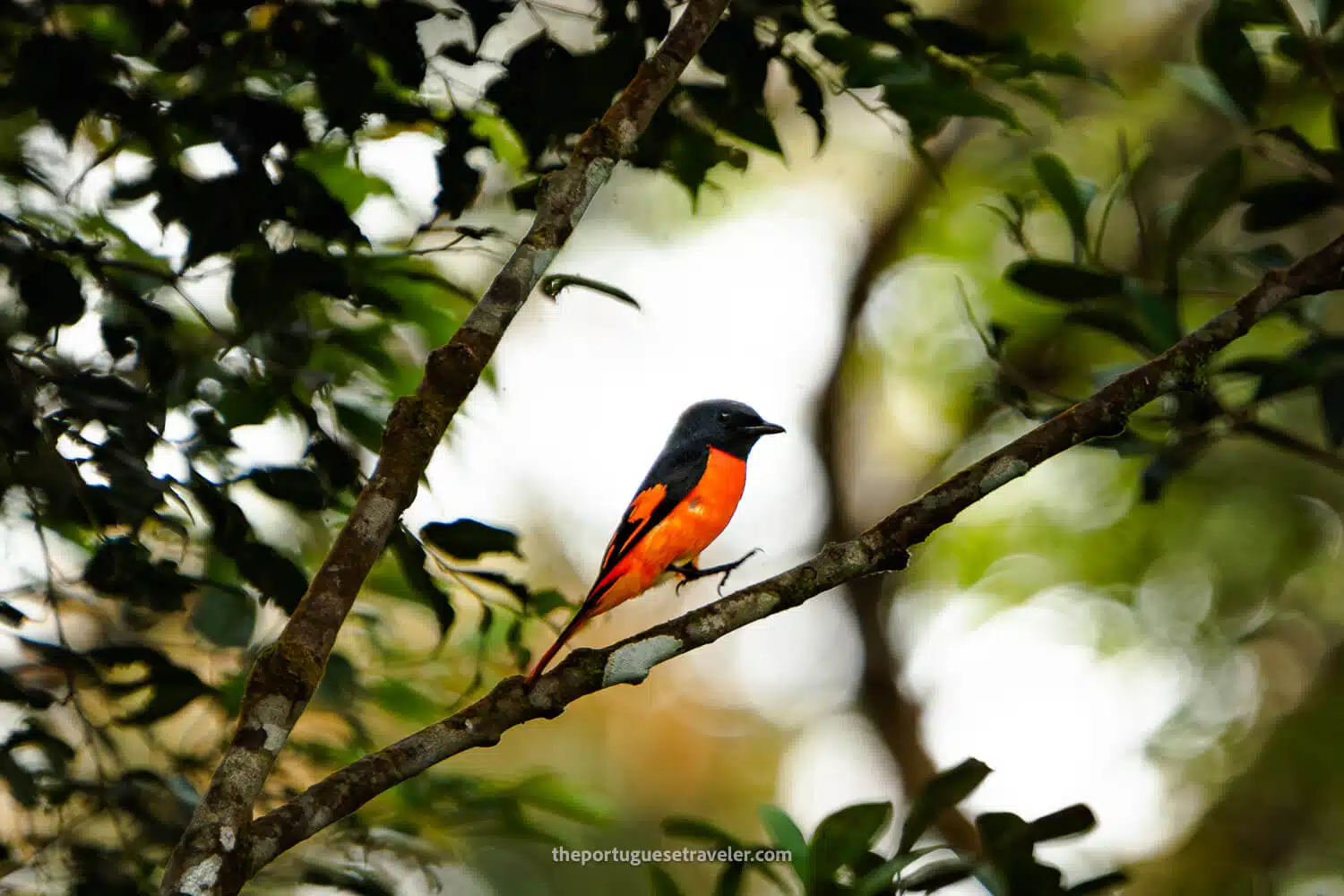
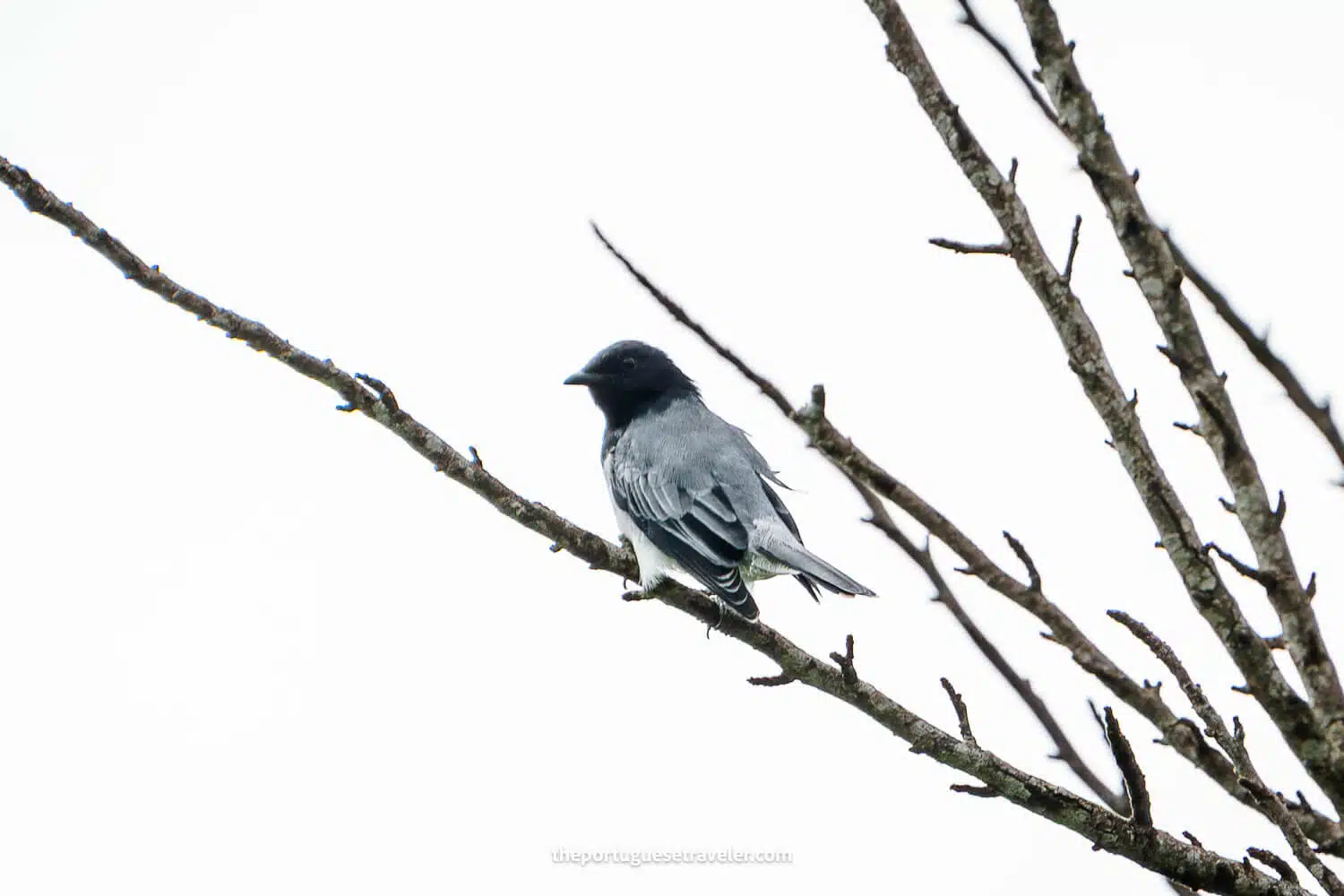
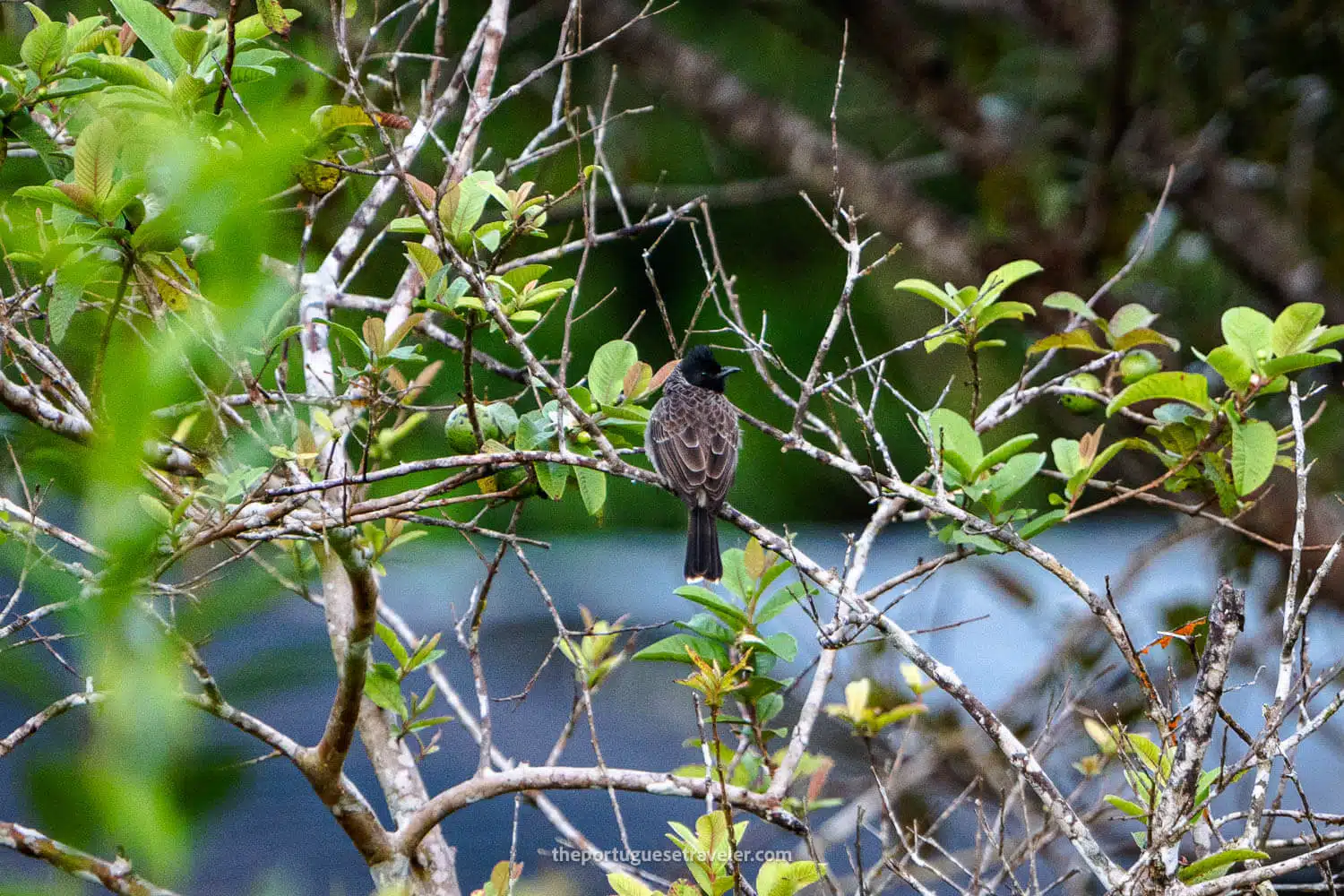
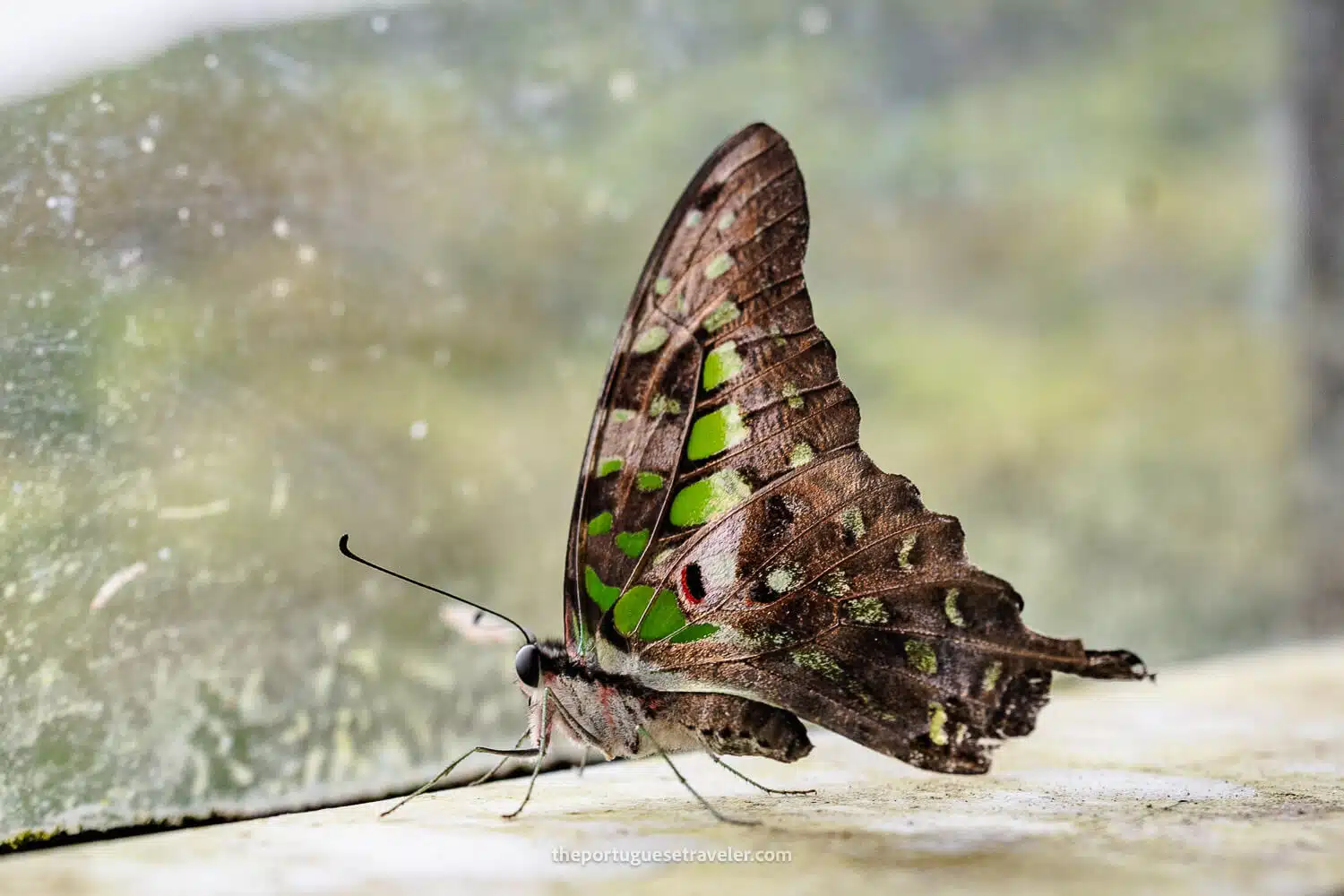
Safety Tips for Visiting Sinharaja Forest Reserve
The Sinharaja Forest Reserve reserve is home to a stunning array of wildlife, but with that comes the reality that some of these creatures can be unpleasant. Leeches, for example, are a common sight, and they can attach themselves without you even realizing it.
The trails, while beautiful, can be tricky and dangerous. With slippery rocks, fast-moving streams, and even waterfalls along the way, it’s easy to lose your footing, and a fall could result in injury. There are also thorny branches and sharp plants that might scratch or even cause more significant harm if you’re not careful.
It’s essential to stay alert and prepared when hiking in Sinharaja. While the forest offers an unforgettable adventure and an immersive experience with nature, there are certainly risks involved. The key is to go in with caution, wear proper gear, and have a local guide to help navigate the challenging terrain. And, just to be extra cautious, I always recommend travel insurance – like Heymondo – to give you peace of mind in case of any unexpected situations. With a little preparation, you can safely explore and enjoy all the beauty that Sinharaja has to offer.
How to Deal with Leeches in the Sinharaja Forest Reserve
During our stay at the Rainforest Ecolodge, we were provided with helpful recommendations for handling leeches in the Sinharaja Forest Reserve. While leeches are not poisonous, they can cause mild itching or rashes. Here’s a breakdown of the precautions, removal methods, and treatment for leech bites:
Precautionary Measures:
To avoid leech bites, follow these preventive steps:
- Walk briskly through the forest and keep a close eye on your legs.
- Always cover your skin with clothing, and tuck your shirt into your trousers or skirt.
- Wear leech socks that cover the bottom of your trousers and securely tie them.
- Opt for rubber boots instead of regular shoes, and avoid loose clothing that could touch the ground.
- Apply a long-lasting leech repellent before heading out and reapply it if necessary.
Removal of Leeches:
If a leech attaches itself to you:
- Don’t forcefully pull it off, as this can cause infection by leaving behind the teeth of the leech.
- To gently remove the leech, try using soap, salt, or a tobacco leaf. These methods will help the leech detach itself.
- Alternatively, you can spray salt or soap solution directly onto the leech.
- The leech will detach naturally once it has satiated itself with blood, usually after 20 minutes.
Treatment:
After the leech detaches, here’s what you should do:
- Clean the bite area with soap and water and bandage it if necessary.
- If the area continues to bleed due to the leech’s blood-thinning agents, apply pressure to stop it.
- To reduce itching and discomfort, use an antihistamine or a cold pack.
- If you experience a serious allergic reaction, seek medical attention immediately.
Important Reminder:
It’s always a good idea to have travel insurance – like Heymondo – to ensure you’re covered for any unexpected incidents, including those related to leech bites while traveling.
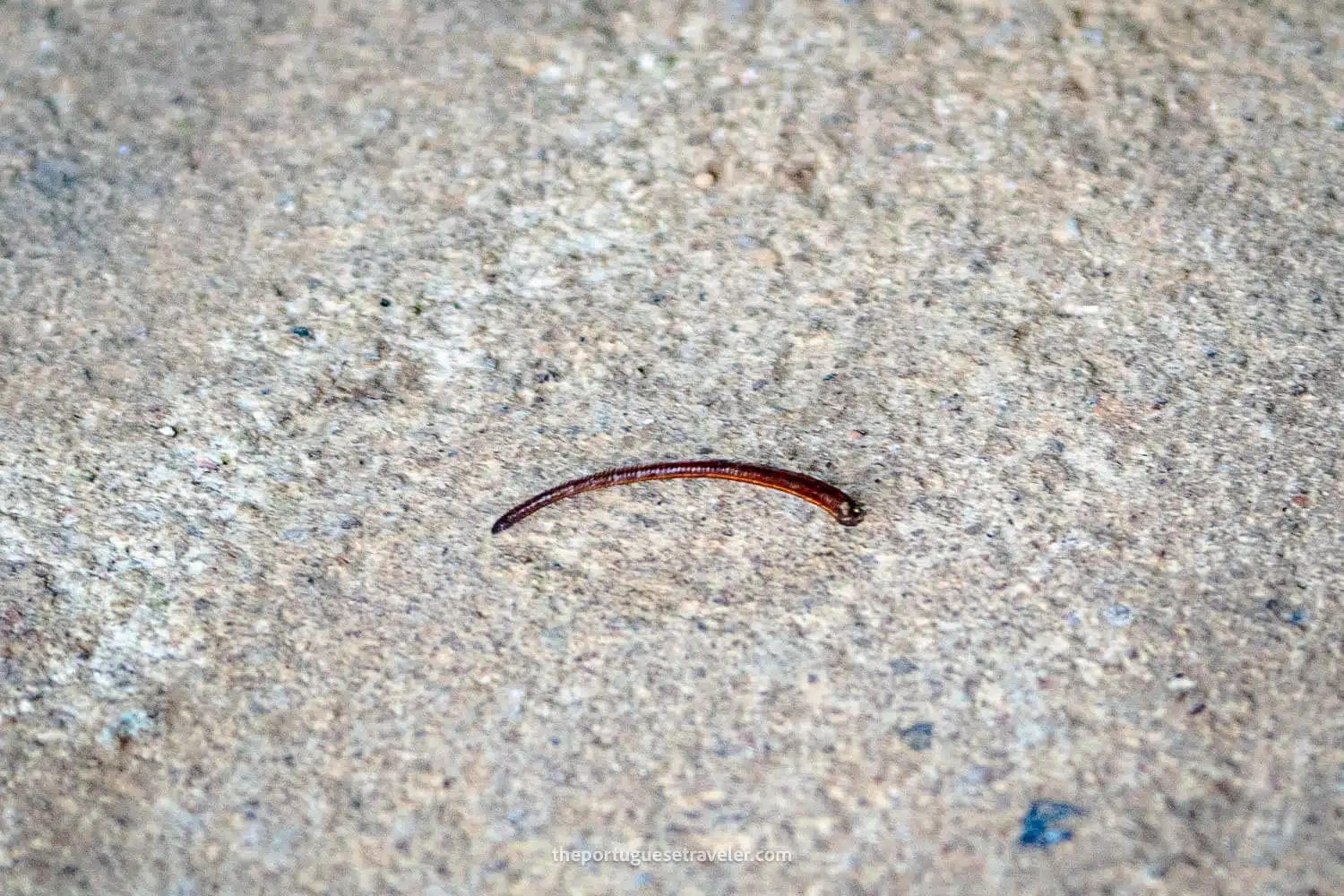
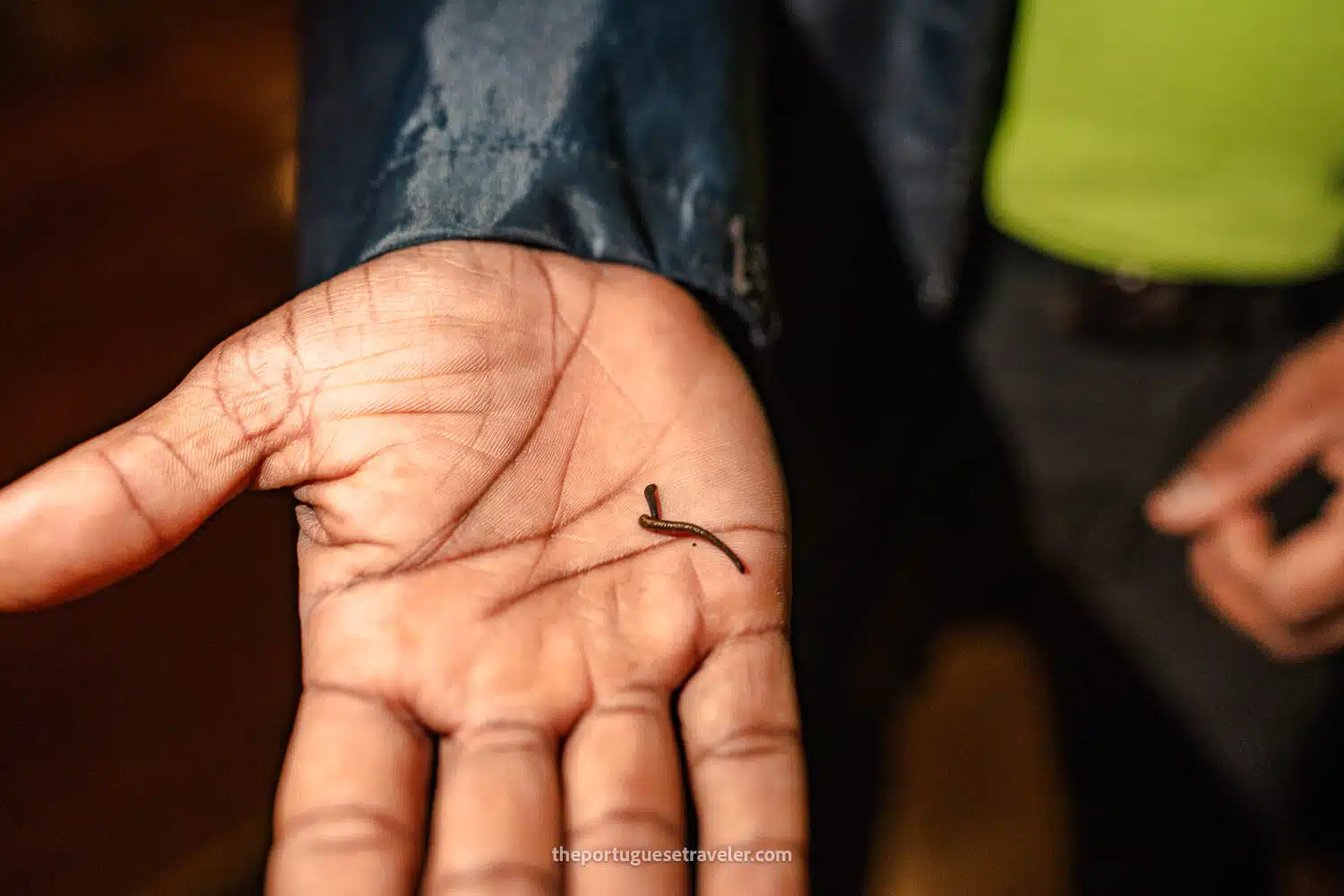
Where to Eat and Drink in Sinharaja Forest Reserve?
Regarding food and drinks at the reserve, there are two main options:
- Bring Your Own: If you’re visiting solo with a guide or just trekking for the day, it’s important to bring your own food and drinks. There are no restaurants or cafés inside the reserve, so make sure to pack enough water and snacks for your hike.
- Stay at a Lodge: If you’re staying at one of the lodges in, or near the reserve, everything is taken care of. Lodges typically have on-site restaurants and provide meals, drinks, and packed lunches for excursions. You can expect great local food and refreshments throughout your stay, making it a convenient and hassle-free option.
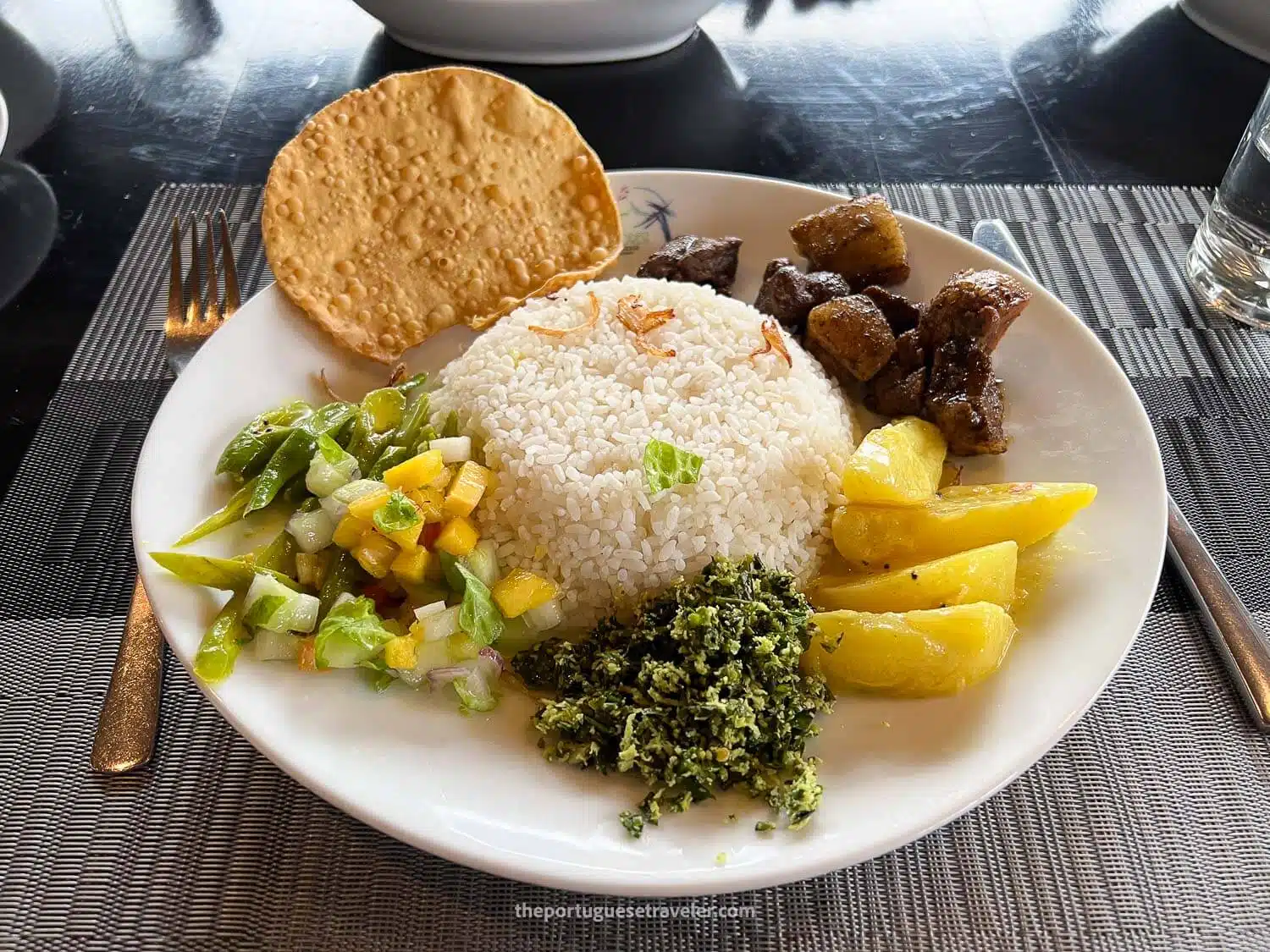
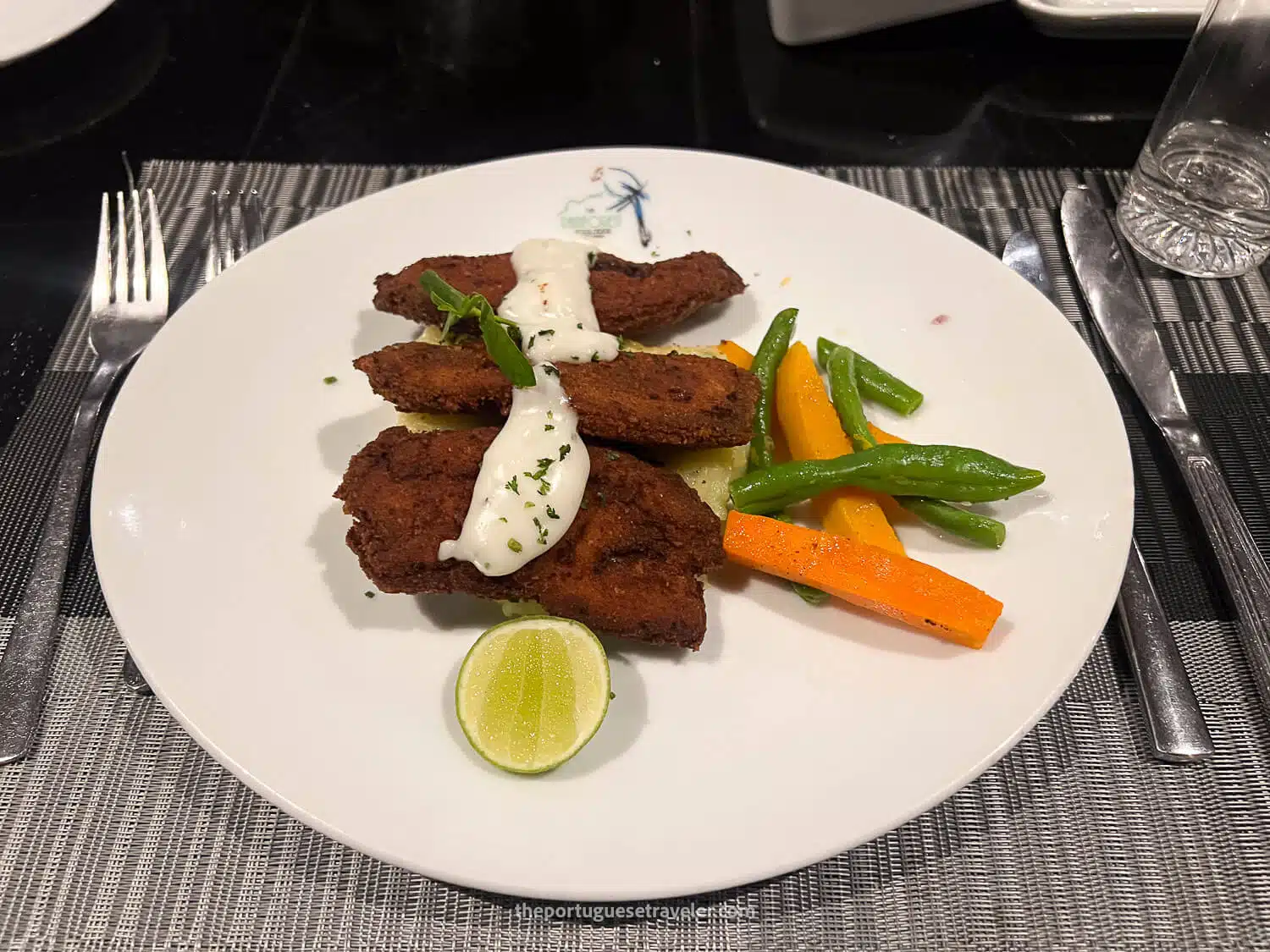
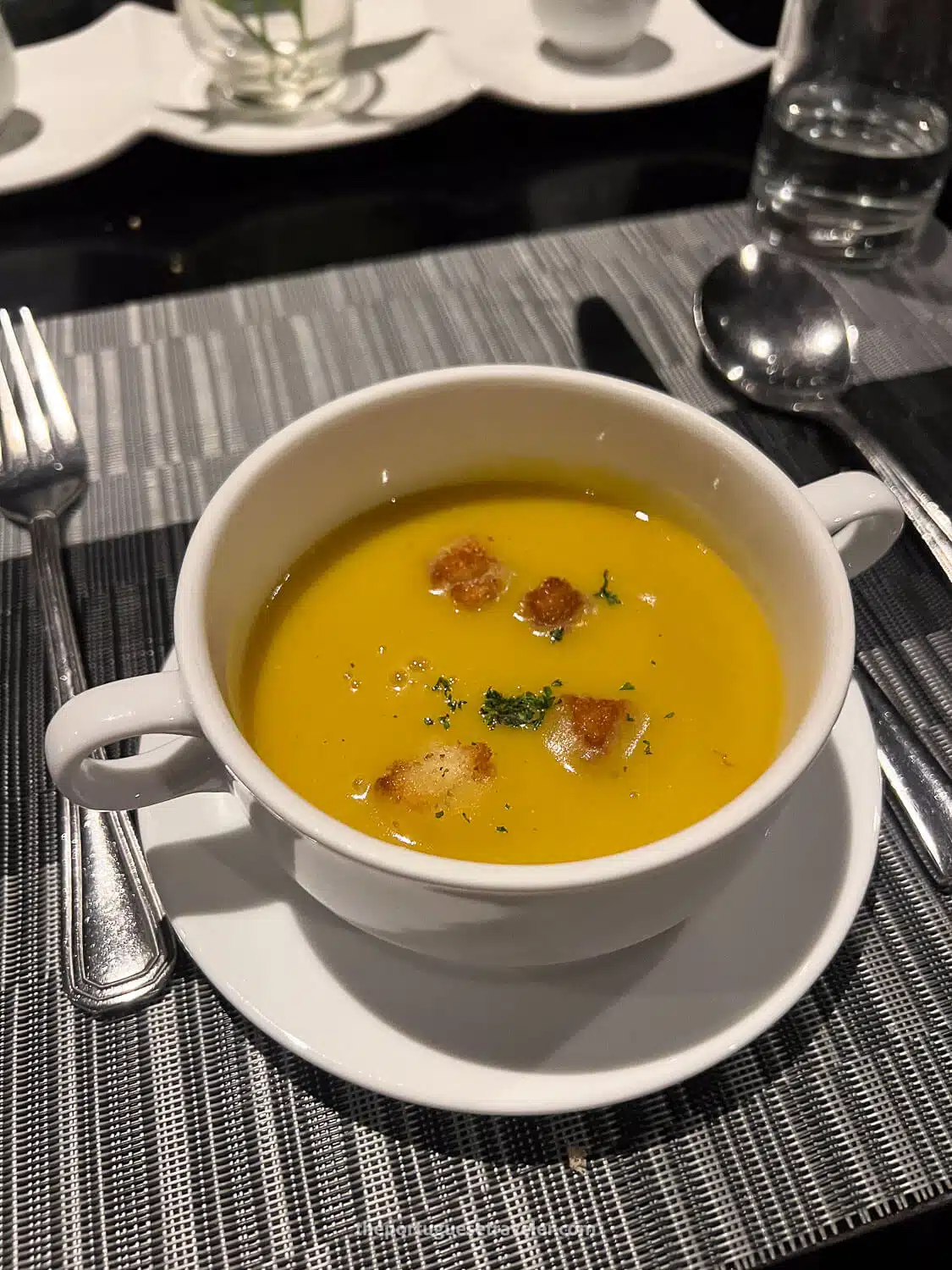
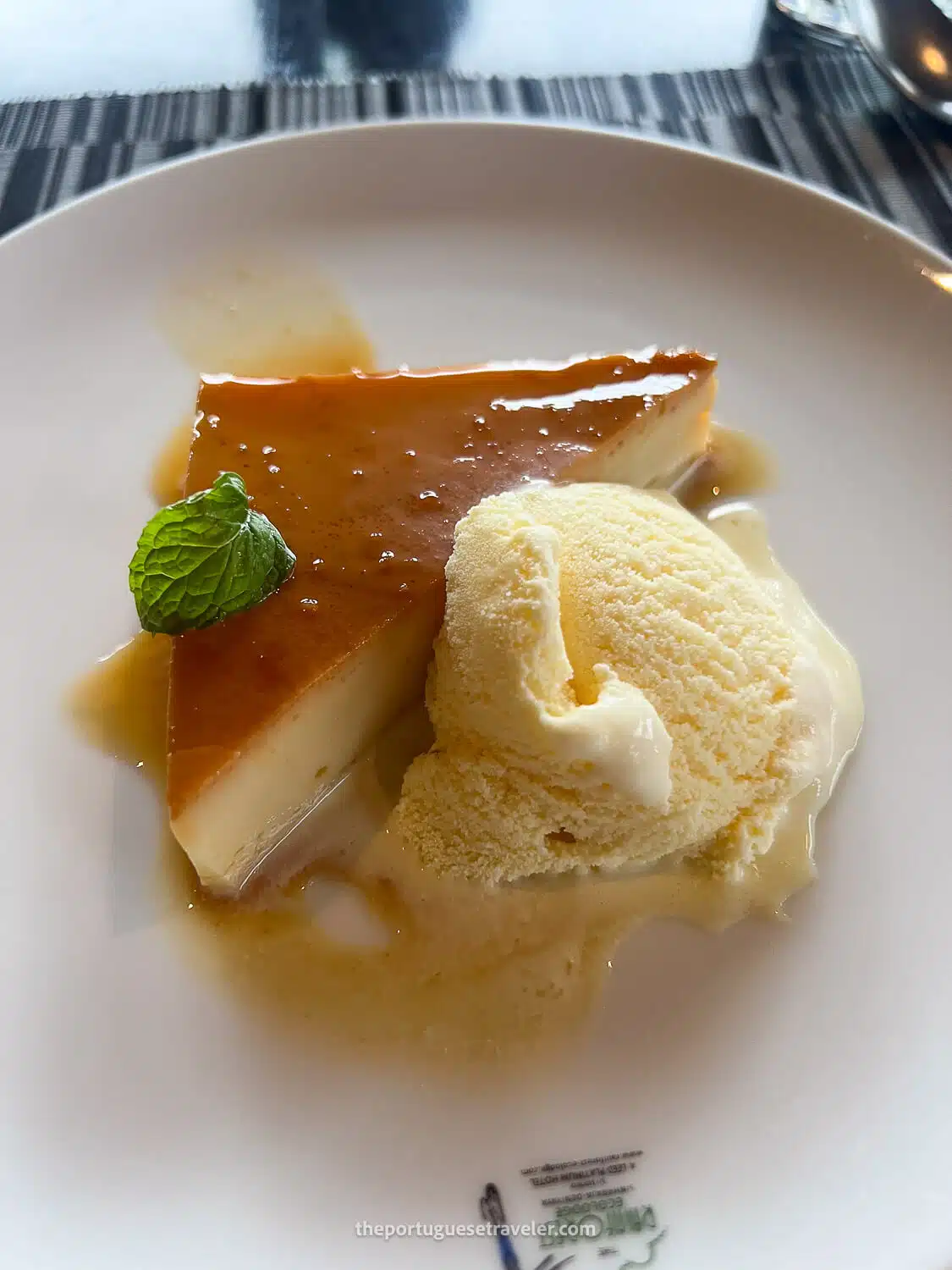
Where to Stay in the Sinharaja Forest Reserve?
When visiting Sinharaja Forest Reserve, there are multiple entrances to the reserve, meaning you can stay in different areas depending on your preferences and the experience you’re looking for.
For our stay, as part of a press trip organized by the tourism board, we were hosted at the Rainforest Eco Lodge, which offered an incredible immersion in nature. As an ecolodge, we did encounter insects and small animals inside the rooms, but that’s all part of the experience when staying in the heart of the rainforest. Waking up and falling asleep to the sounds of the jungle was truly magical.
The experience was unforgettable, with monkeys, birds, and other wildlife visible right from our windows. The food was excellent, the guides were knowledgeable, and the staff was incredibly friendly. It was a great place to really connect with nature.
After some research, I wasn’t able to find any super-luxurious hotels around Sinharaja that I could personally recommend. Most accommodations in the area tend to be more focused on staying close to nature and offering simple, authentic experiences. For those interested in exploring lodging options around Sinharaja, I’ve included a map below with various places to stay near the reserve’s entrances.
If you’re looking for hotel recommendations in other parts of Sri Lanka, I’ve written three articles that may help guide your choices:
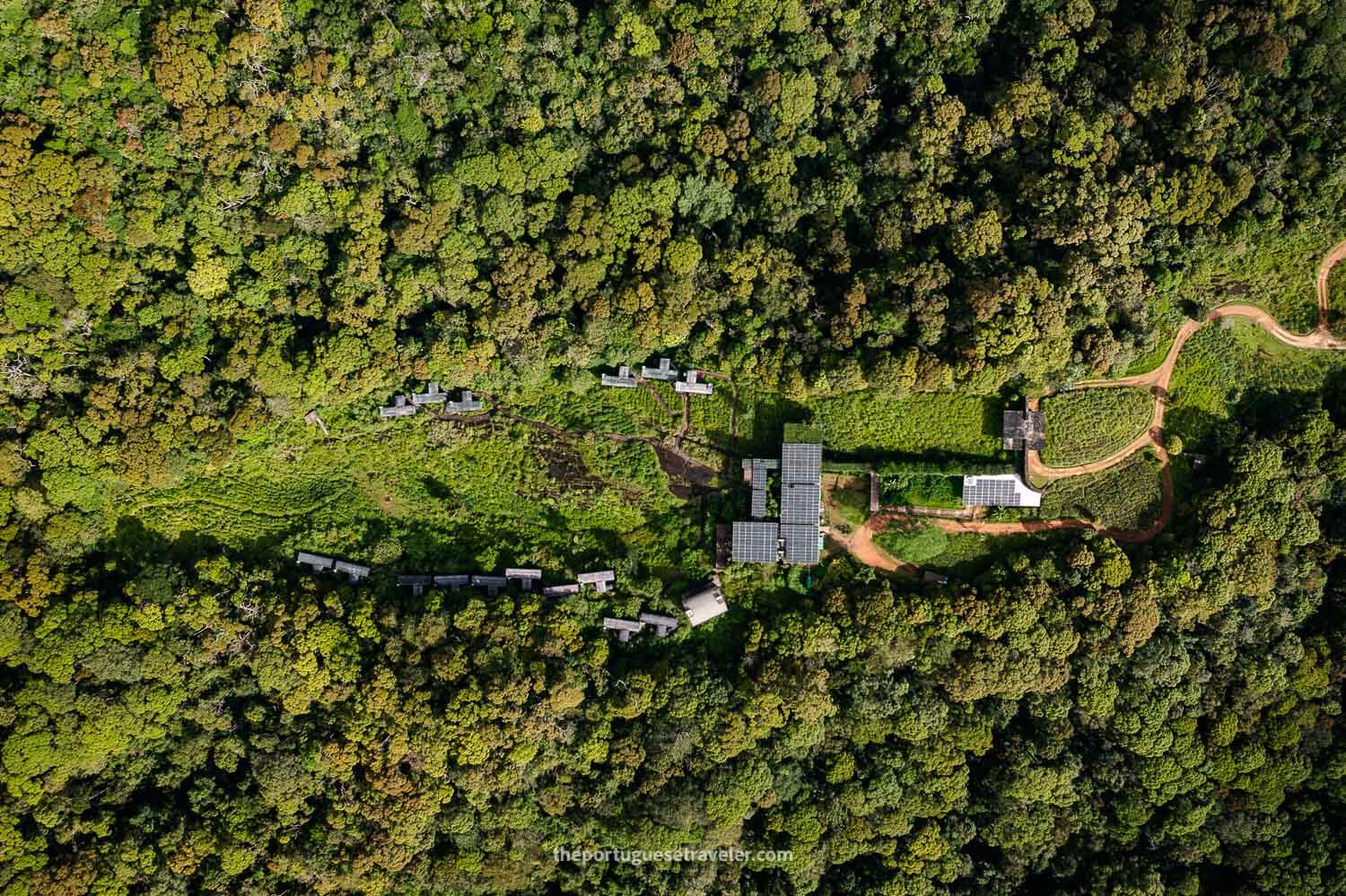
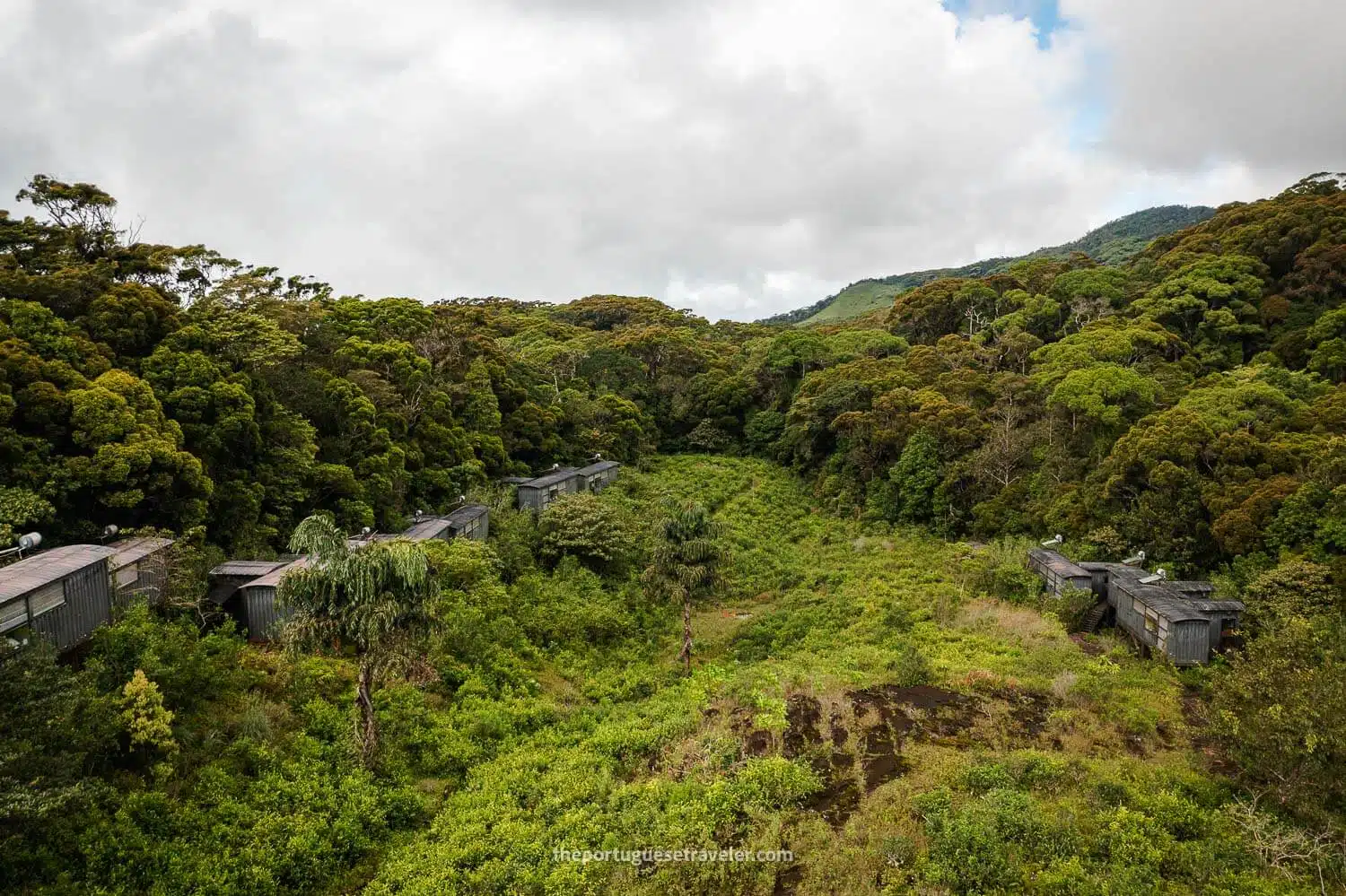
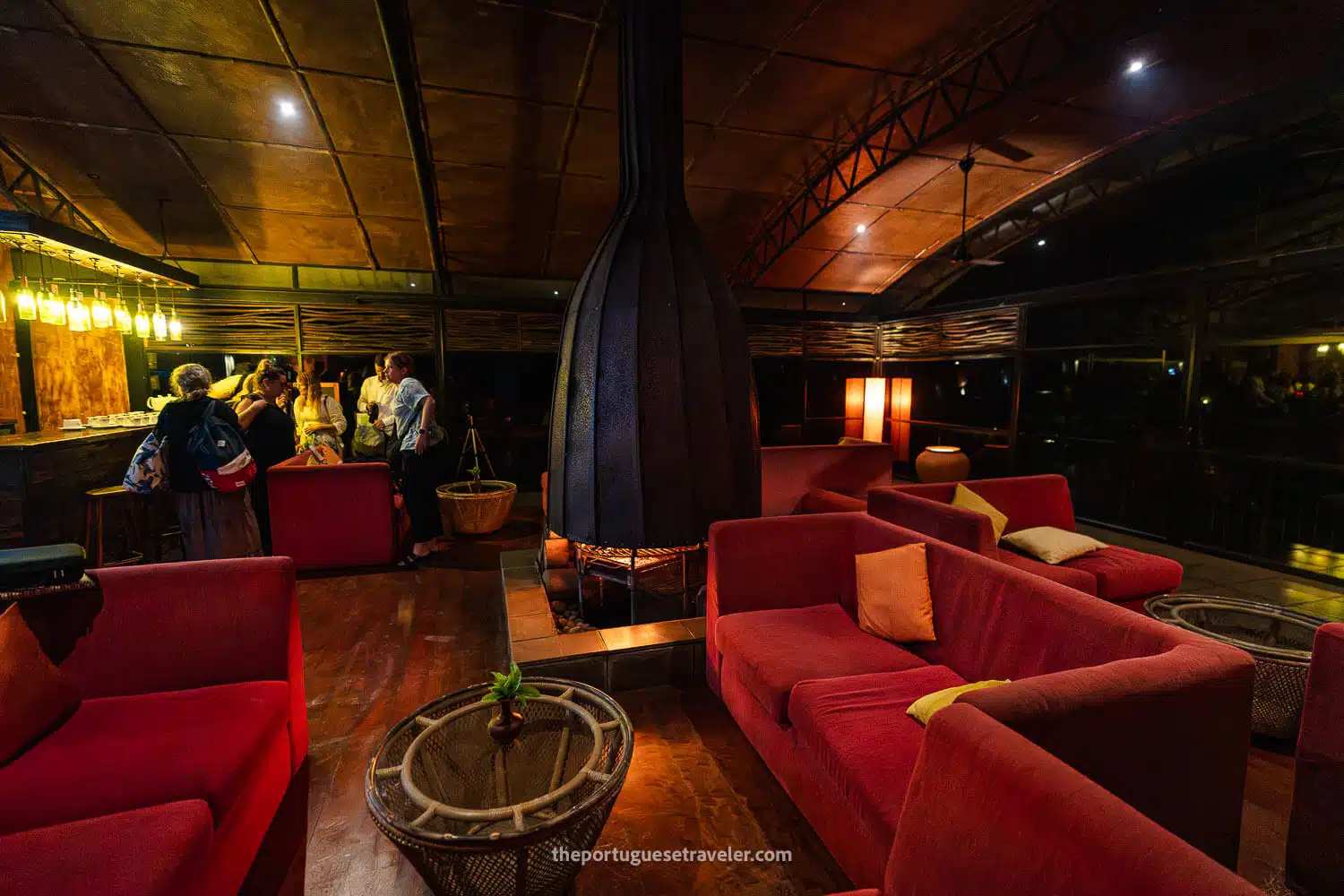
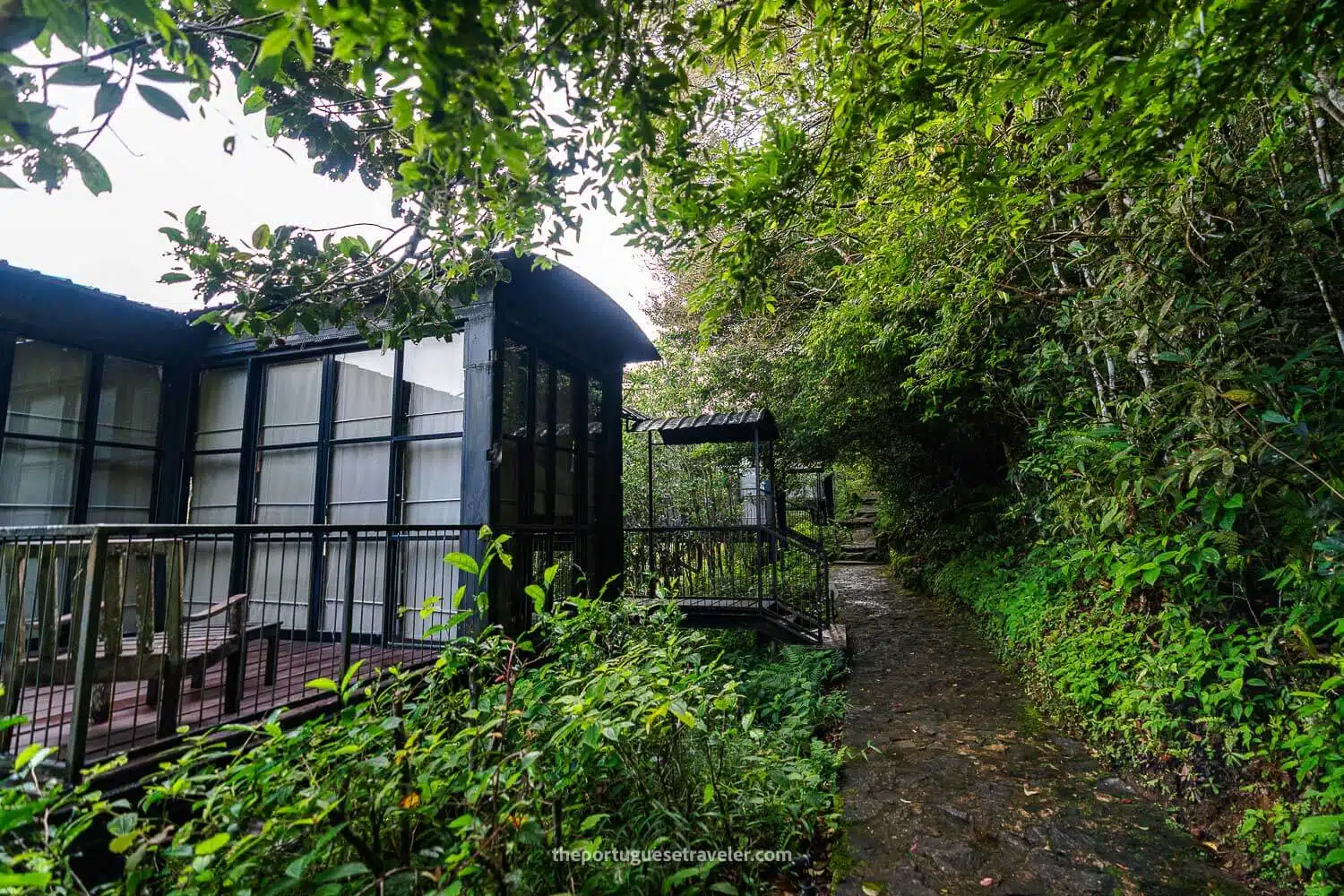
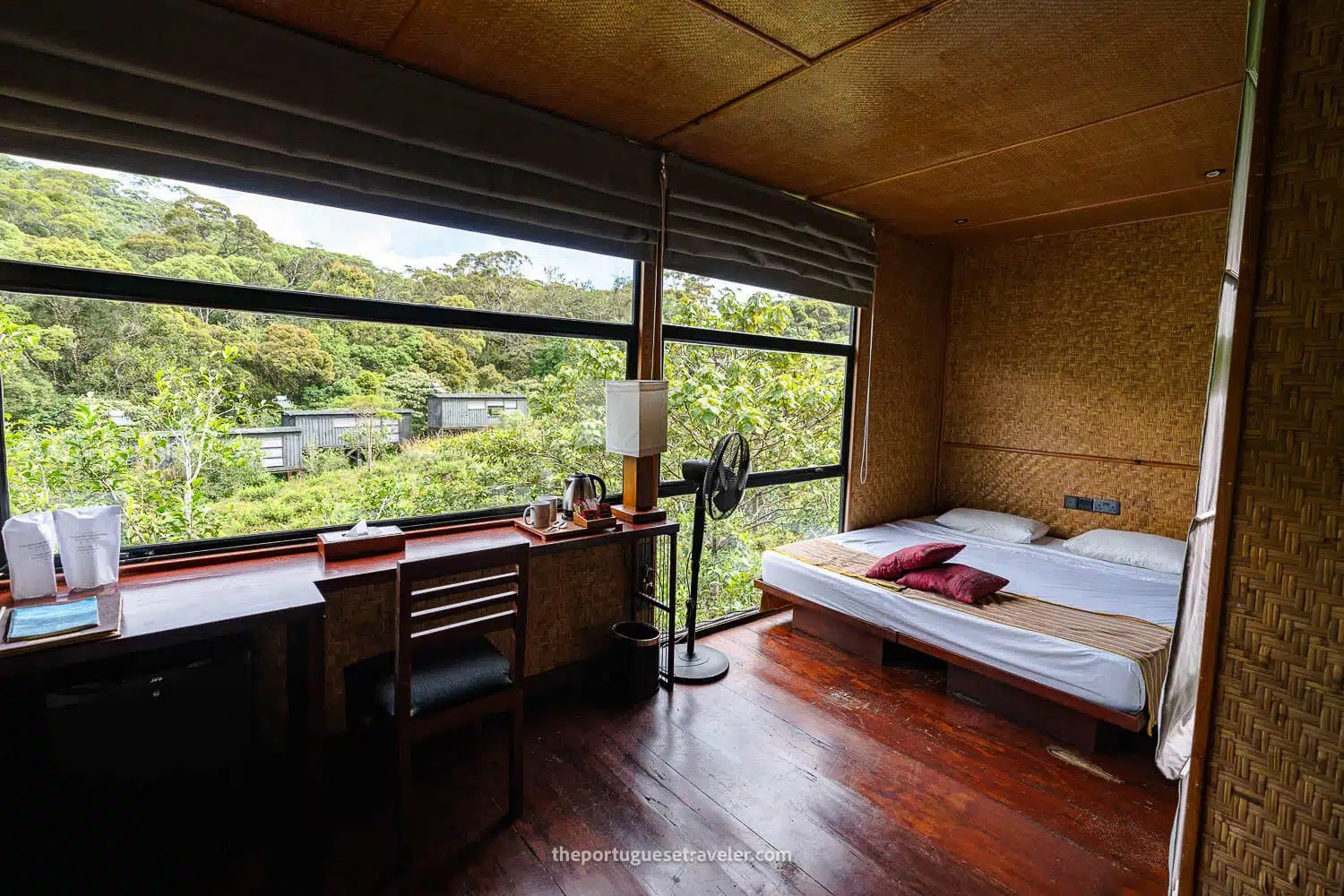
What to Wear in Sinharaja Forest Reserve?
When exploring Rainforests, understanding the clothing needs is crucial, especially considering the level of moisture during the rainy season and the prevalence of mosquitoes. It’s essential to have mosquito-repellent clothing and waterproof gear to protect against the elements. Additionally, opting for light-colored mosquito-repellent clothing and breathable equipment is advisable, given the humid conditions in these forests. If you anticipate encountering mud, consider bringing rubber boots, and for general hiking, sturdy hiking shoes are recommended.
Clothing & Accessories:
- Tshirt: Light-Coloured Breathable T-shirt (Tech or Merino)
- Clothing: Mosquito Repellant Clothes – Shirt and Pants.
- Shoes: Rubber Boots or Hiking Shoes (remove them when crossing rivers, it is safer to go barefoot, I talk from experience)
- Jacket: Waterproof Jacket (Gore-Tex or H2O Technology)
- Shorts: Swimming Clothes
- Dry-fast Towel
- Cap and Sunglasses (optional as most of the time you’re in the jungle)
- Change of Clothes
Useful Extras:
- First-Aid Kit
- Food / Snacks
- Thermos or Water-filtering Bottle
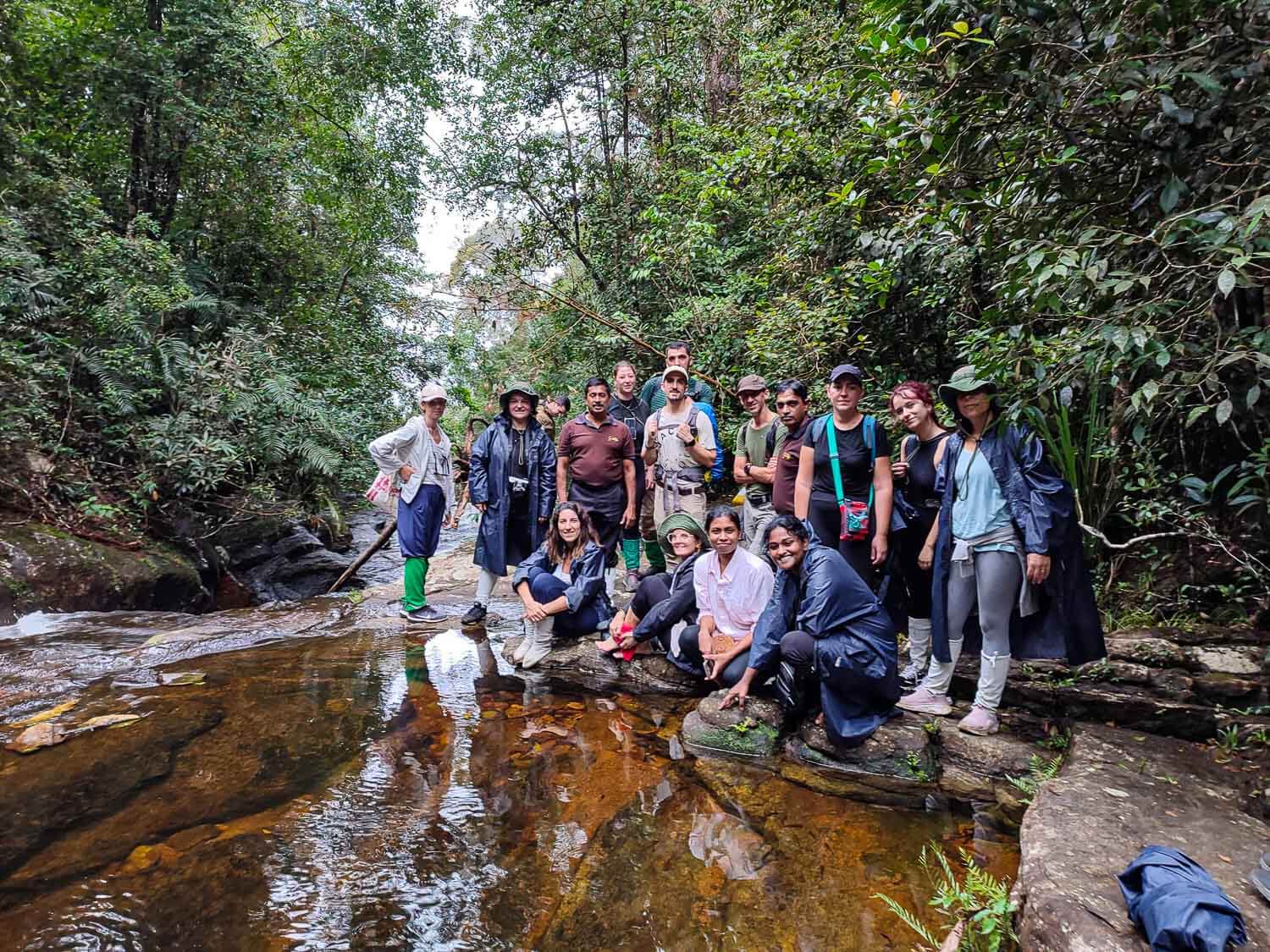
Best Things To Do near Sinharaja Rainforest
Sri Lanka is a relatively small island, which means you’re never too far from amazing attractions, no matter where you’re based. While Sinharaja Forest Reserve itself offers incredible natural beauty, you can easily venture to nearby destinations for a diverse mix of landscapes and cultural landmarks.
Start with Colombo, Sri Lanka’s vibrant capital, where you can explore a mix of historical sites, bustling markets, and local culture. Don’t miss the Gangaramaya Temple, the Colombo National Museum, and a stroll along Galle Face Green for a taste of local life by the sea.
For a refreshing escape, head to Ella, a charming hill town known for its breathtaking waterfalls, including the famous Ravana Falls, and its impressive Nine Arches Bridge. If you’re a fan of wildlife and nature, Yala National Park offers thrilling safari experiences where you can see elephants, leopards, and other animals in their natural habitat.
You can also visit Ratnapura, known as the “City of Gems,” where you can explore gemstone mines or simply enjoy the scenic views of the surrounding hills. To the north, you’ll find Sigiriya, the iconic rock fortress offering incredible views, ancient ruins, and frescoes that showcase Sri Lanka’s rich history. Whether you head east, west, or south, Sri Lanka’s compact size makes it easy to explore incredible attractions, making it the perfect base for discovering diverse landscapes and cultural gems.
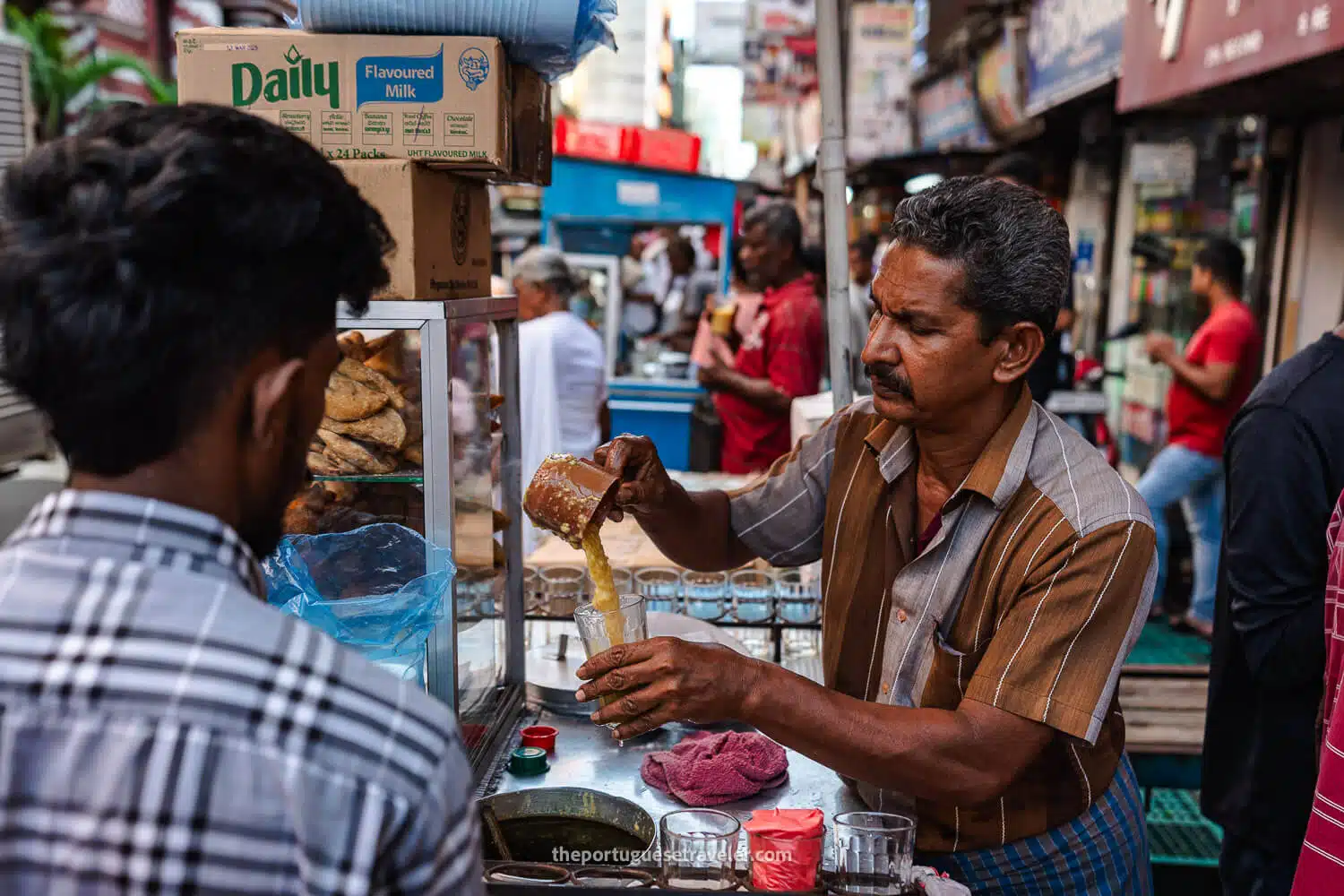
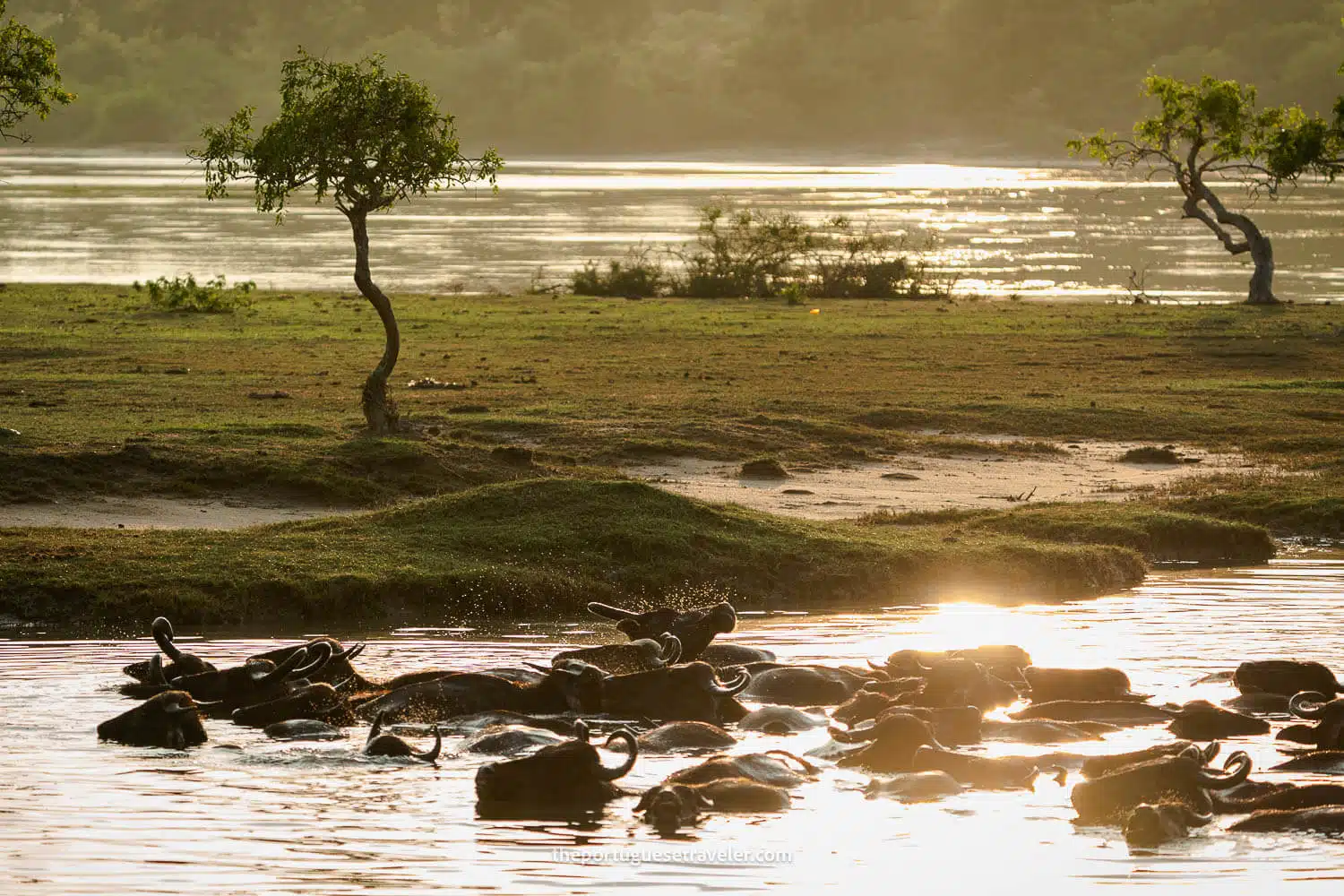
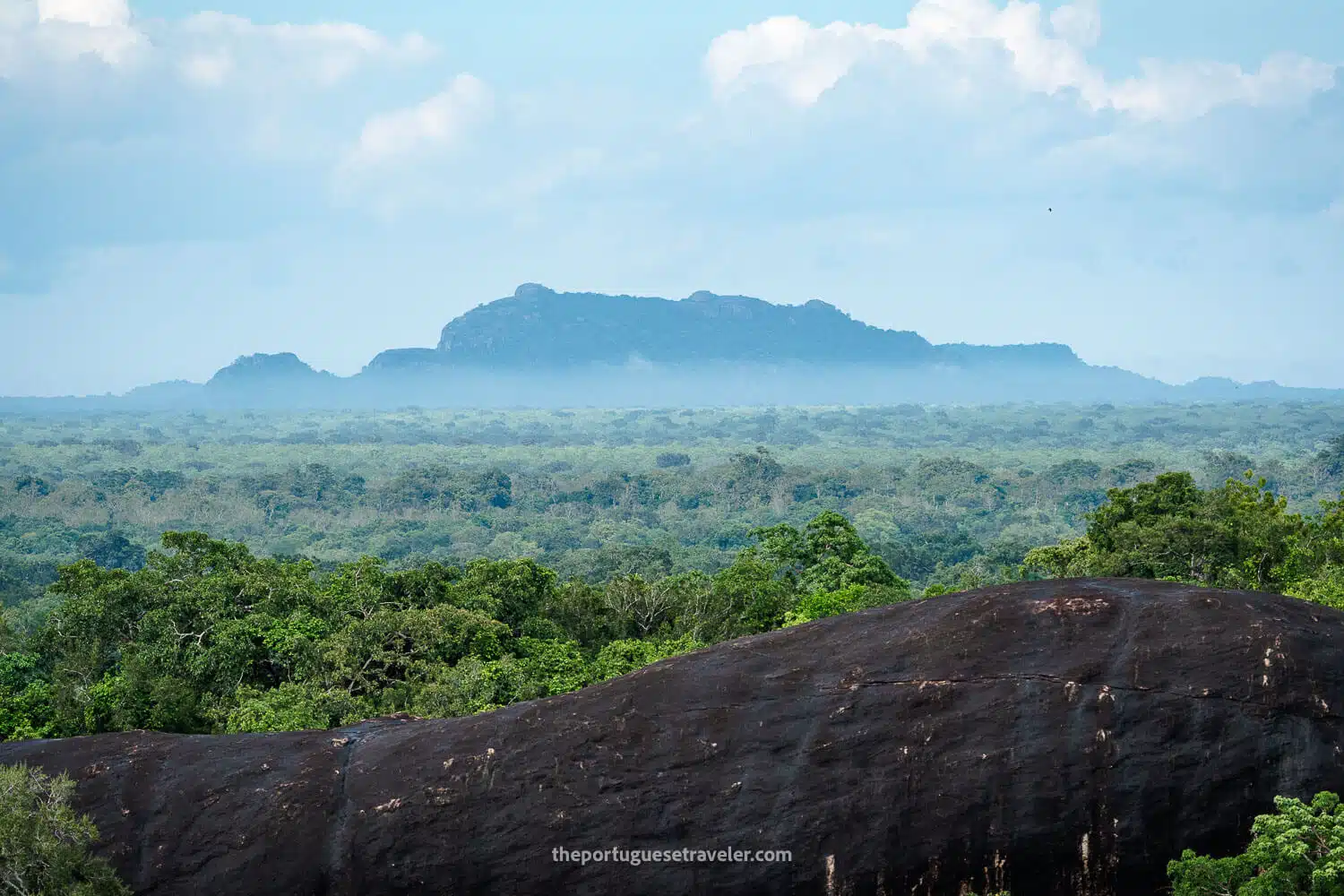
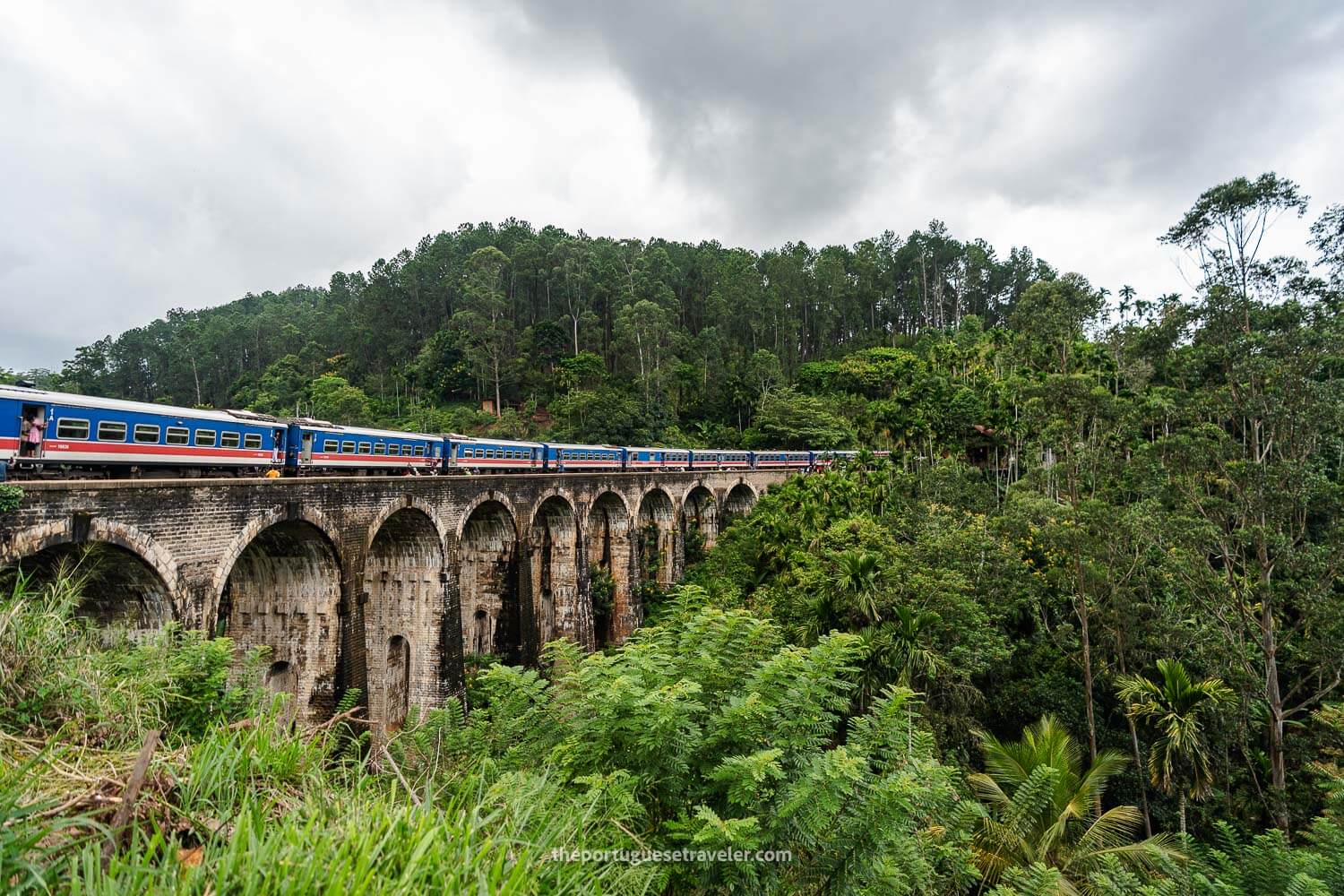
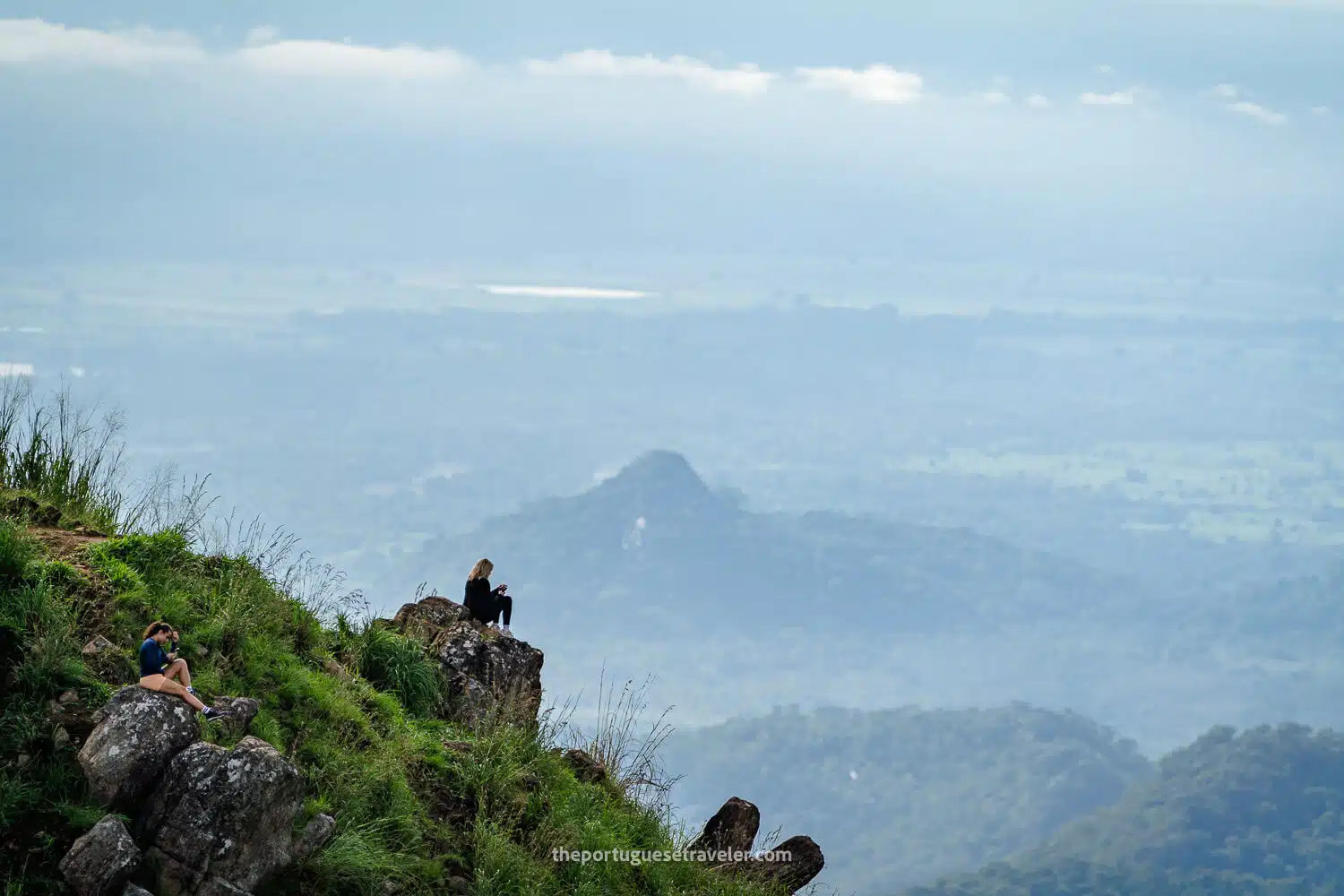
Best Tours to Visit the Sinharaja Forest Reserve
If you’re planning to visit the reserve, I found this Sinharaja Forest Reserve Tour to be the best choice for a truly immersive rainforest experience. It even includes a bonus visit to a nearby tea factory! With an excellent guide and carefully designed trails, it’s ideal for exploring the unique wildlife and nature of the reserve.
Plus, it has tons of fantastic reviews! I’ve checked out a few other tours as well, so there are other options if you’d like, but this one really stands out.
My Experience at the Sinharaja Forest Reserve
This was our second stop of the trip. After exploring Colombo, we headed straight for the rainforest, buzzing with excitement. I could finally pull out my Sony 200-600 lens and try to capture some wildlife shots.
We arrived late in the evening, passing through Ratnapura along the way. The shuttle brought us part of the journey, but to reach the reserve entrance, we switched to rugged 4×4 jeeps. The ride was bumpy but fun, and in about half an hour, we reached the Rainforest Ecolodge. The staff welcomed us warmly, led us to our rooms, and treated us to an incredible dinner. We were briefed on the next day’s plans, and I could hardly wait to dive into the jungle.
The first morning felt magical. I opened my balcony door to find wildlife right outside – a giant Sri Lankan squirrel and flashes of colorful birds. Breakfast at the restaurant was delicious, and we even managed to fly our drones, capturing breathtaking views of the lodge and dense forest that stretched endlessly around us.
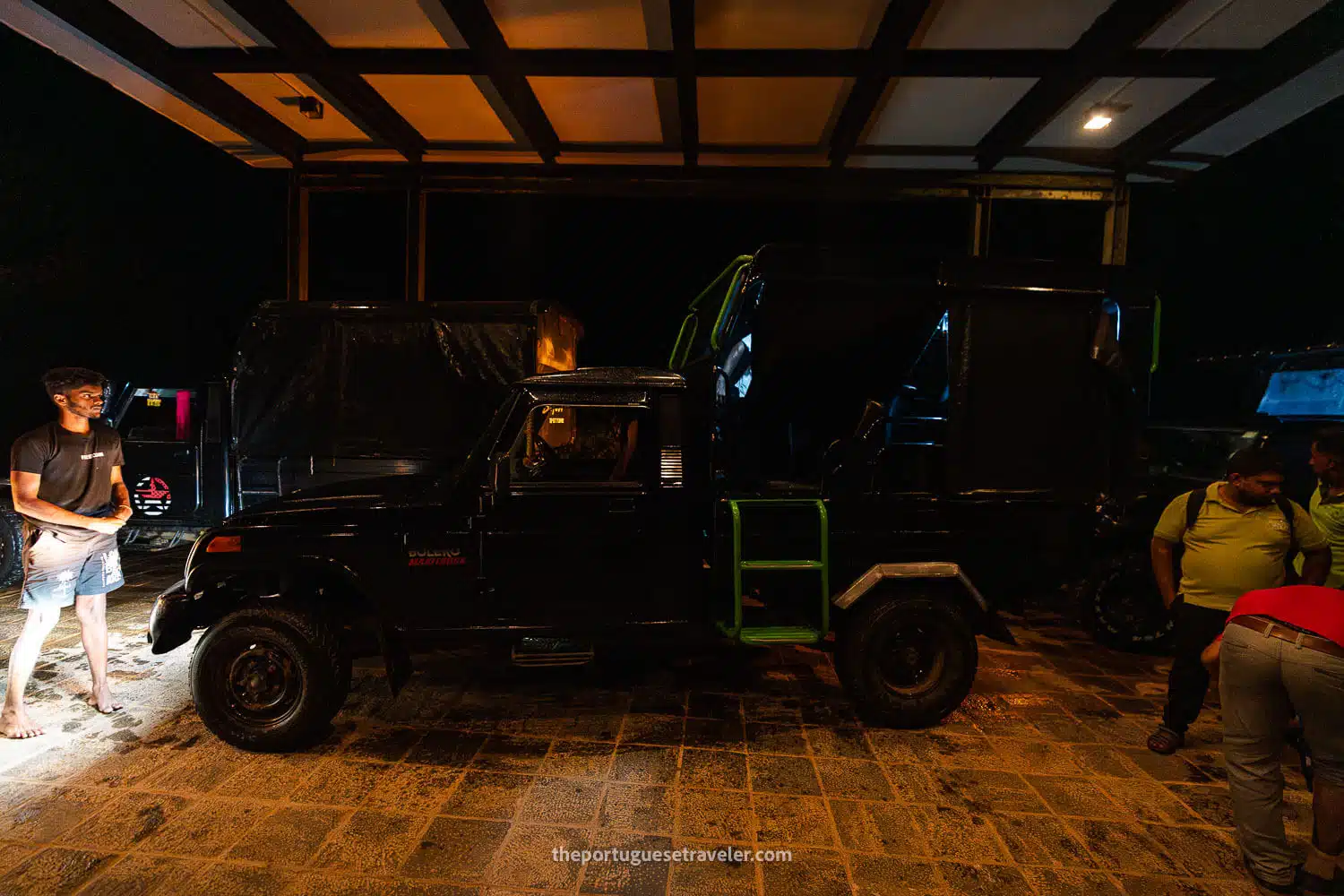
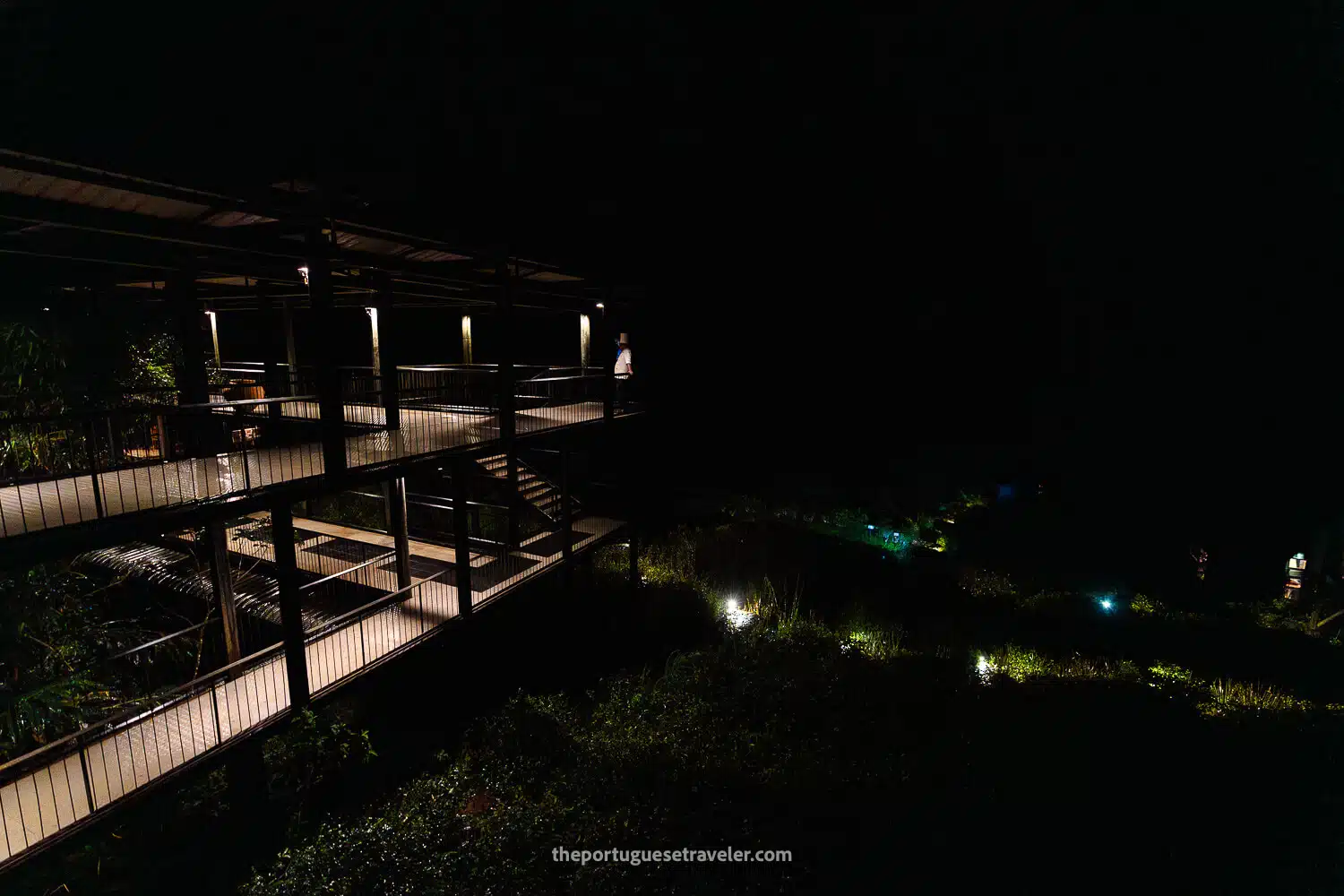
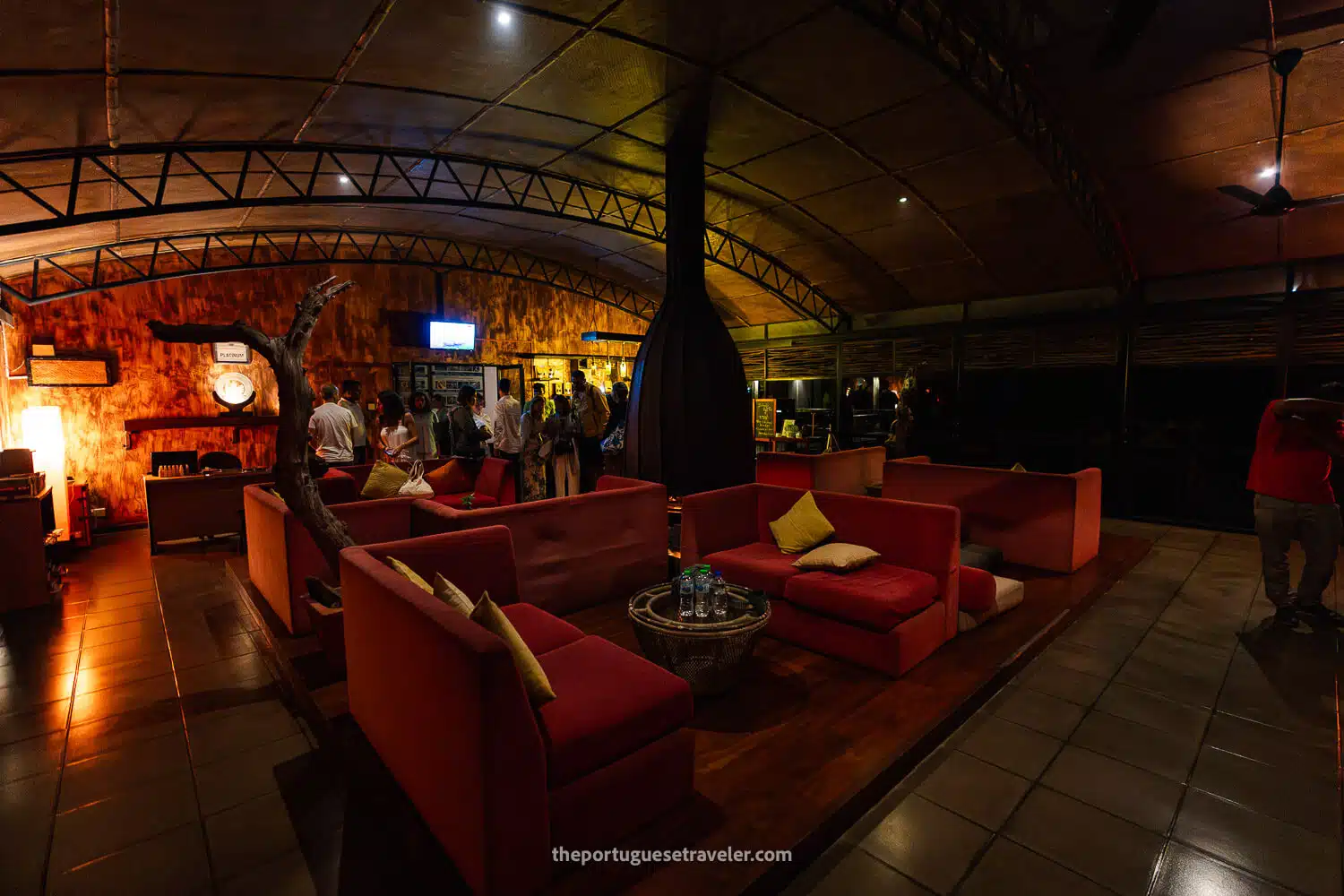
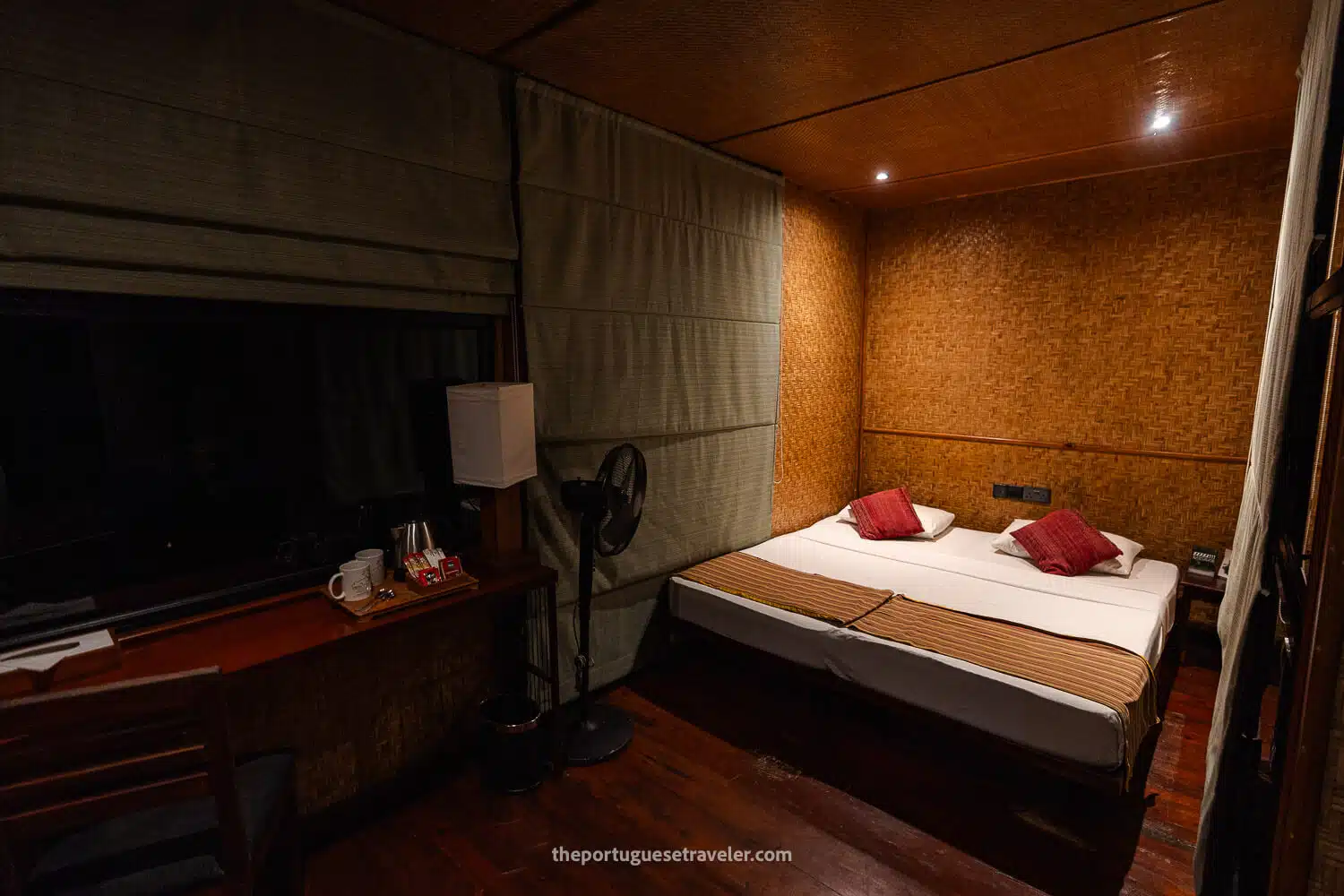
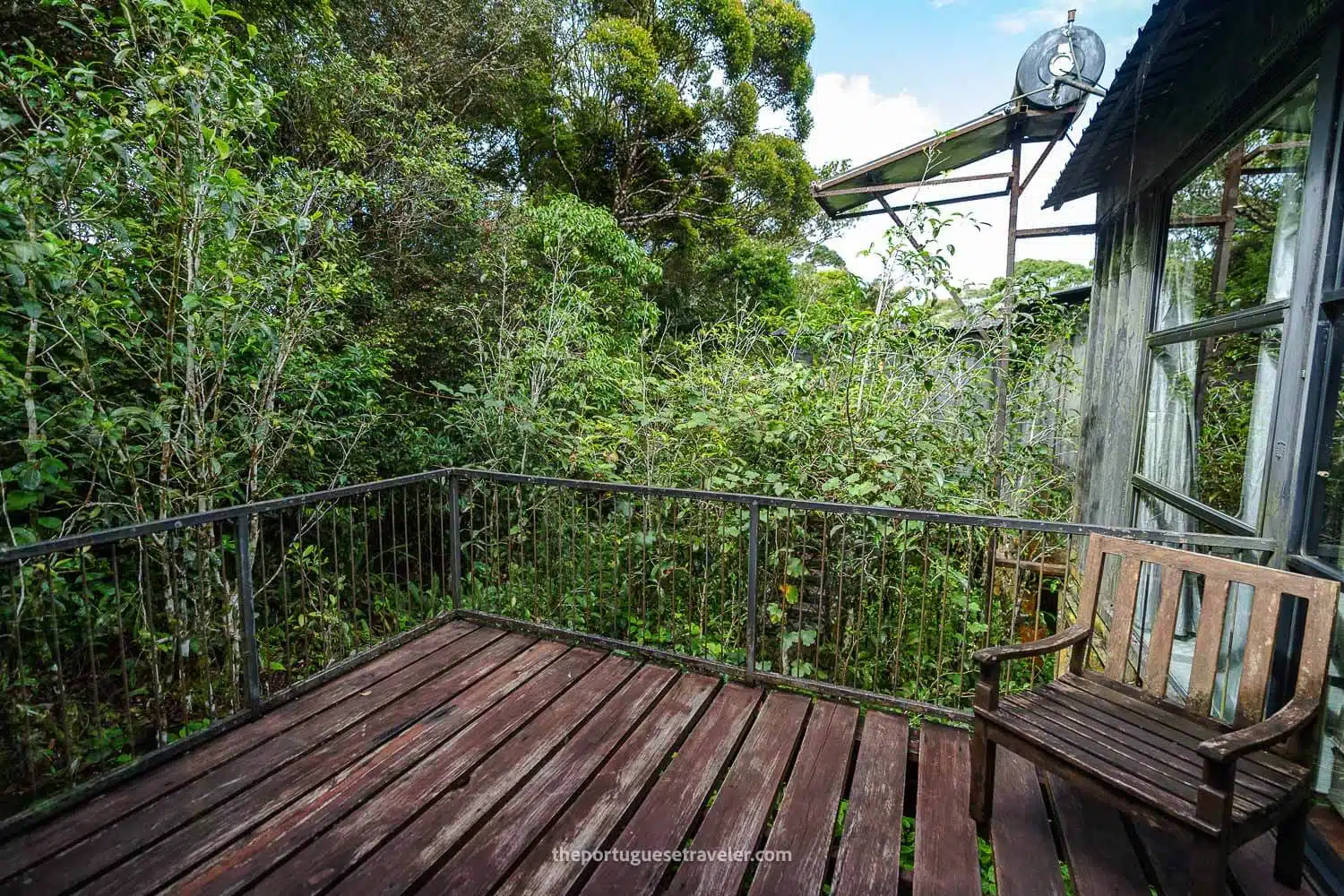
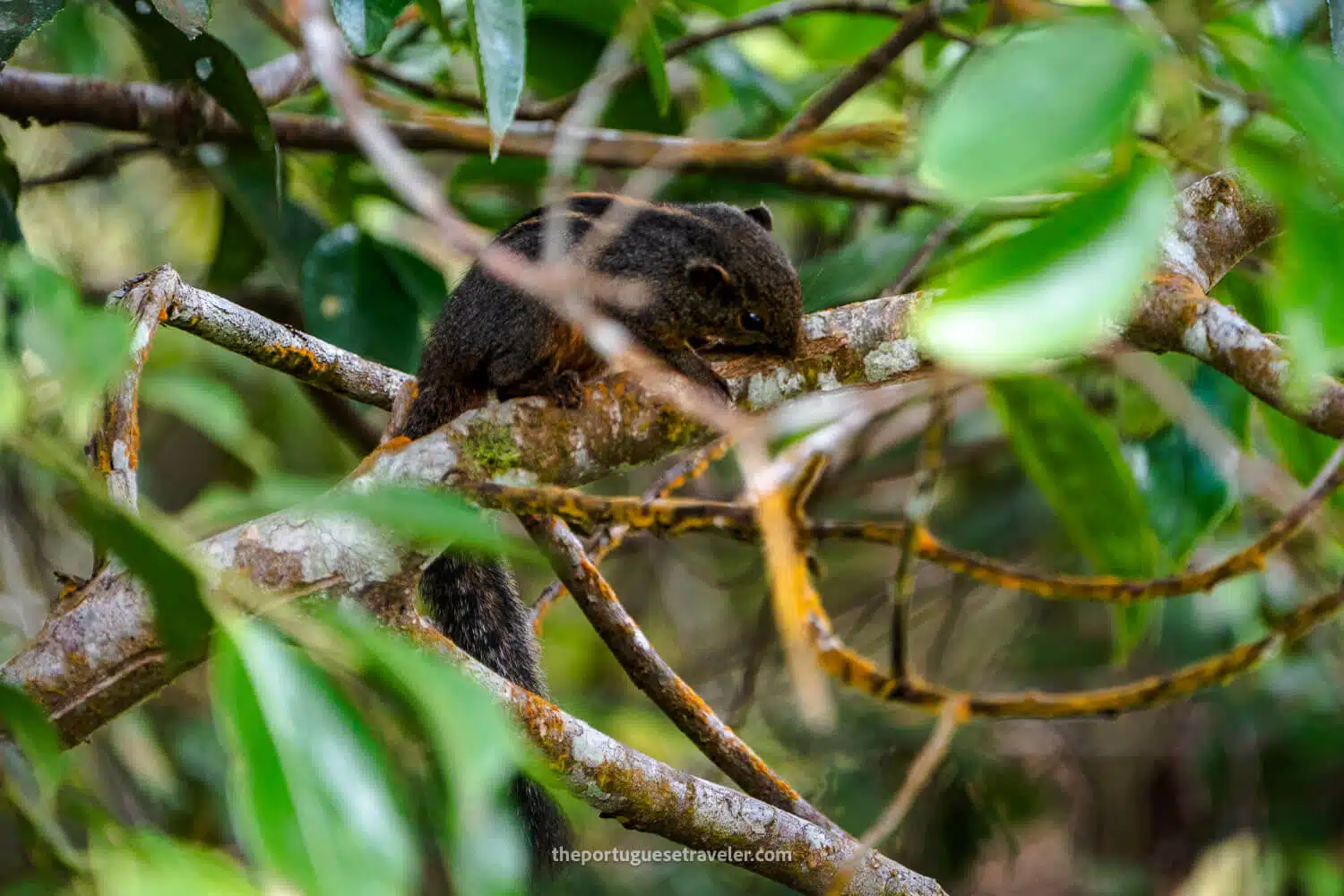
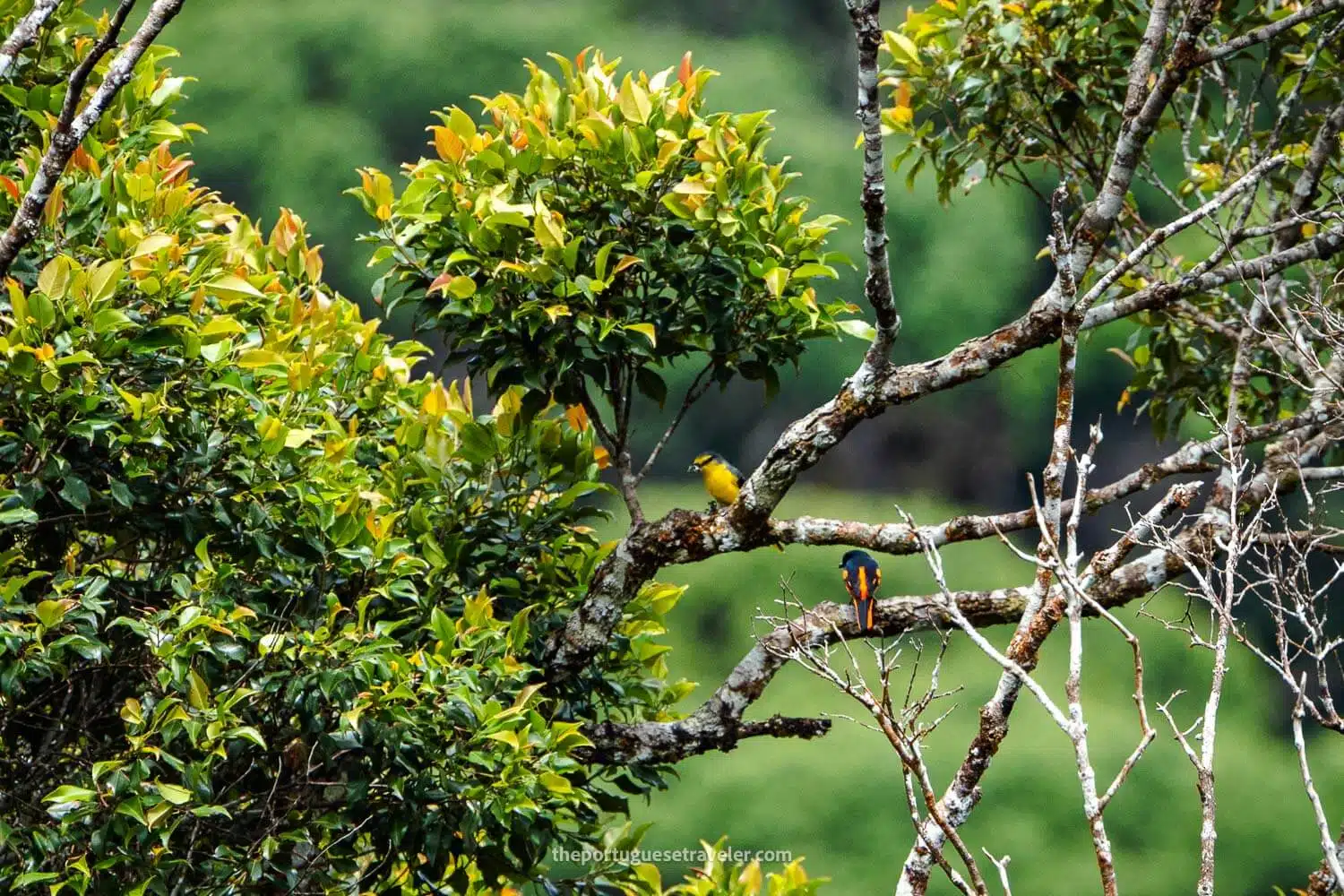
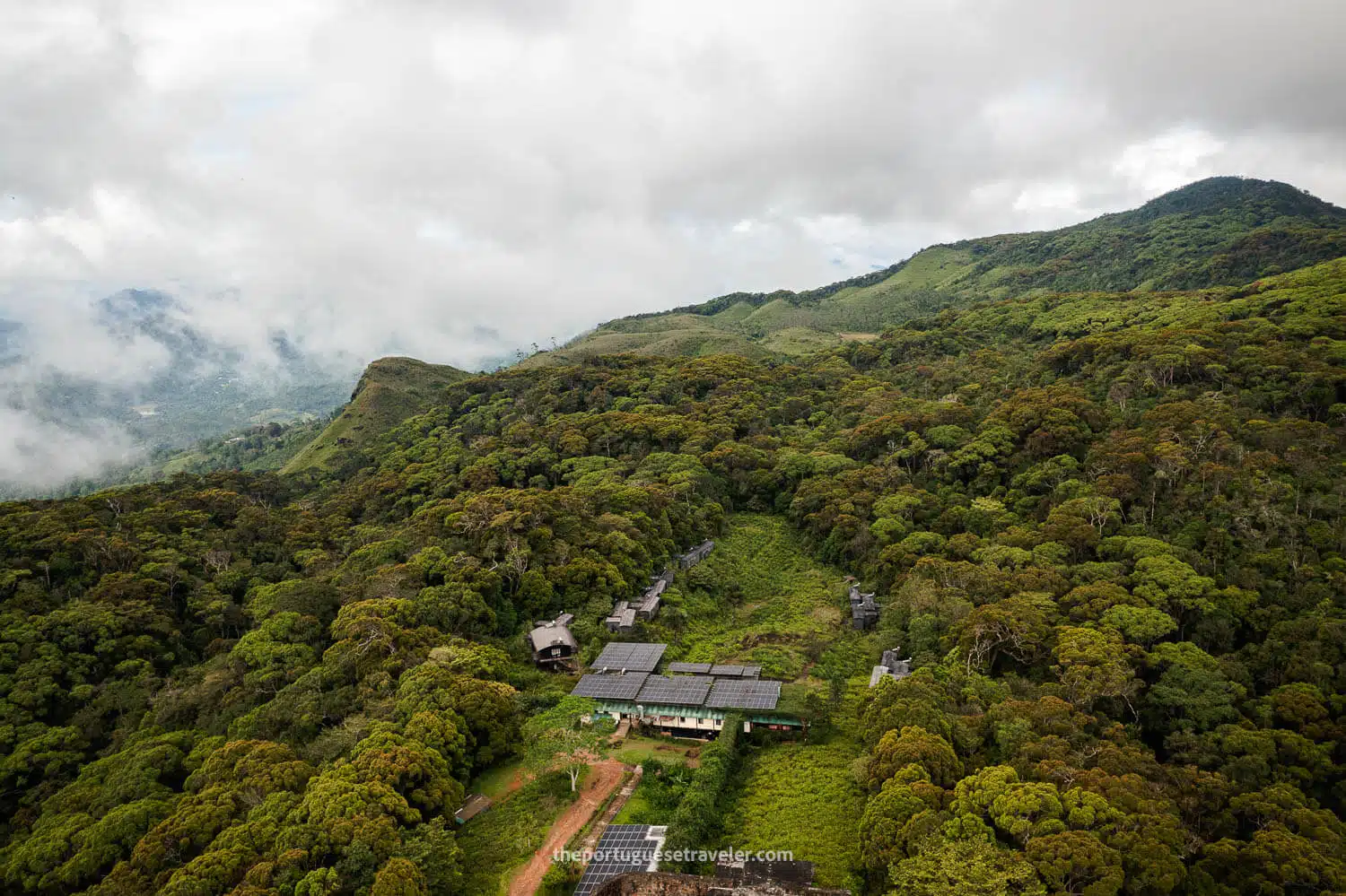
The Jungle Hike & Waterfall
Gearing up for the jungle hike, we gathered at the outdoor lobby. Our guide explained the route and handed out leech socks – an absolute must, as we quickly learned. Within minutes, leeches clung to our shoes and socks, especially when stepping off the path. A spray bottle helped keep them at bay, but they were persistent little things.
We set off, and almost immediately, a flock of Sri Lanka Blue Magpies fluttered through the trees. It was the perfect chance to test my new lens. Deeper into the forest, the vegetation thickened, and we found thorny branches and plants with fascinating textures – some even curled up when touched. The jungle was alive, but we had to keep moving to avoid becoming leech buffets.
About thirty minutes in, we stumbled upon a striking red river, reminiscent of those in the Ecuadorian Amazon, coated with red algae. We crossed over, weaving through steep, slippery paths until we reached a waterfall. I had packed shorts for a swim, but the sight of leeches everywhere convinced me otherwise. I tried flying the drone, but rain started to drizzle, cutting that plan short.
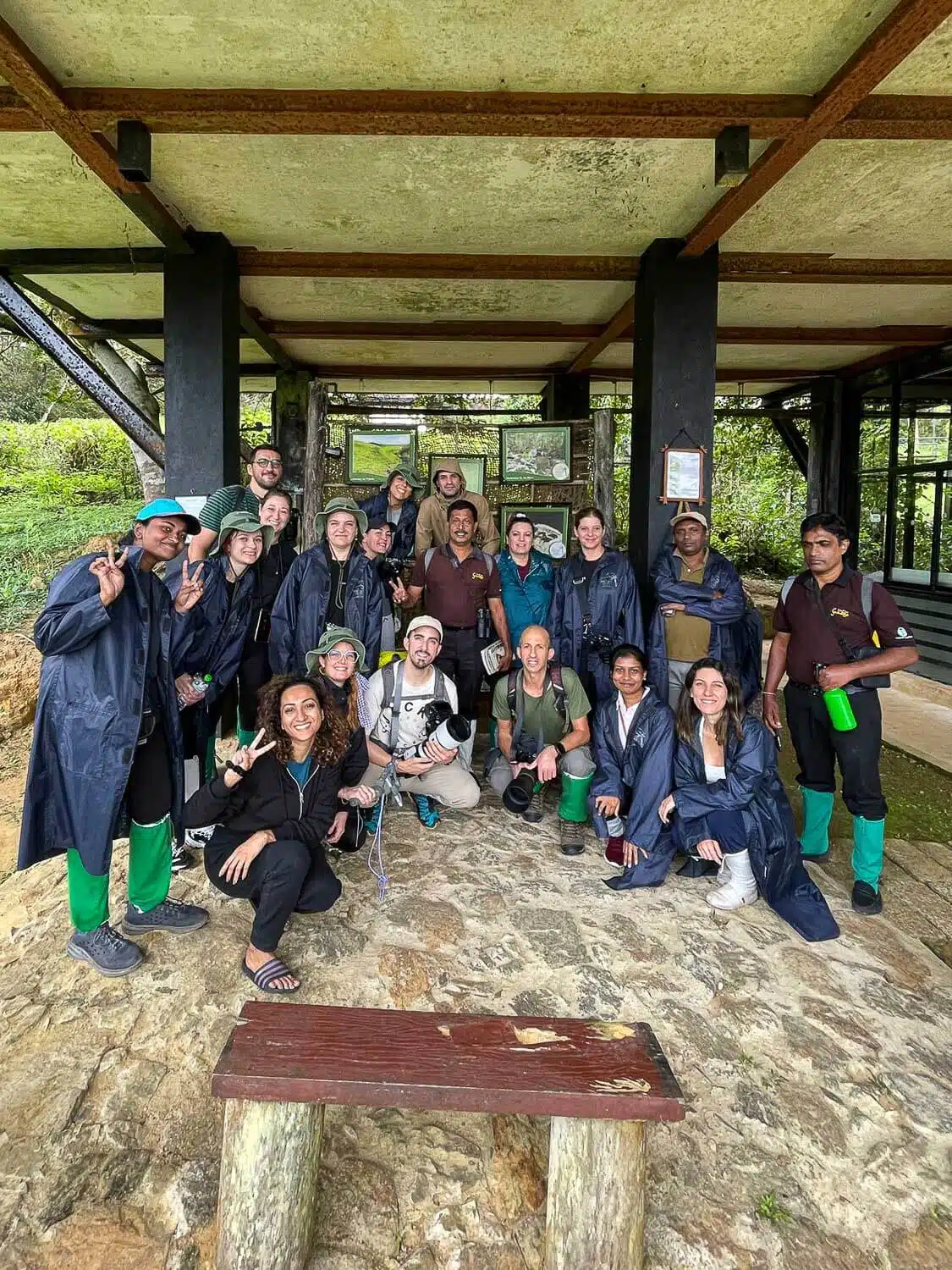
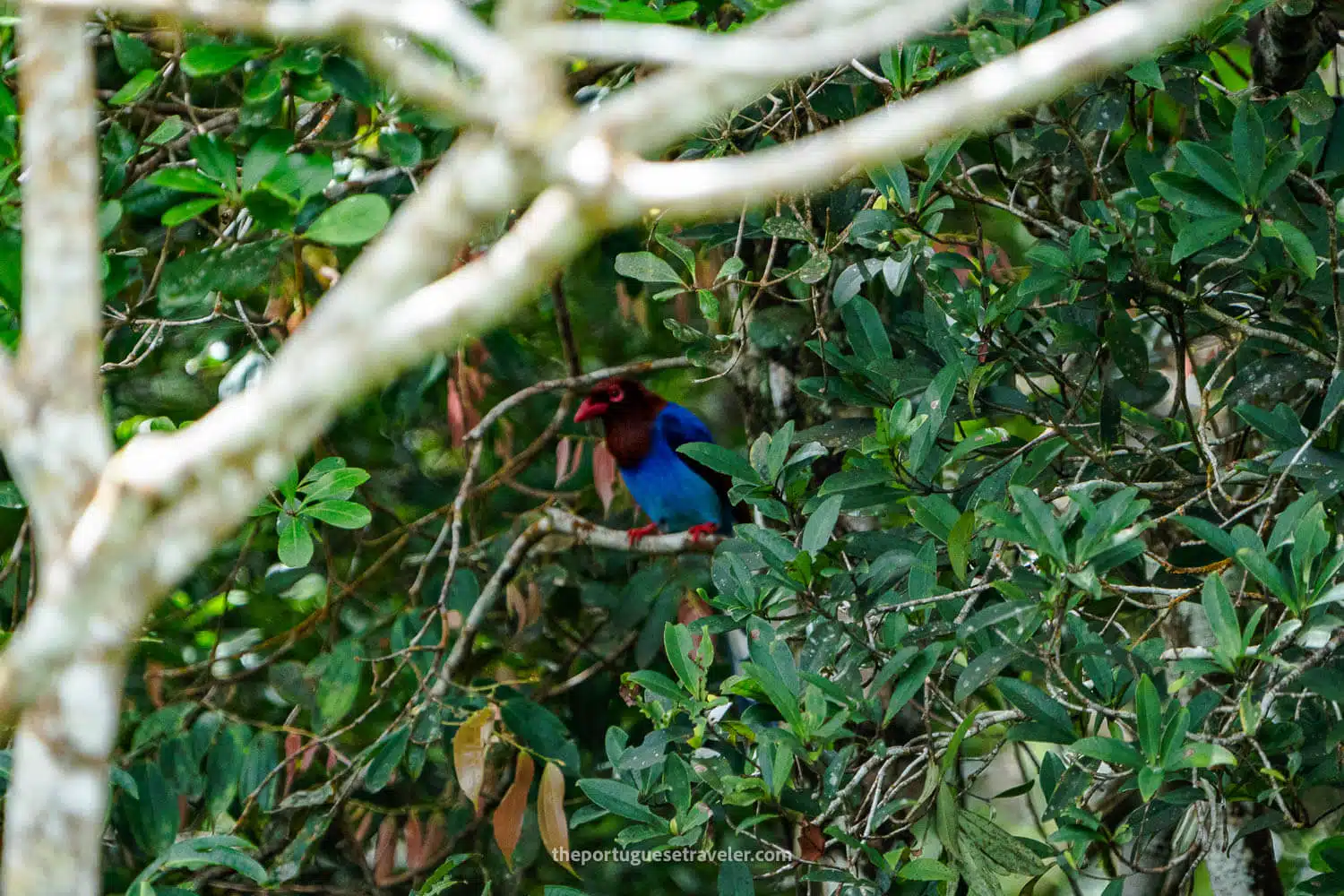
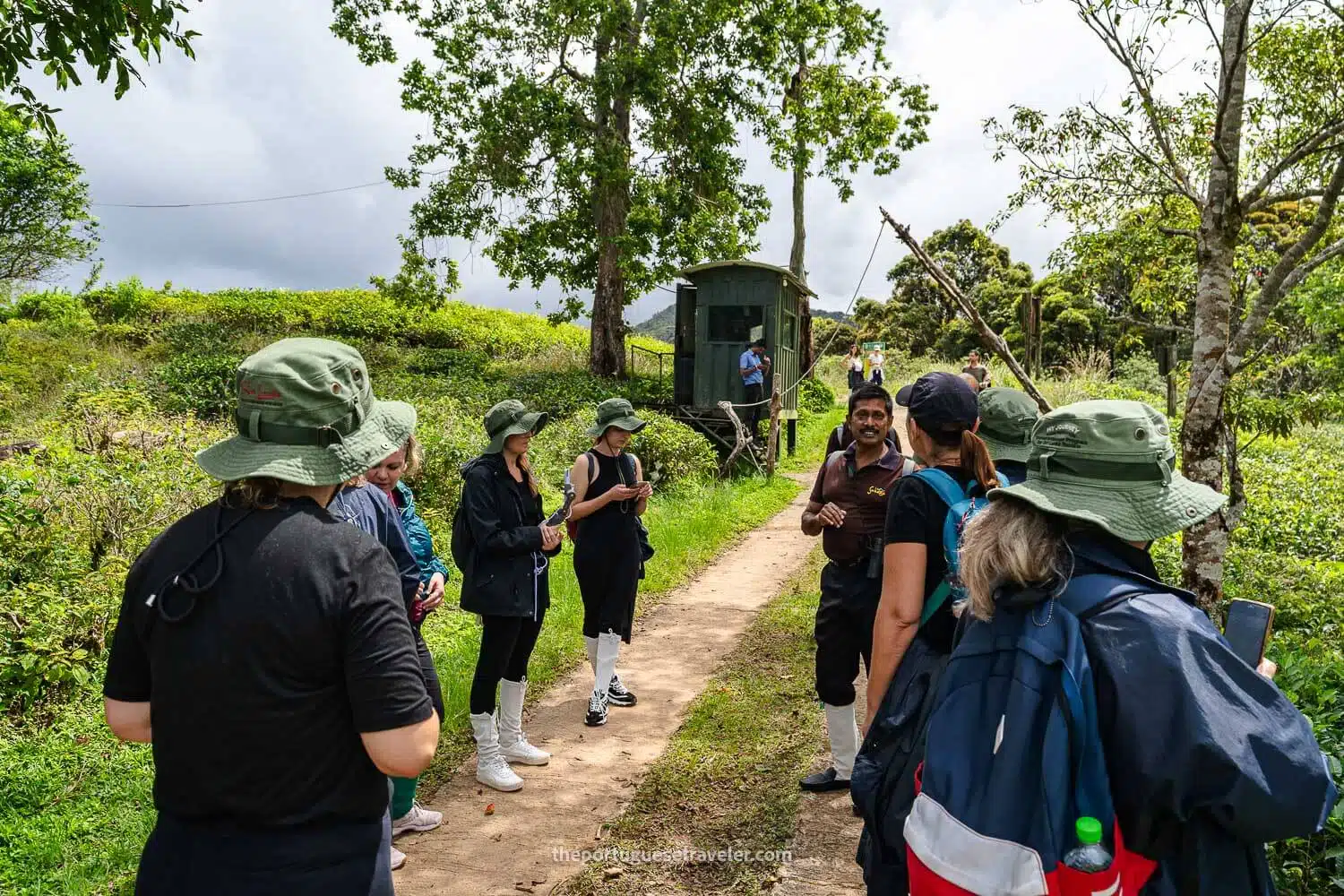
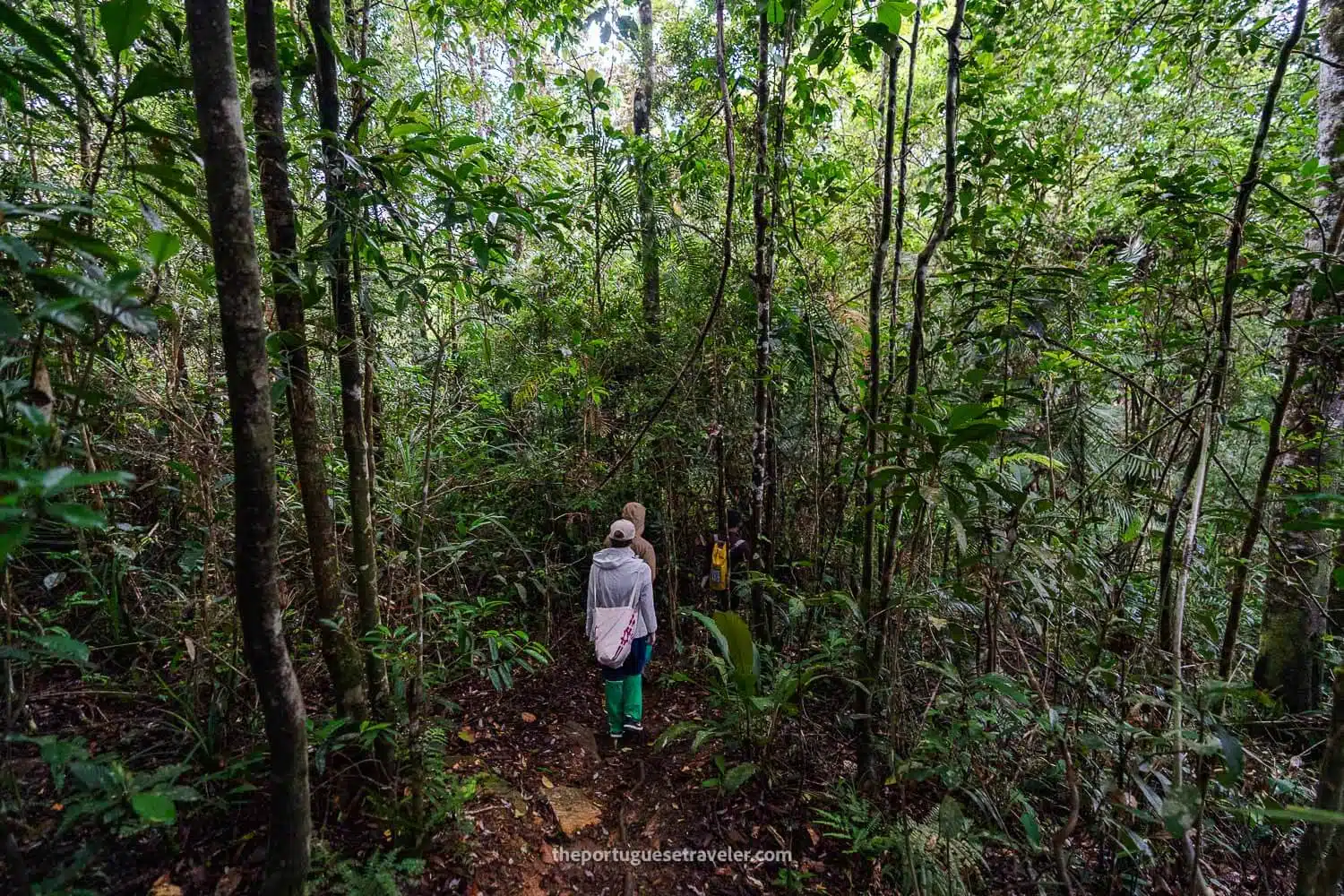
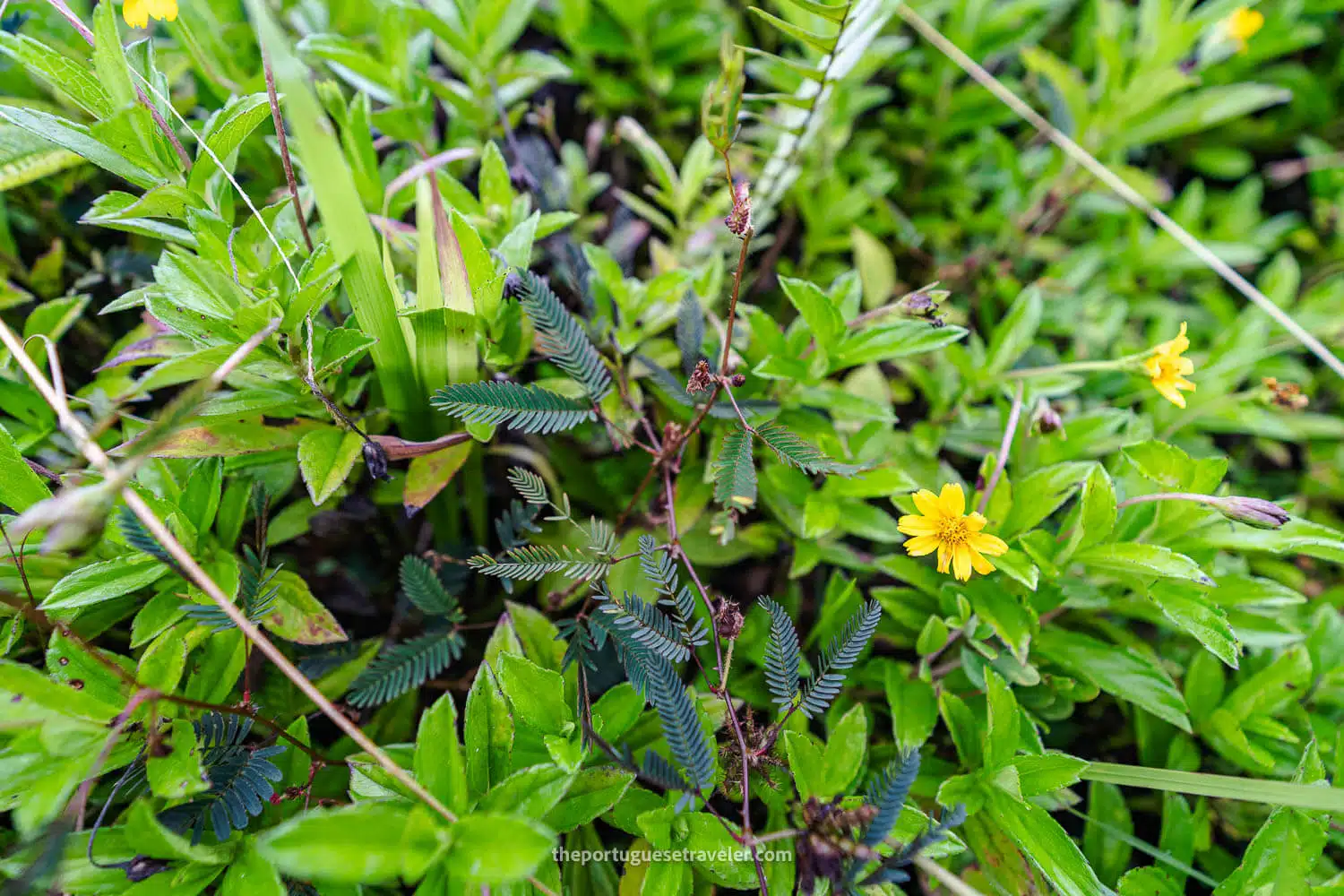
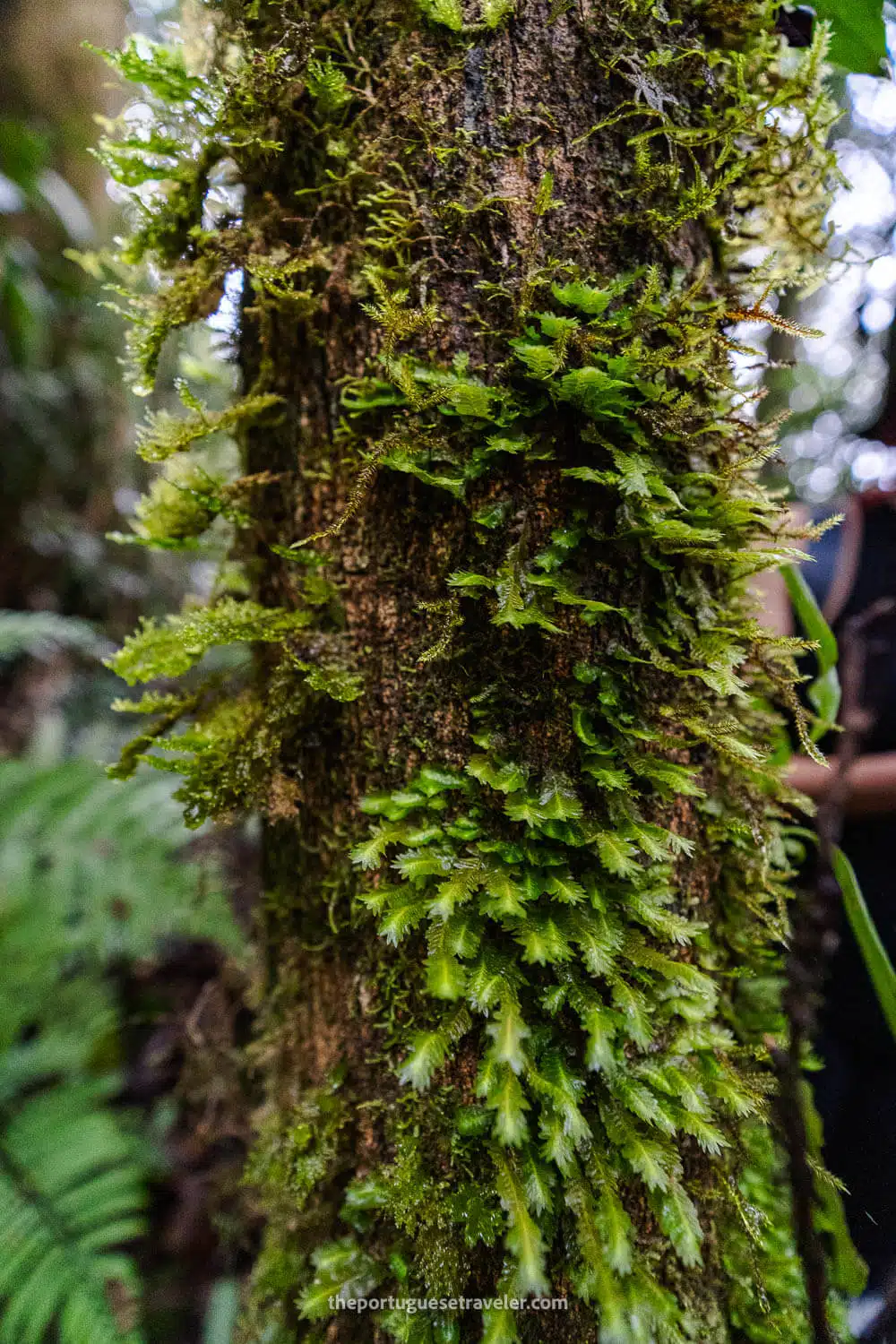
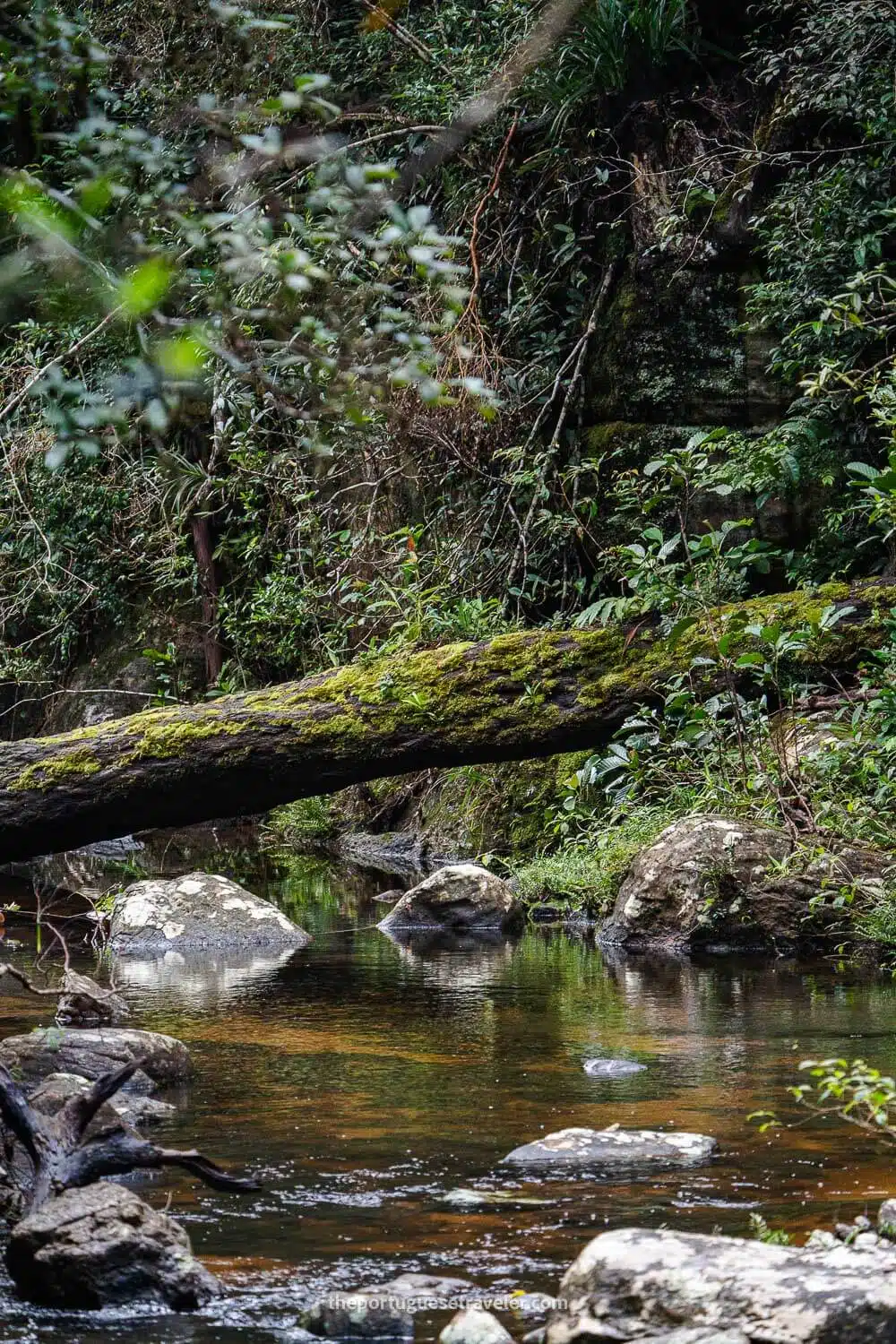
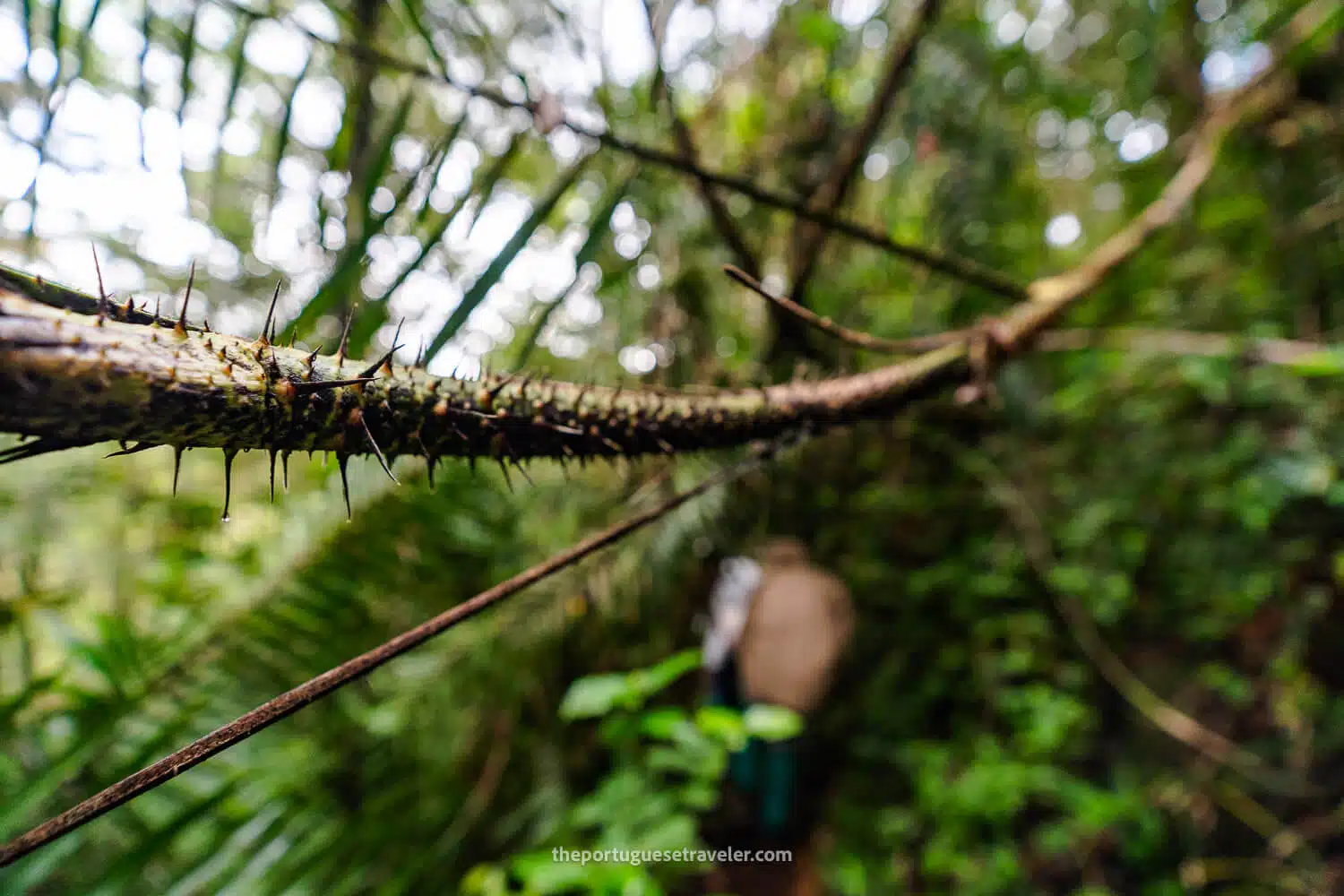
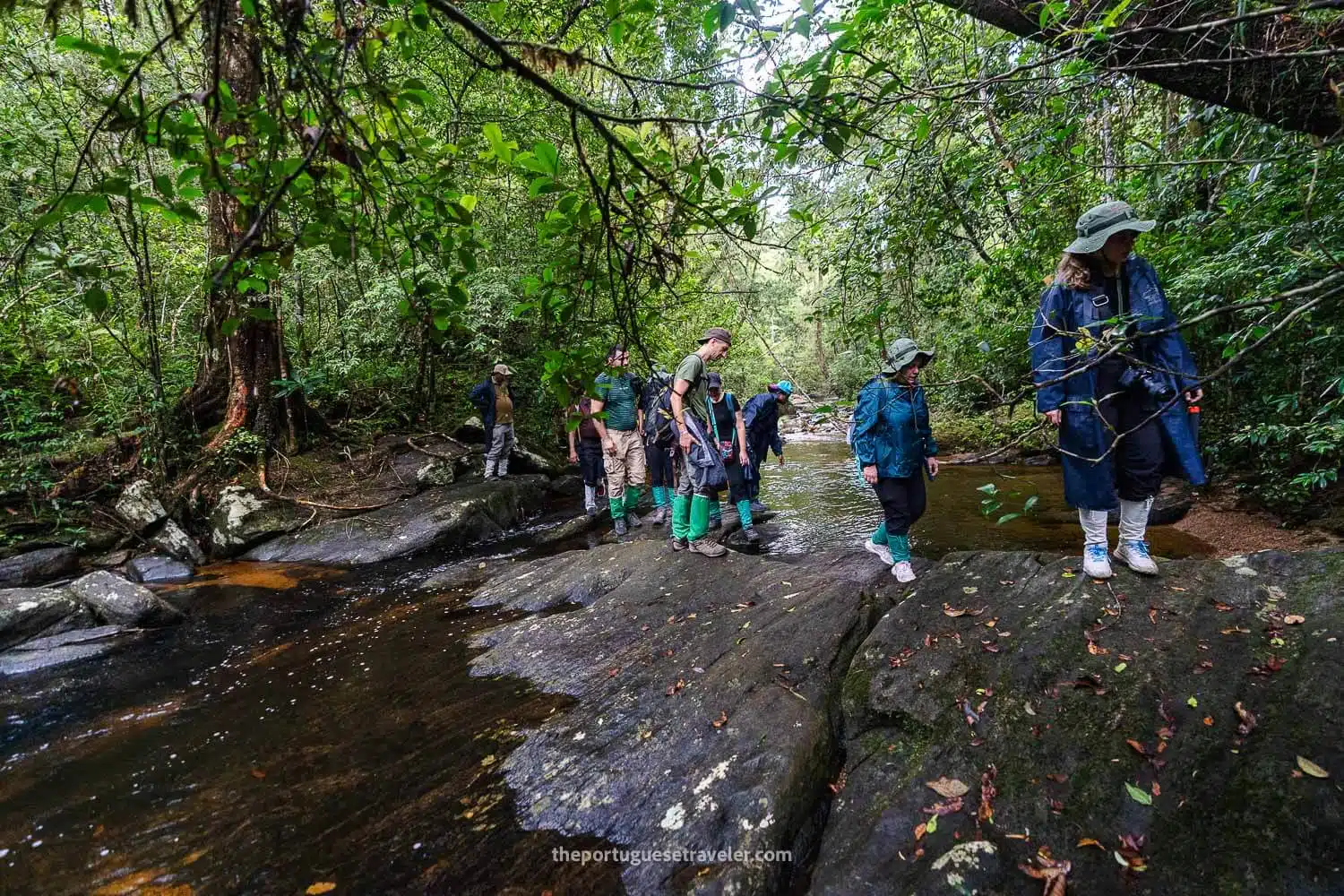
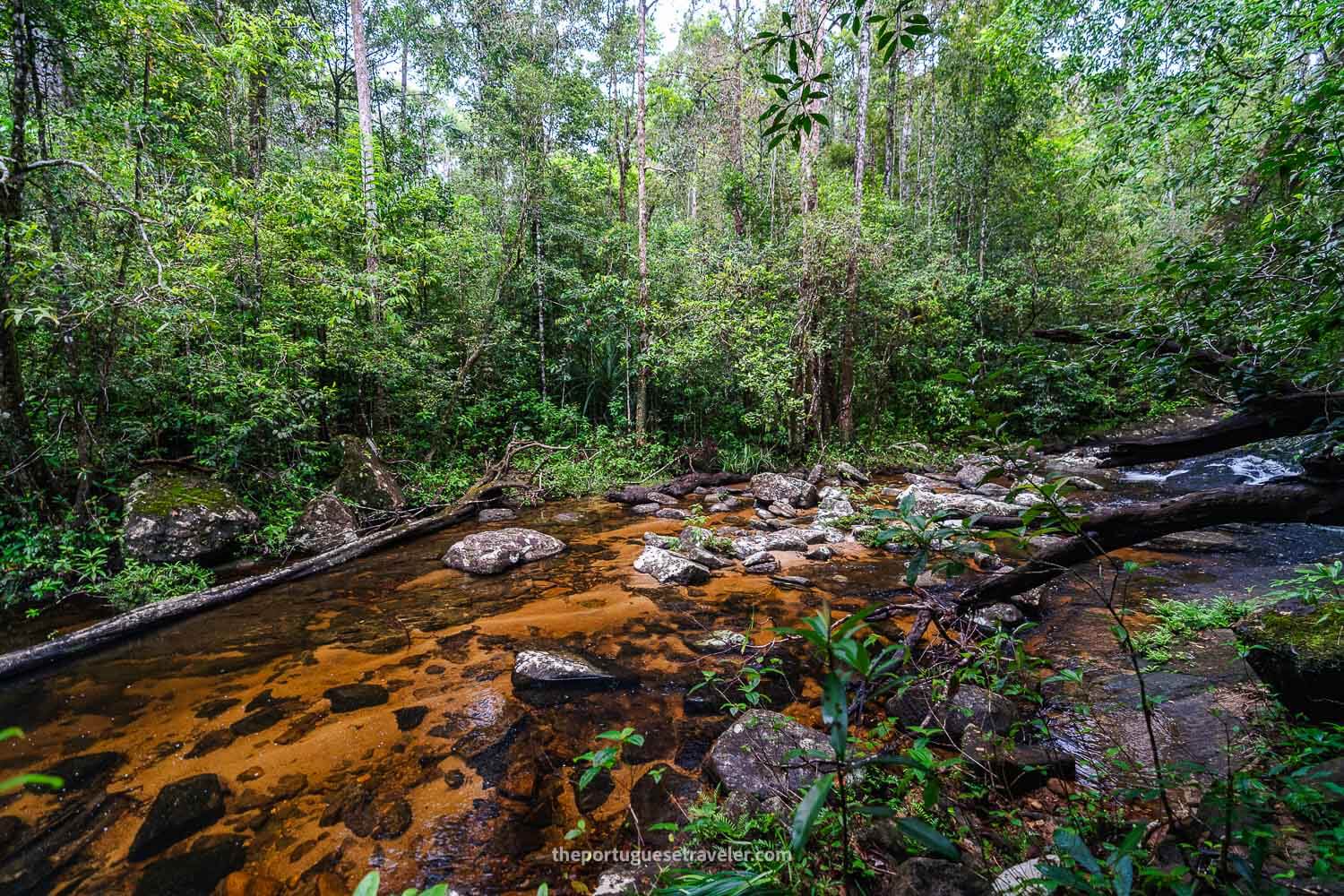
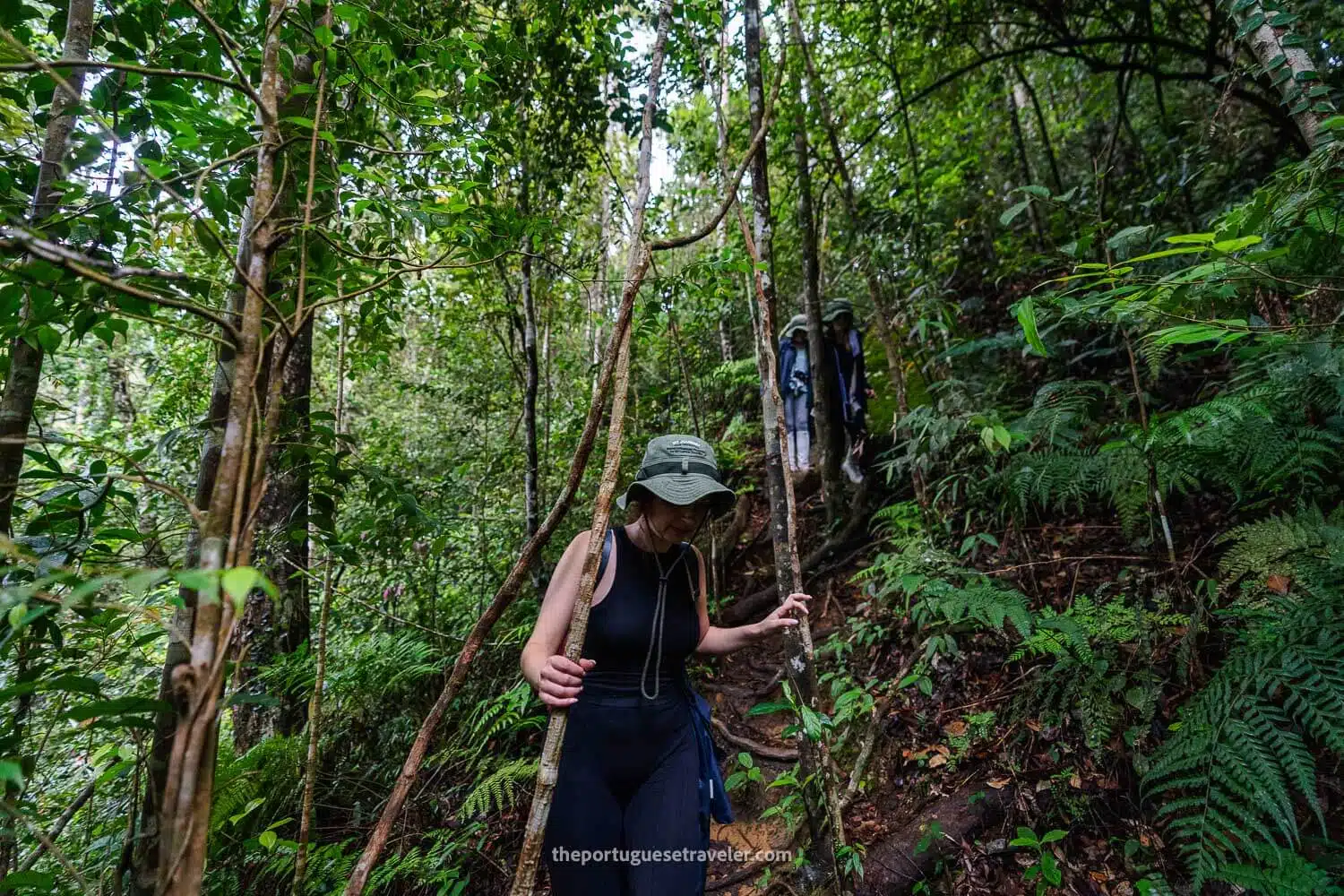
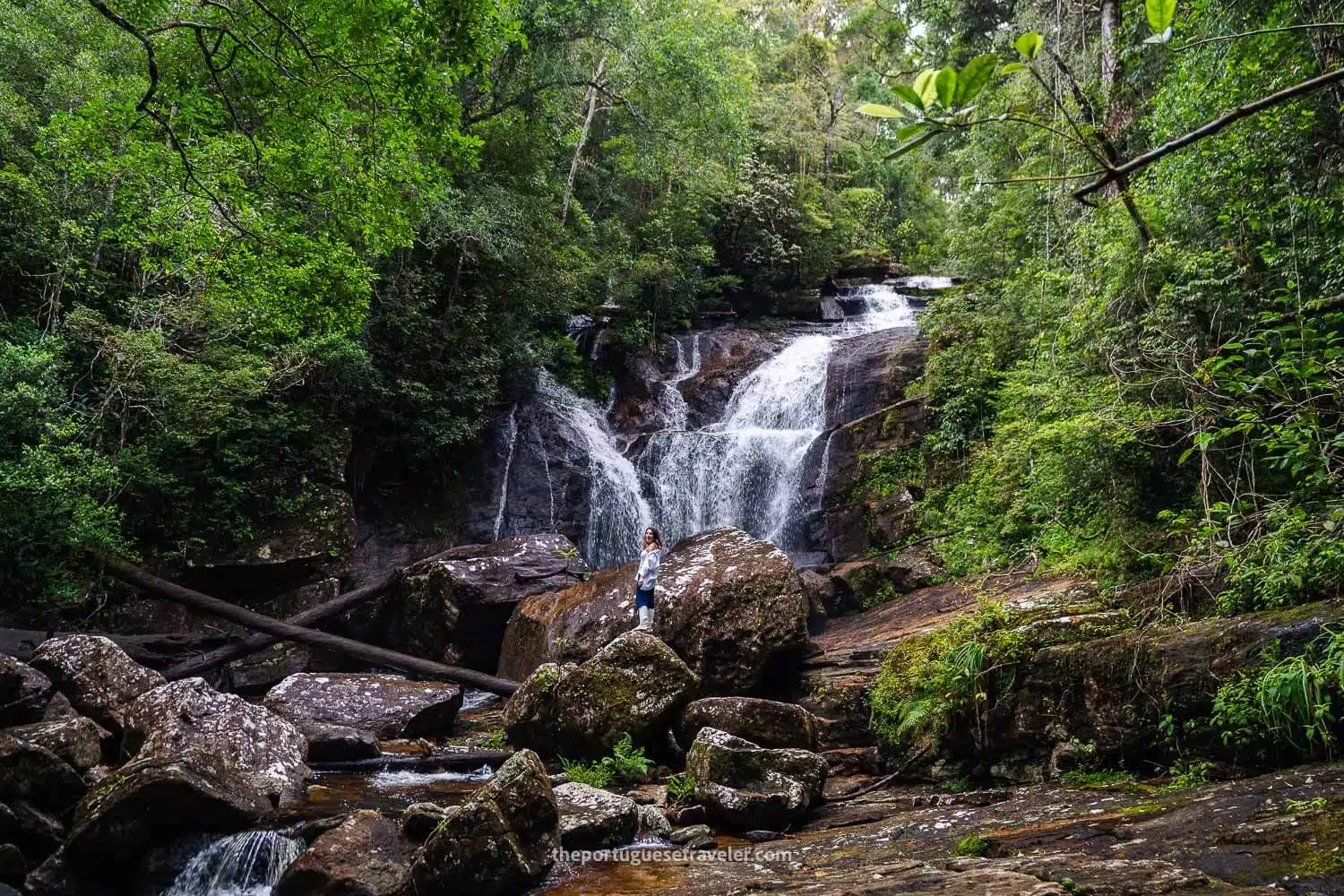
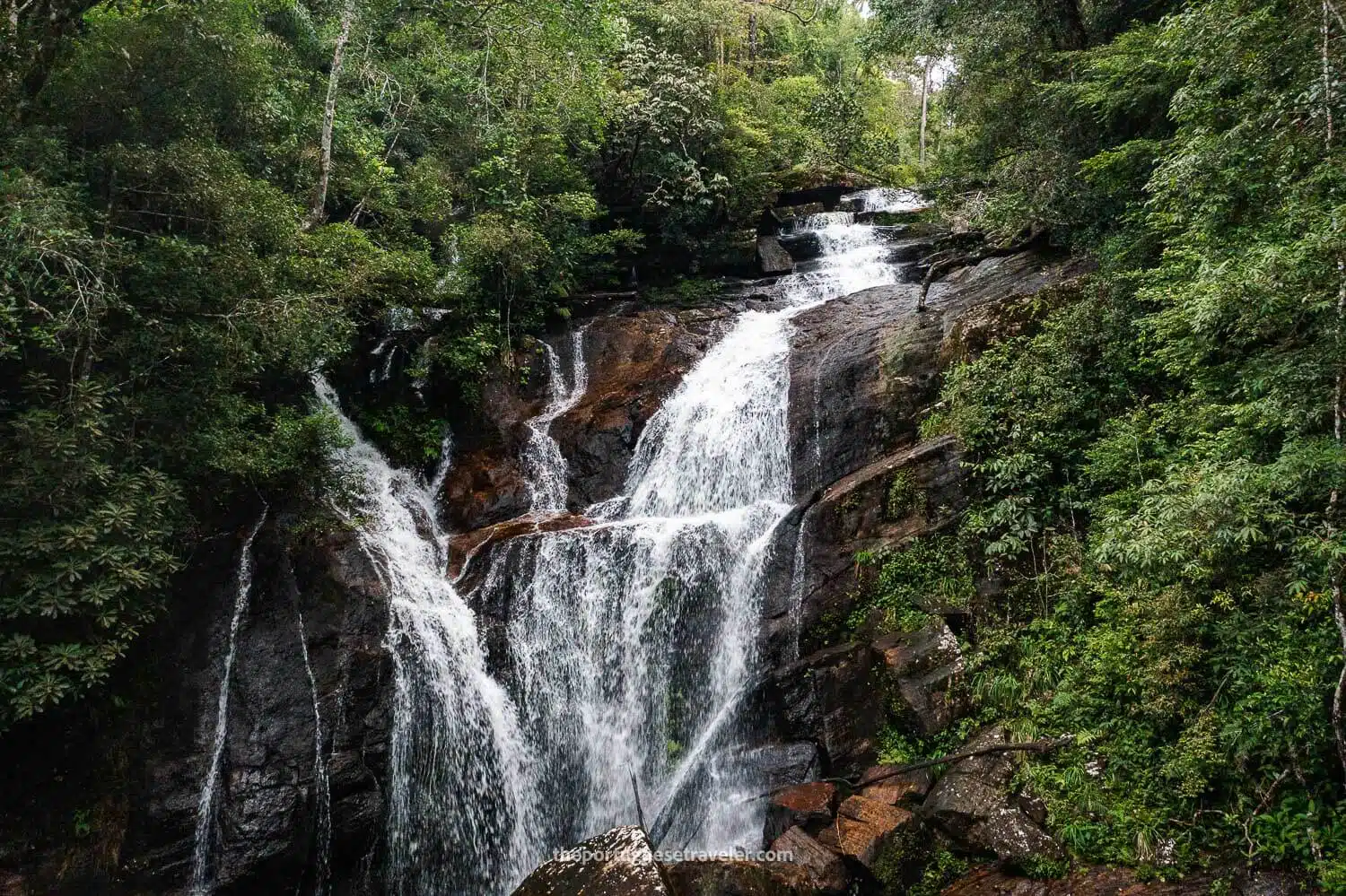
Fish Spa and Relax
At one point, we crossed the river barefoot, and our guide invited us to dip our feet in for a natural fish spa. Tiny fish swarmed around when our toes hit the water, nibbling on dead skin. It tickled a lot – I couldn’t keep my feet in for long, but others were braver, giggling as the fish worked away.
The hike wrapped up as we made our way back to the lodge, feeling accomplished (and relieved) to be done with leeches for the day. I usually love photographing wildlife on jungle hikes, but aside from vegetation, the leeches stole the spotlight – not the fun kind of wildlife encounter.
A hot shower and lunch back at the lodge felt heavenly. The afternoon was peaceful, spent relaxing in the lounge and watching the sunset over the treetops. As night fell, we enjoyed another hearty dinner, bringing the day to a perfect close.
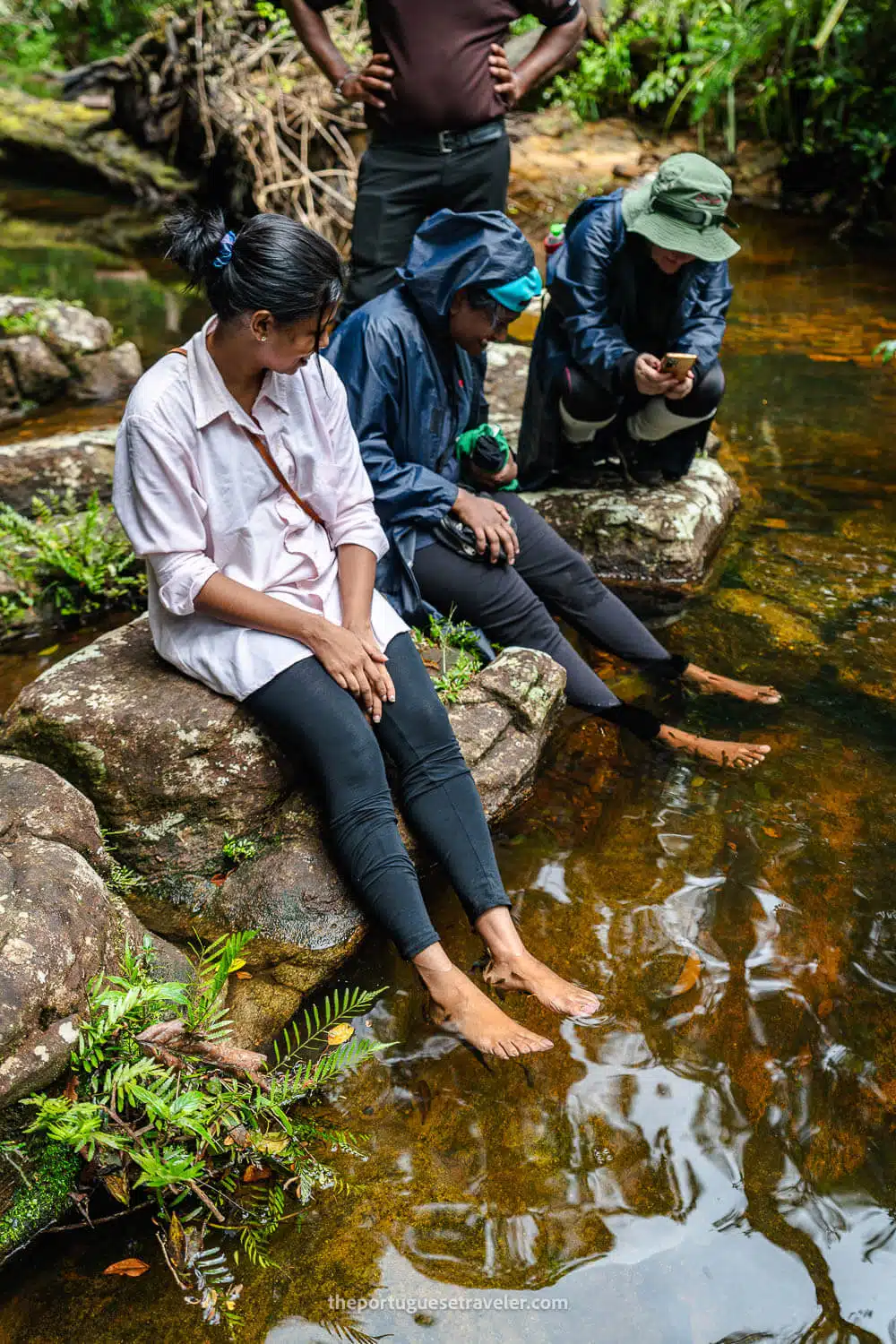
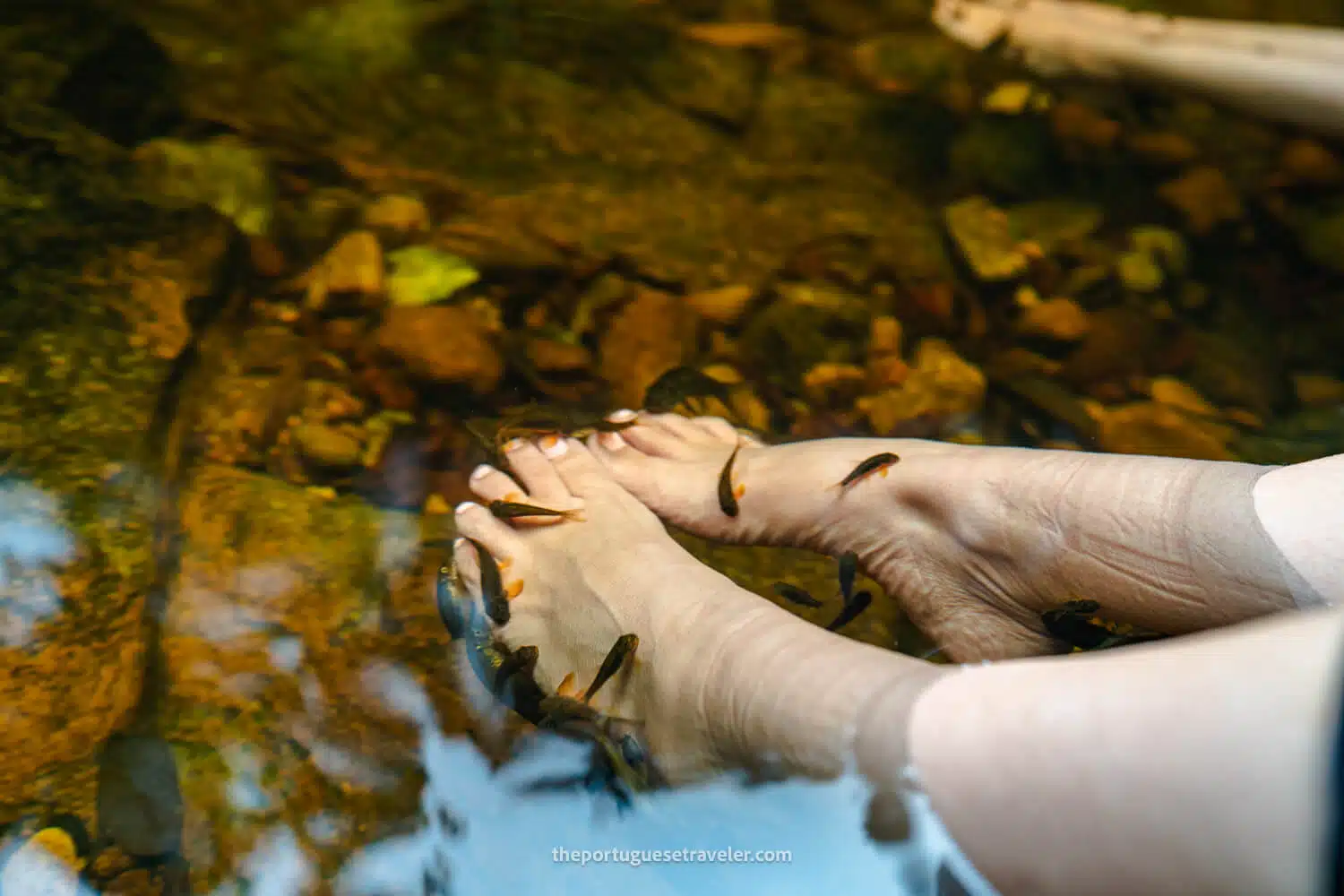
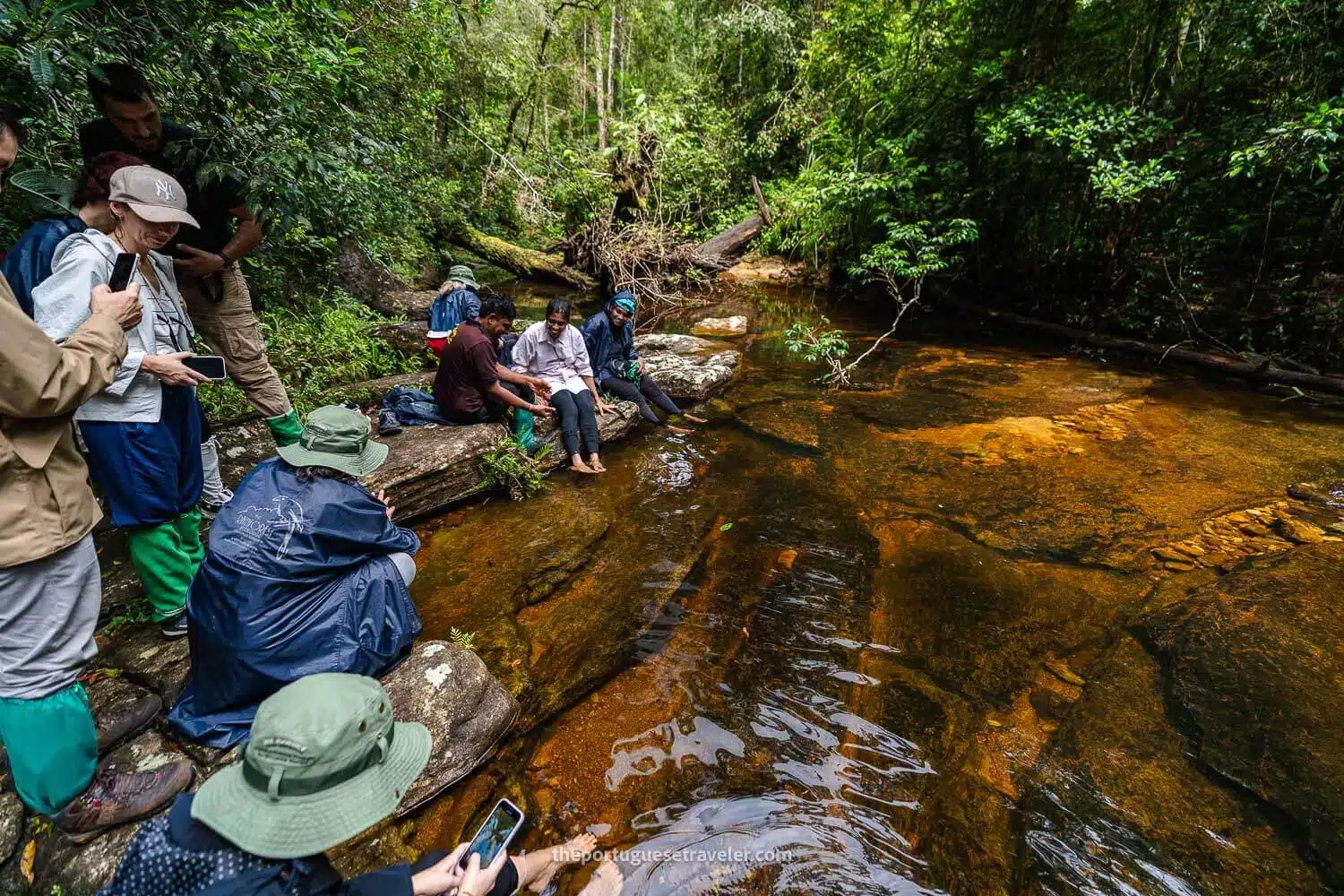
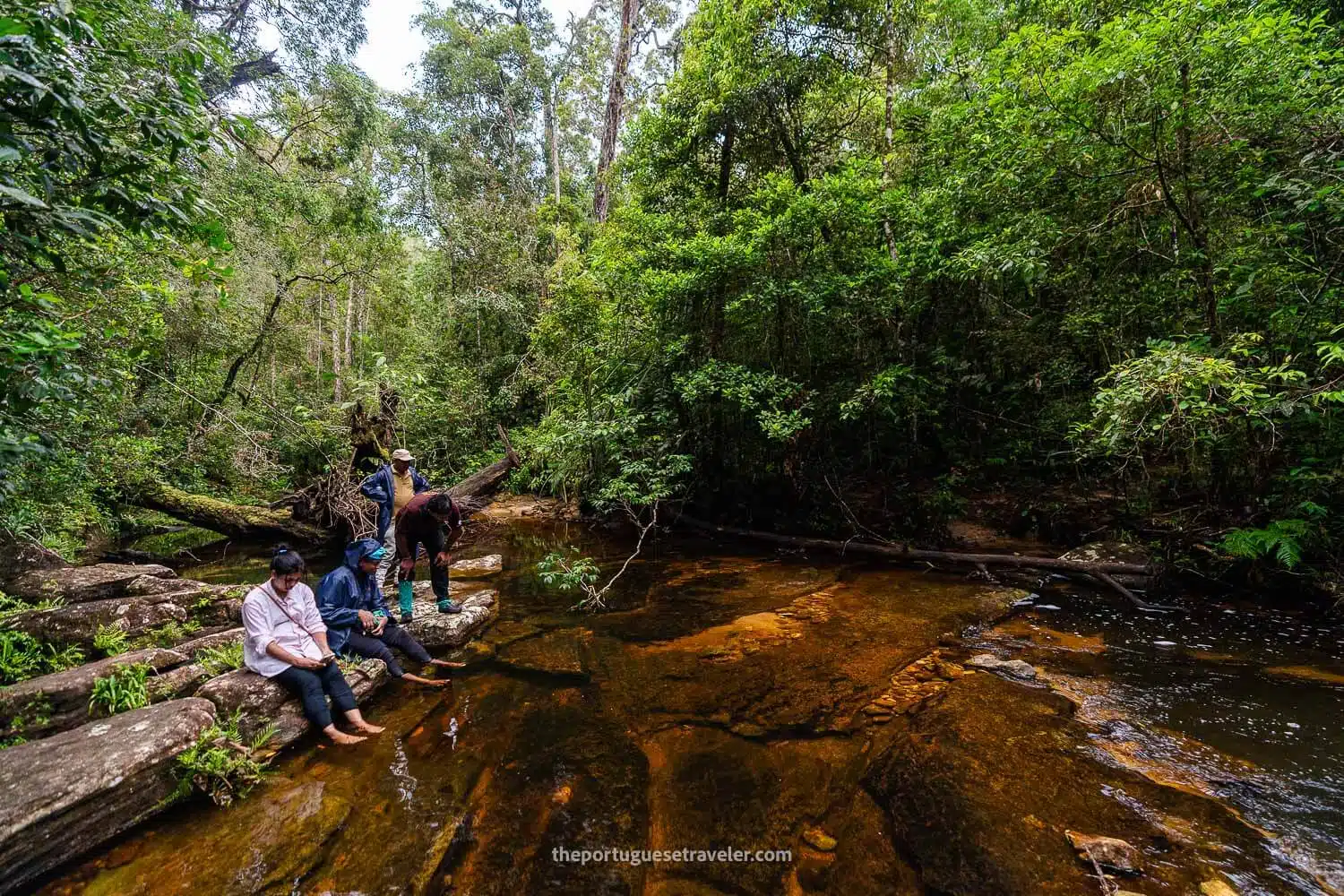
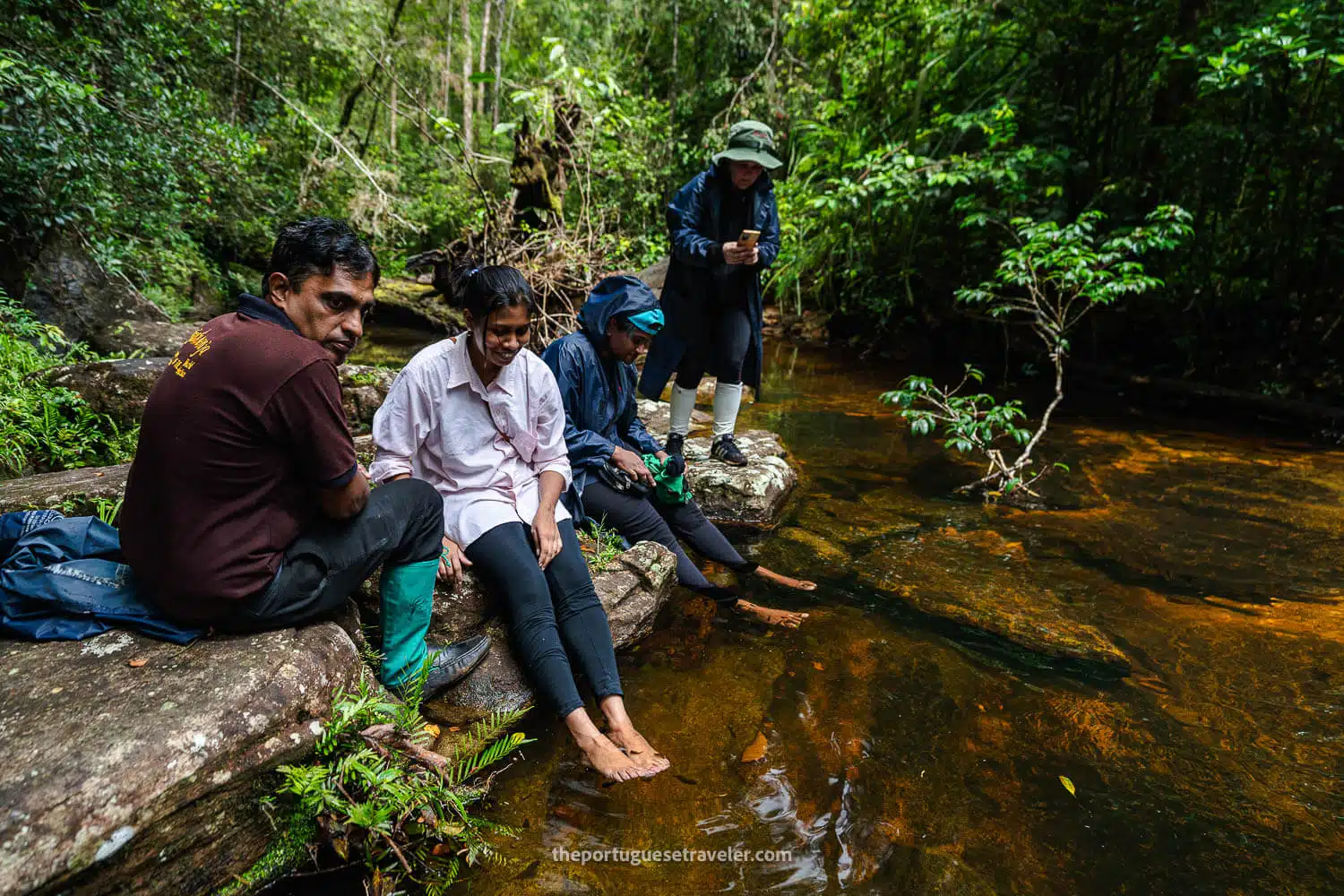
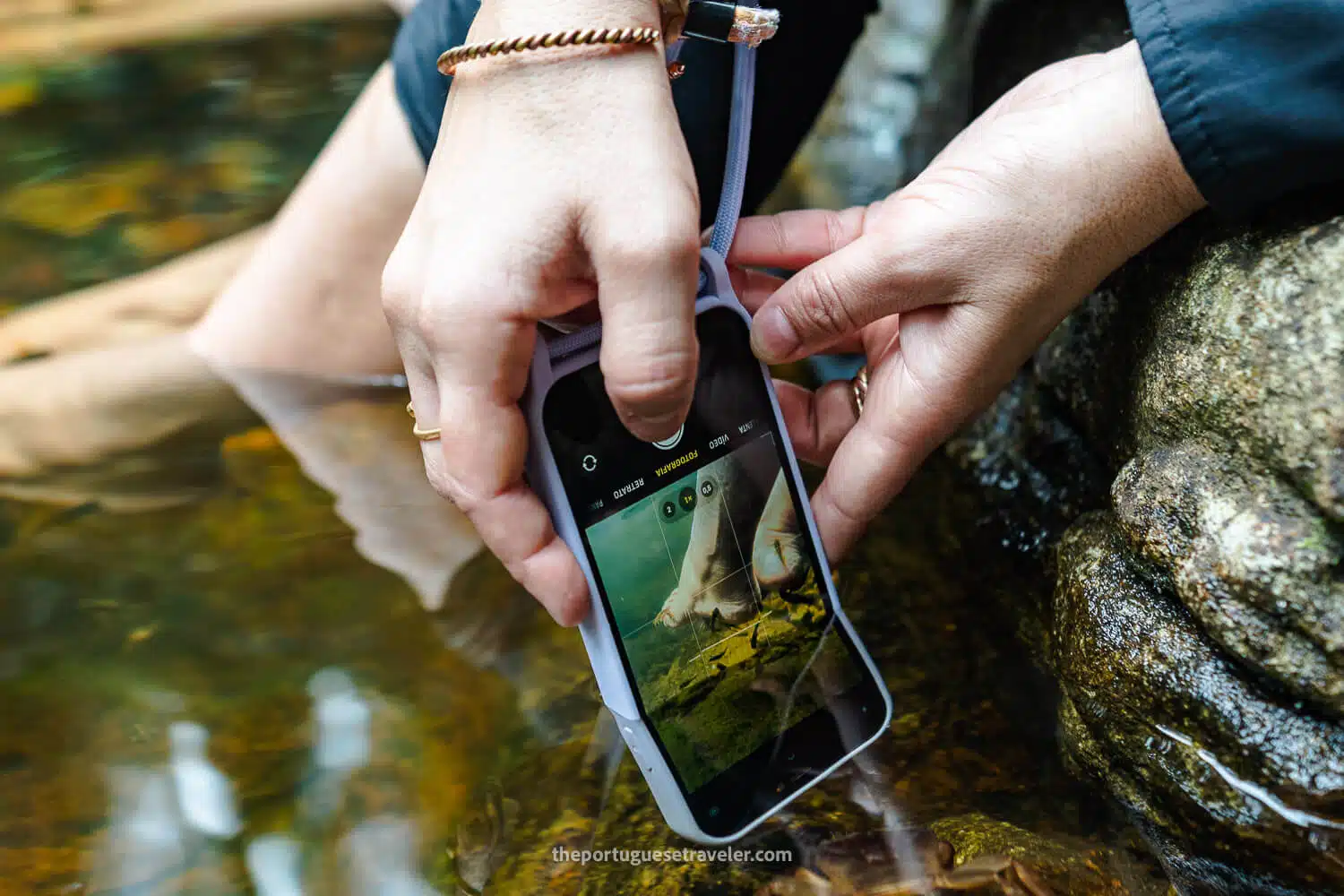
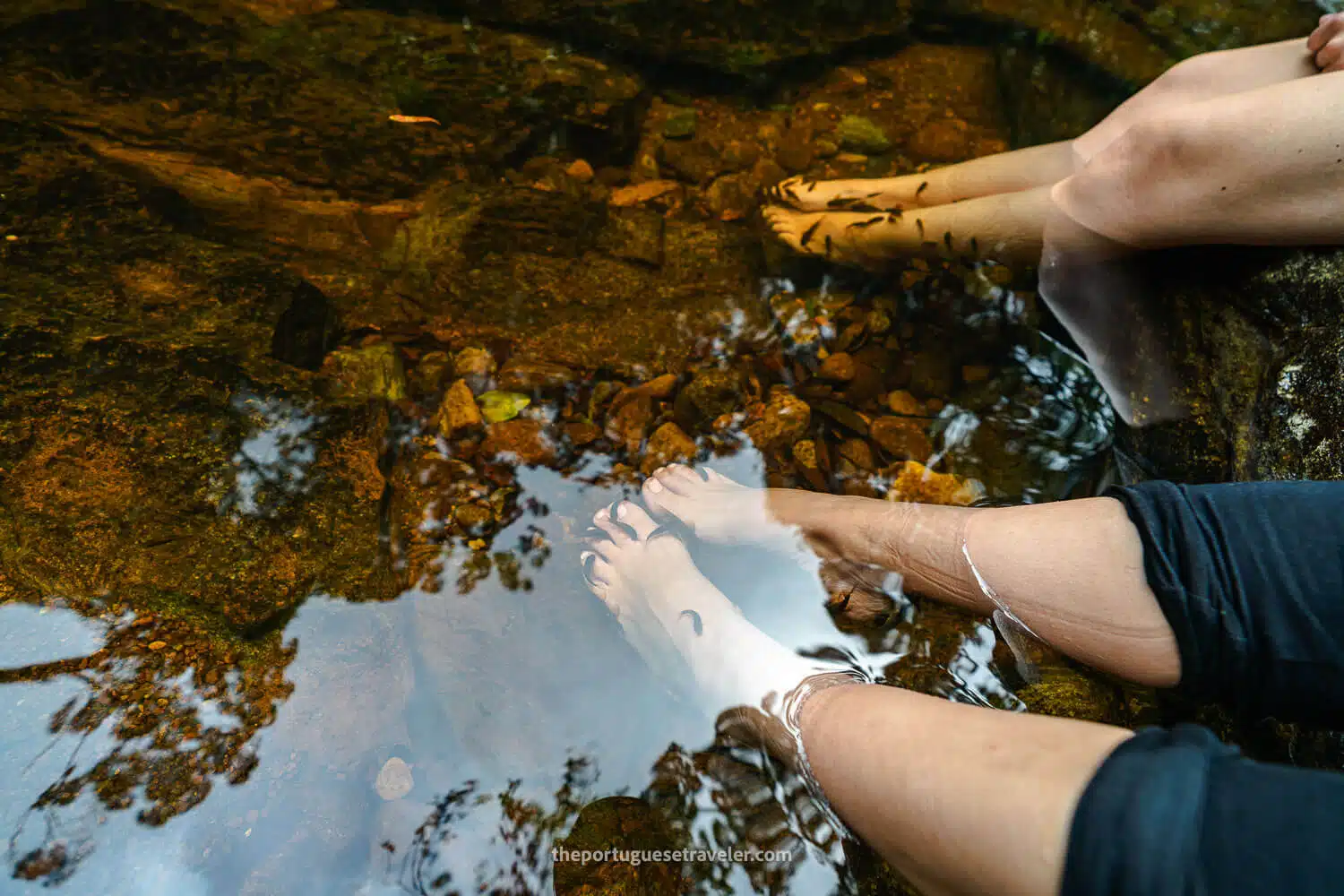
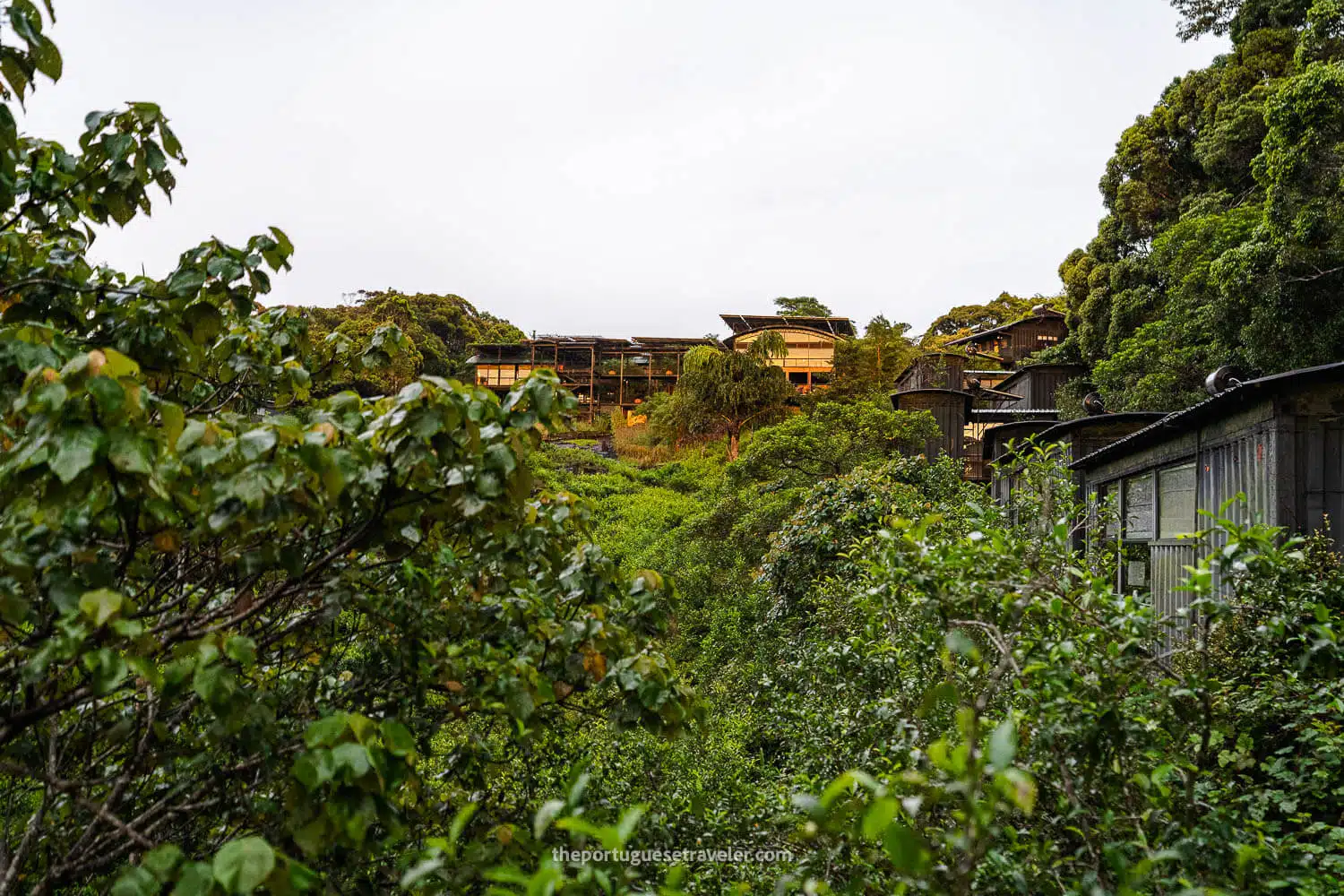
Dawn Wildlife Encounters
The next morning, Jorge and I woke early, determined to catch sight of early-rising animals. Within minutes, we spotted leaf-eating monkeys just beyond the lodge, along with a millipede and smaller birds. It was the perfect way to start the day!
After breakfast, we packed up and left the reserve, taking in the scenery along the way – peacocks, lizards, orchids, and tea plantations framed our journey. This adventure felt like just a taste of Sinharaja’s magic. I can’t wait to return and dive deeper into its wonders. Rainforests truly have a special charm that’s hard to match.
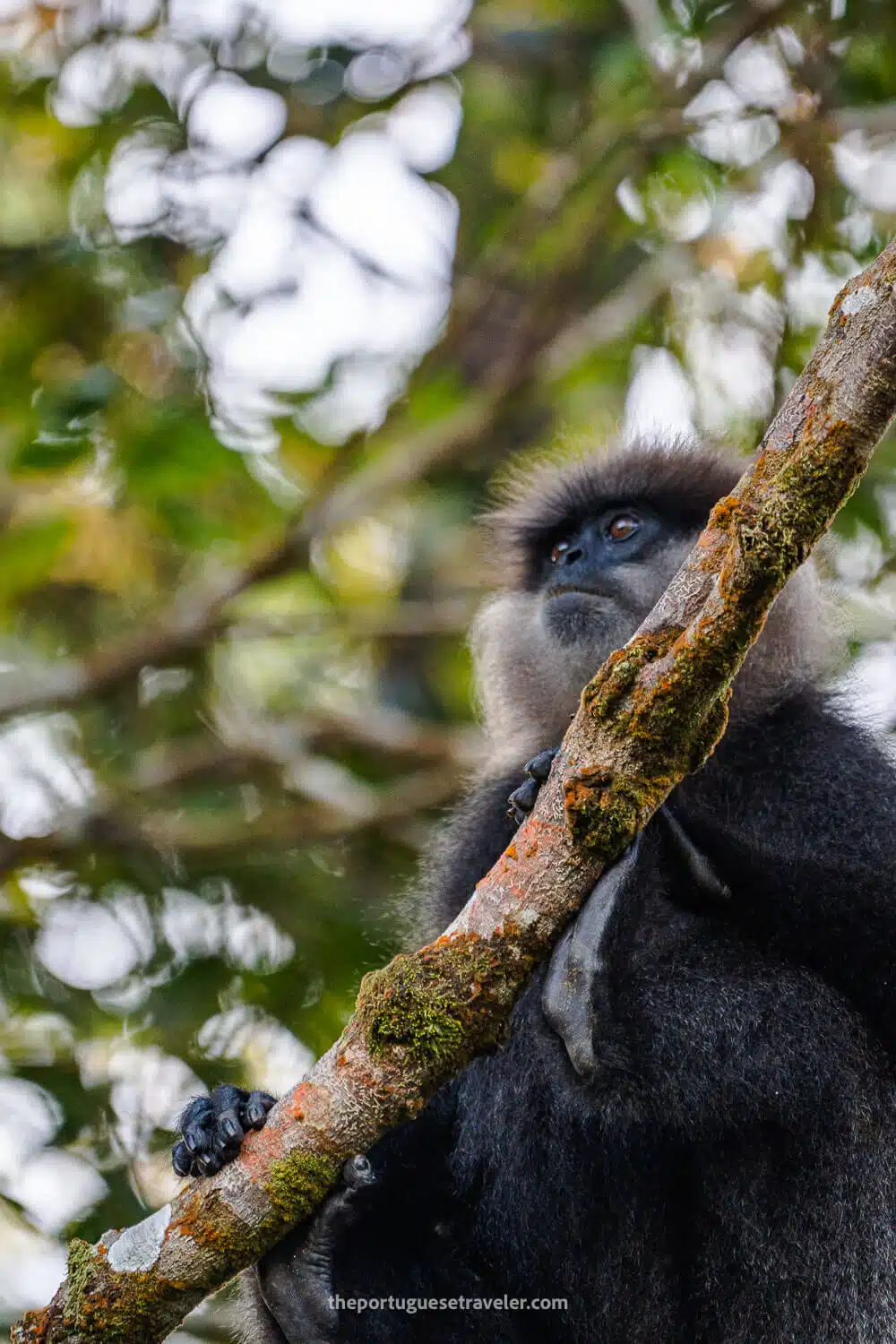
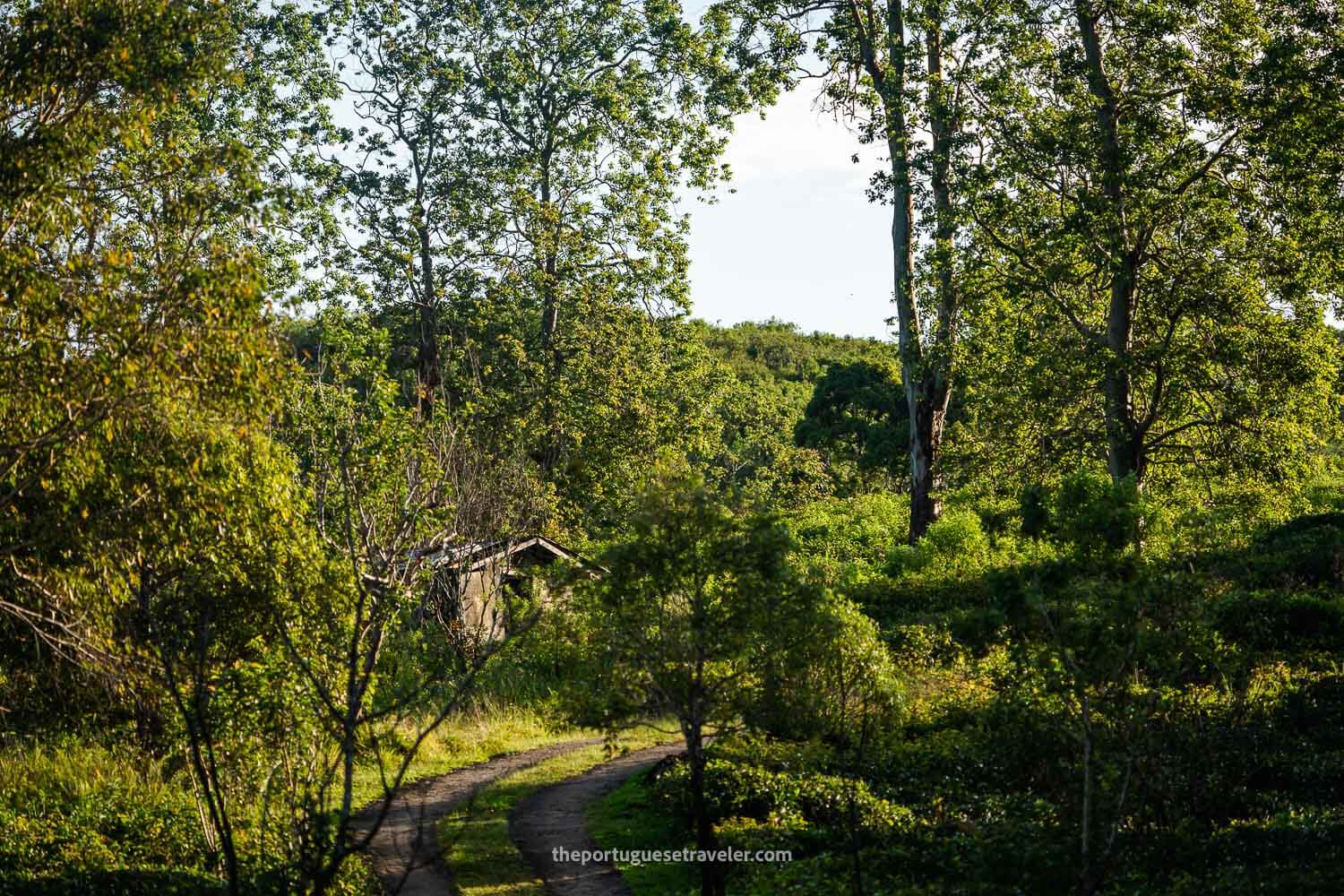
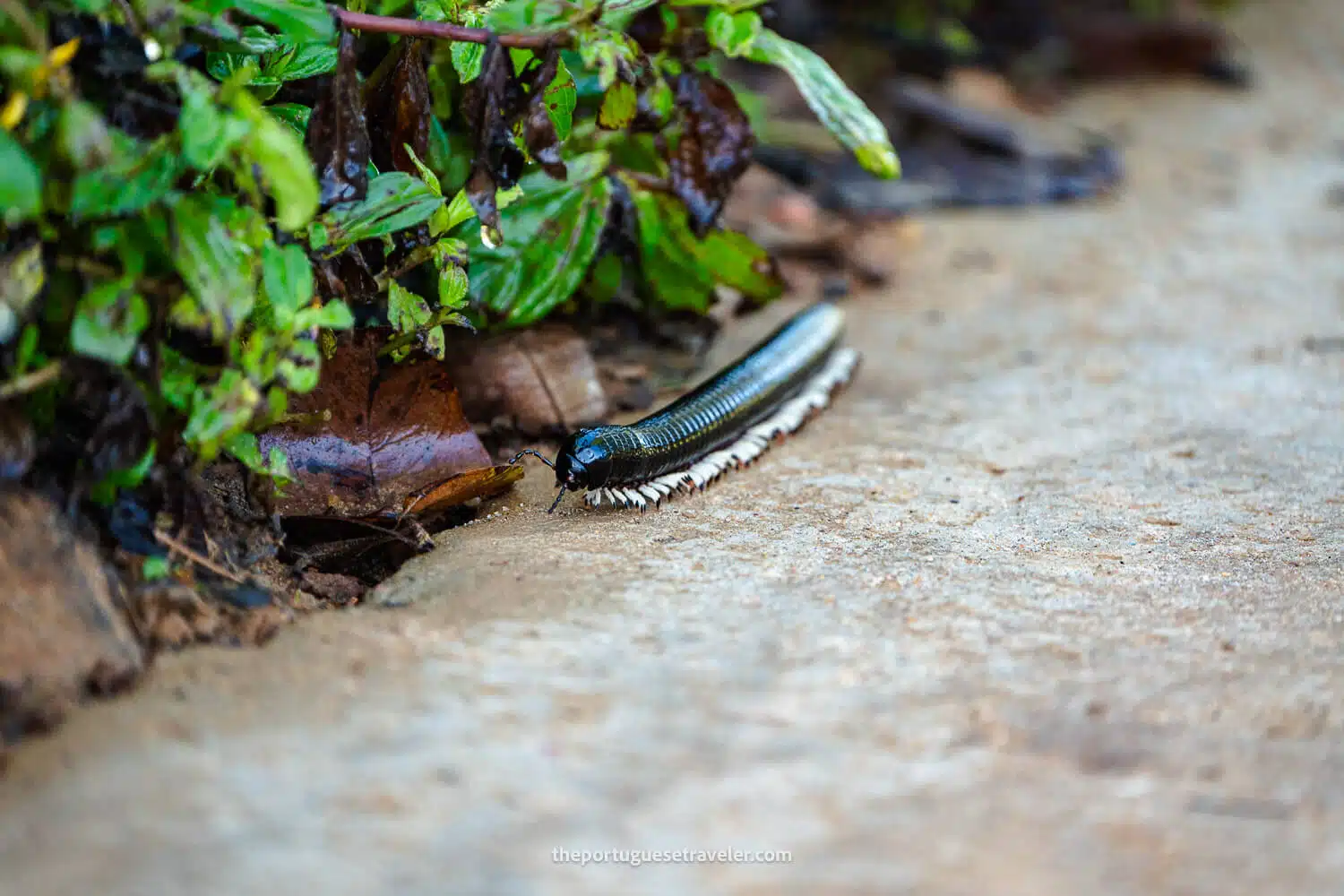
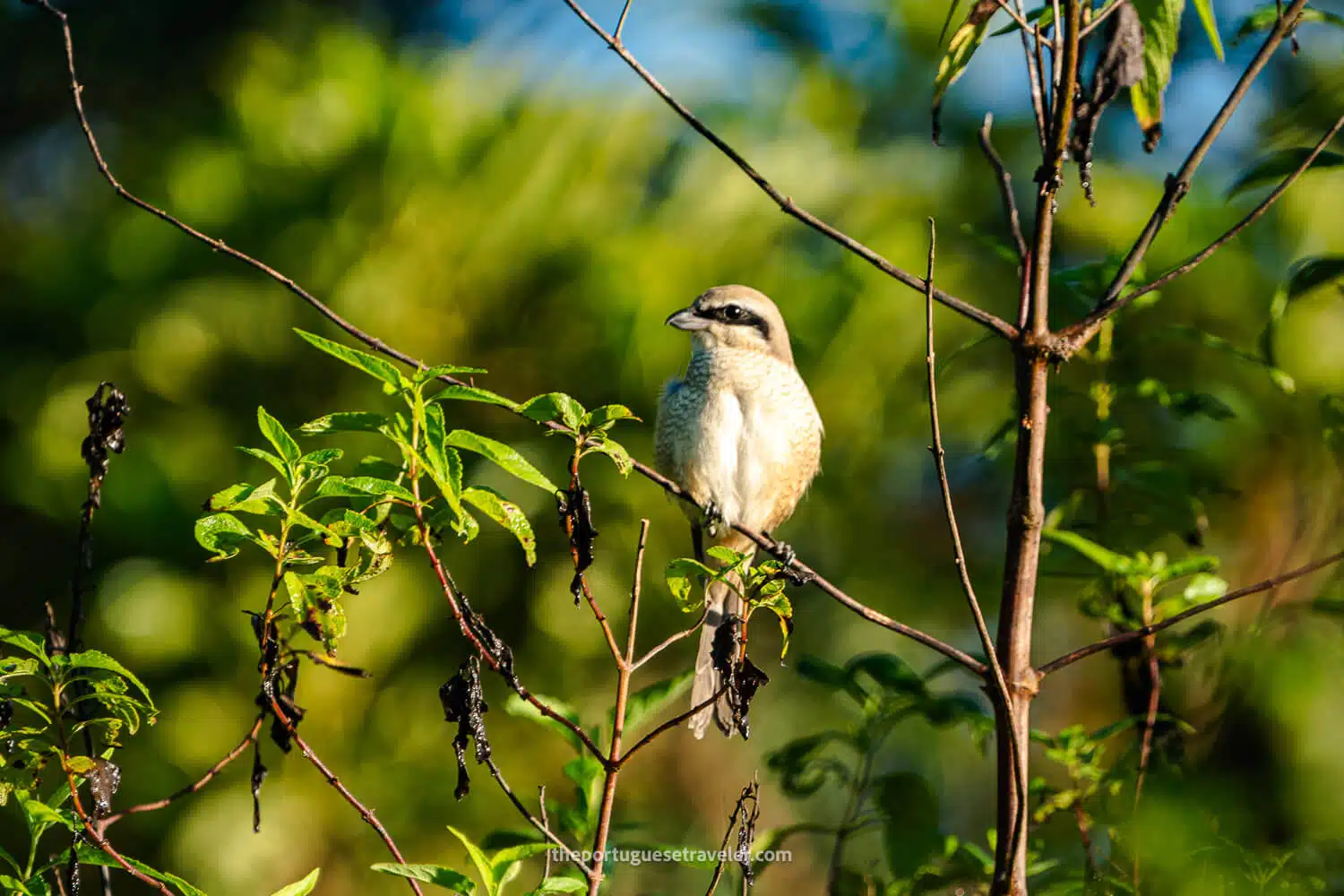
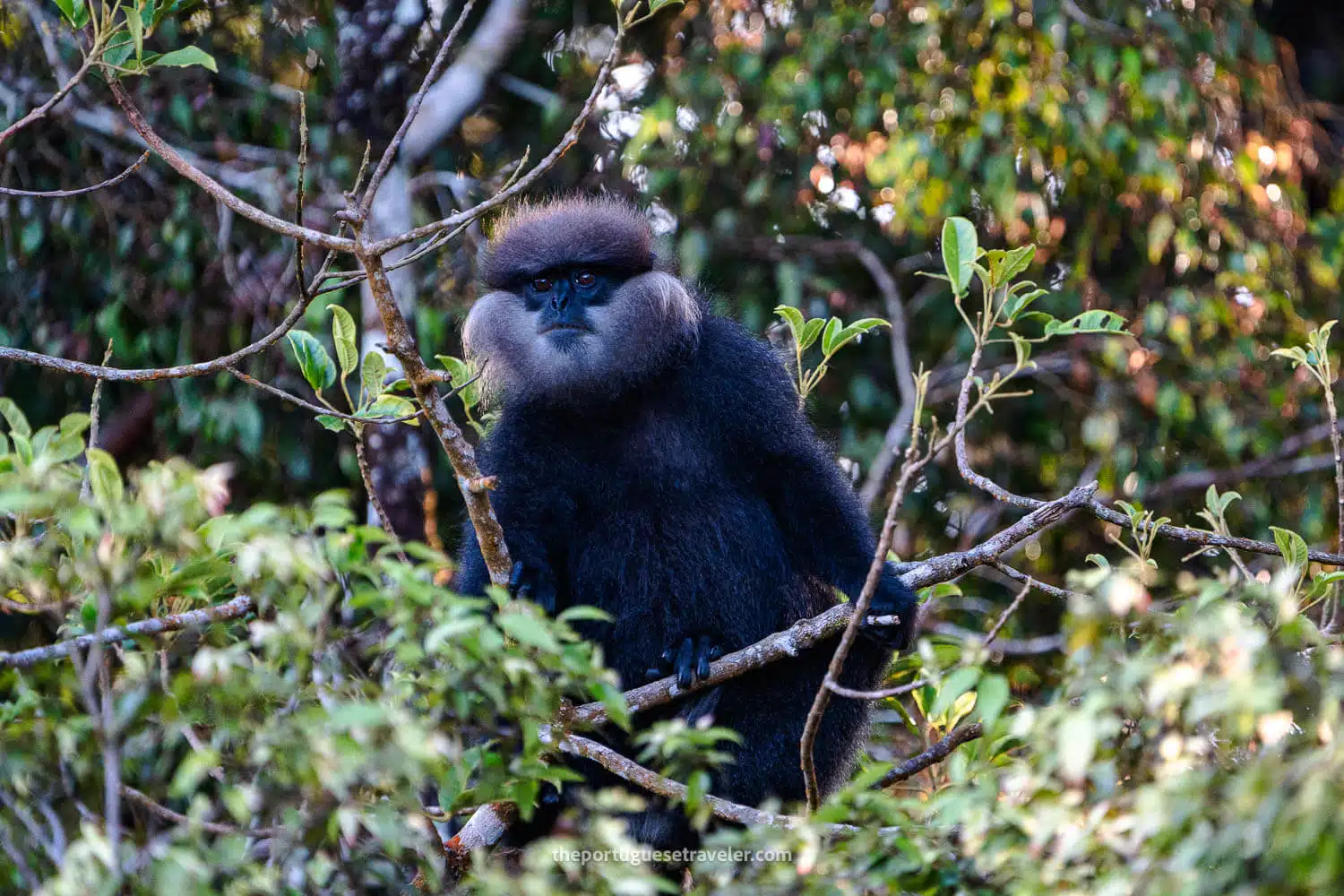
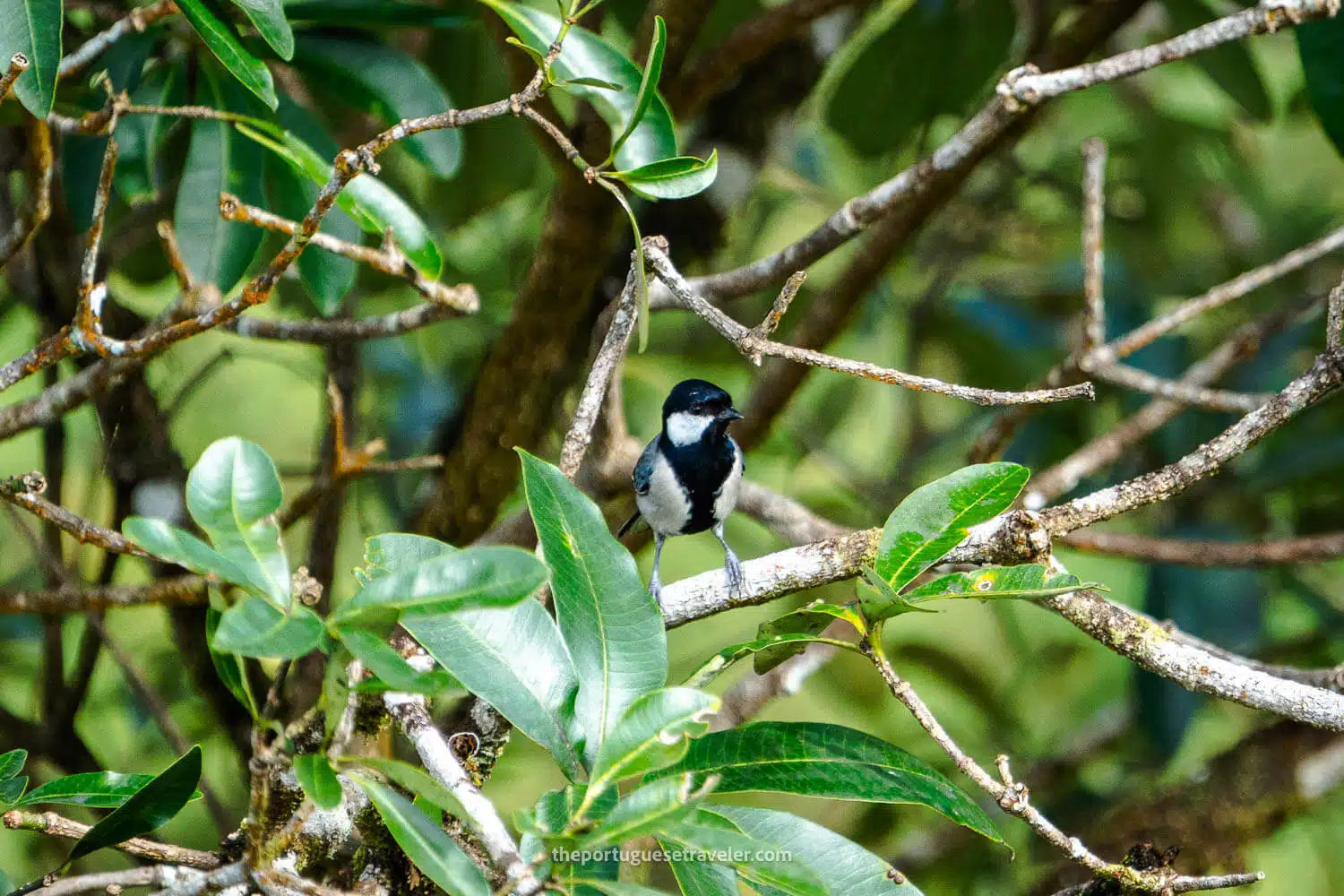
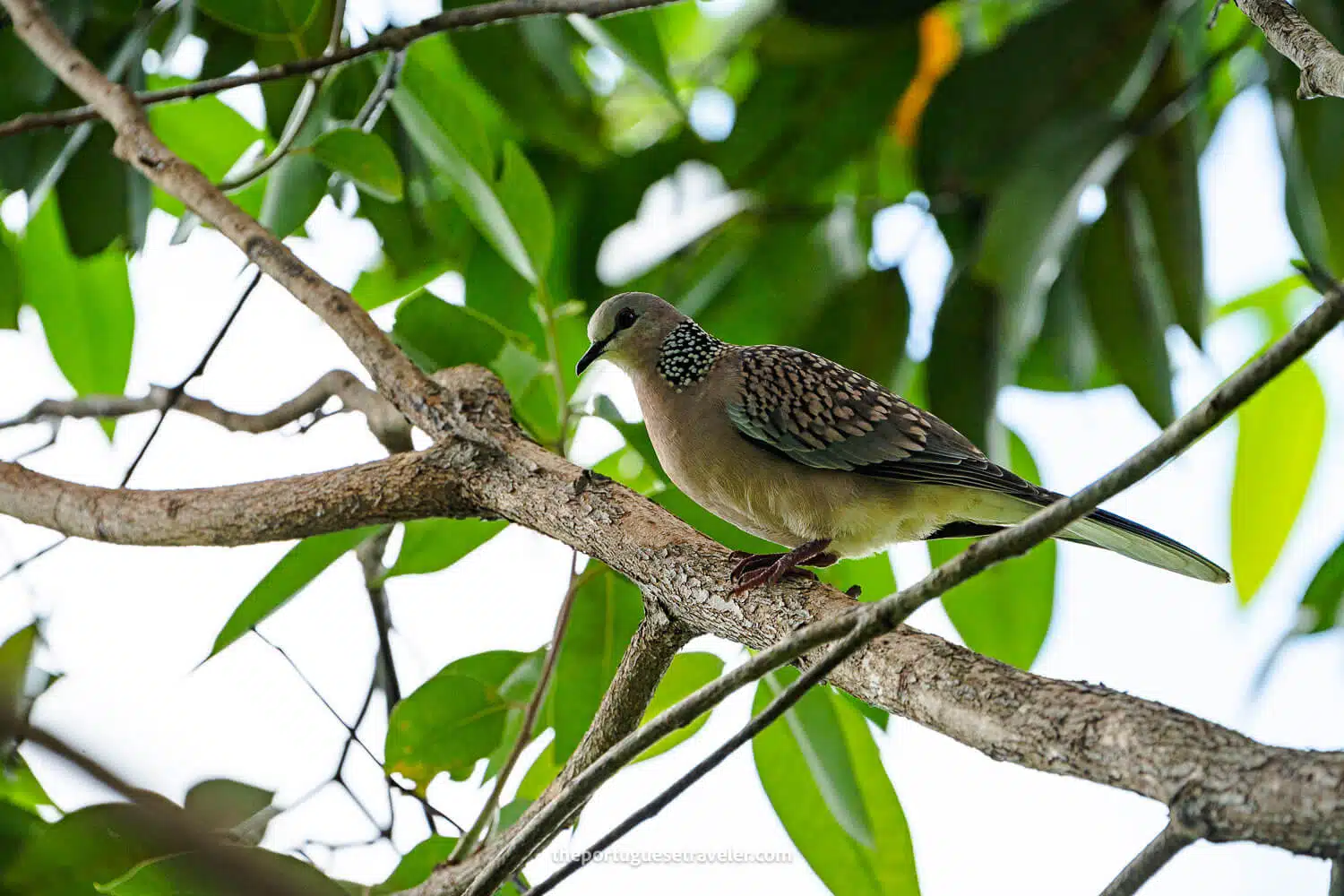
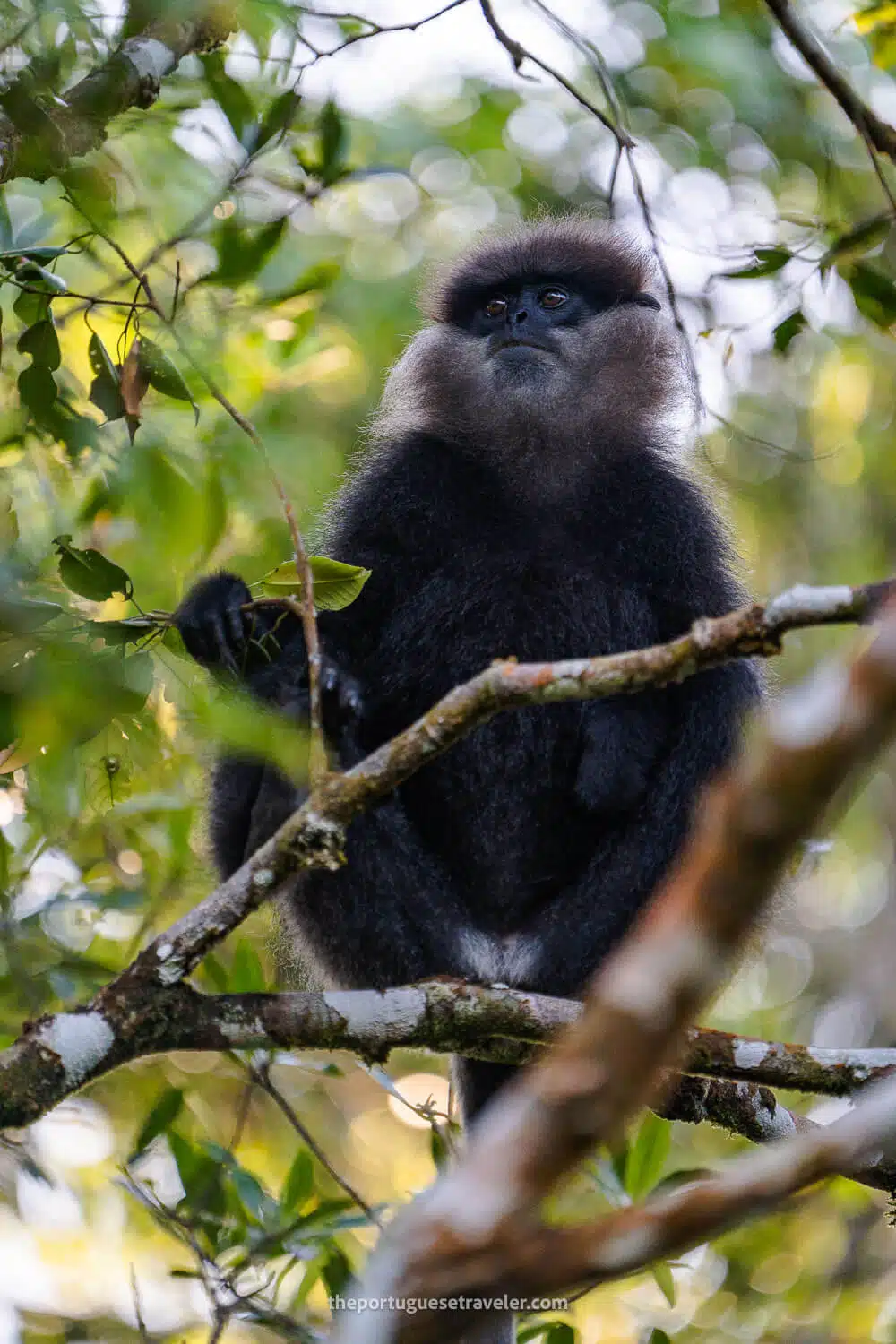
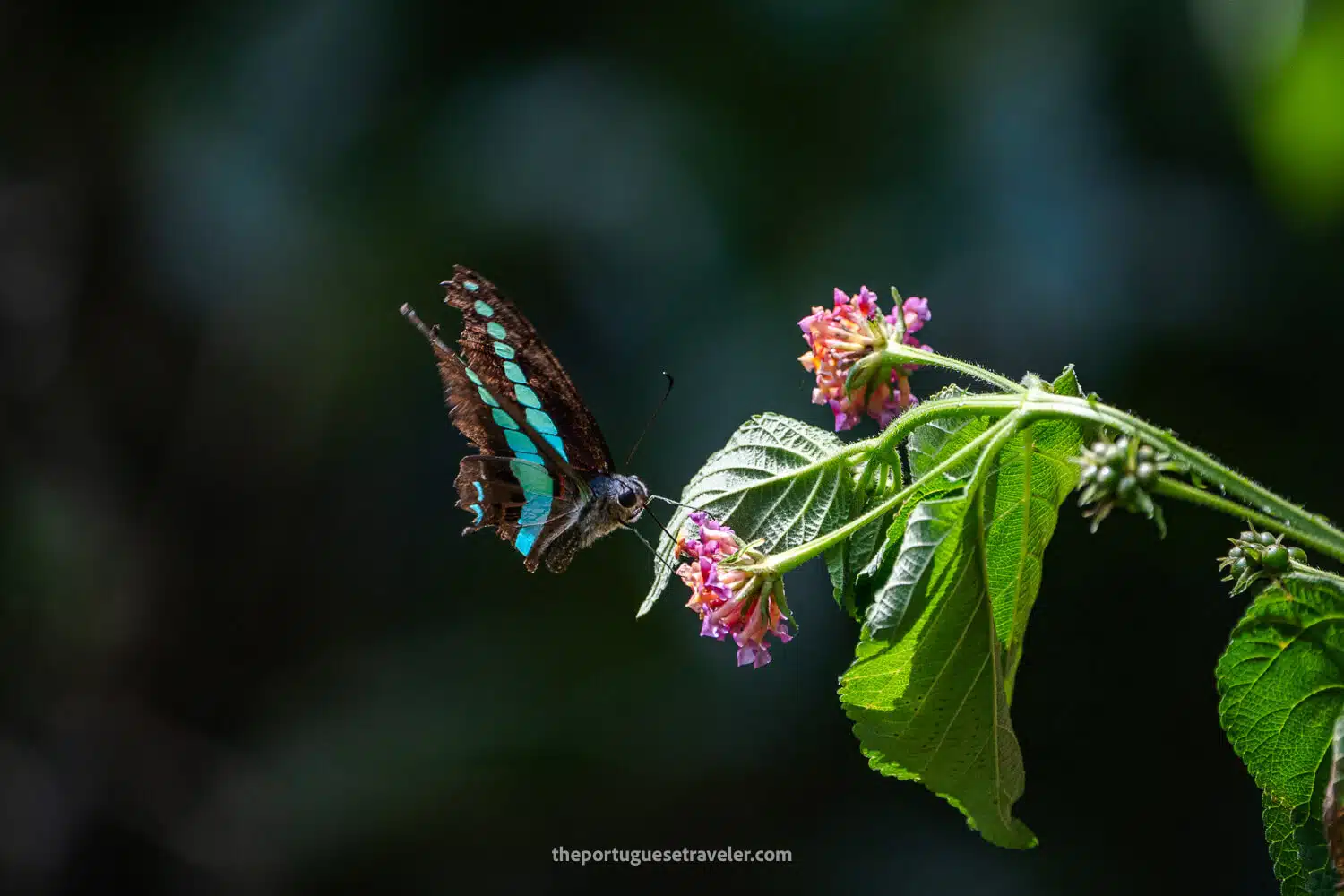
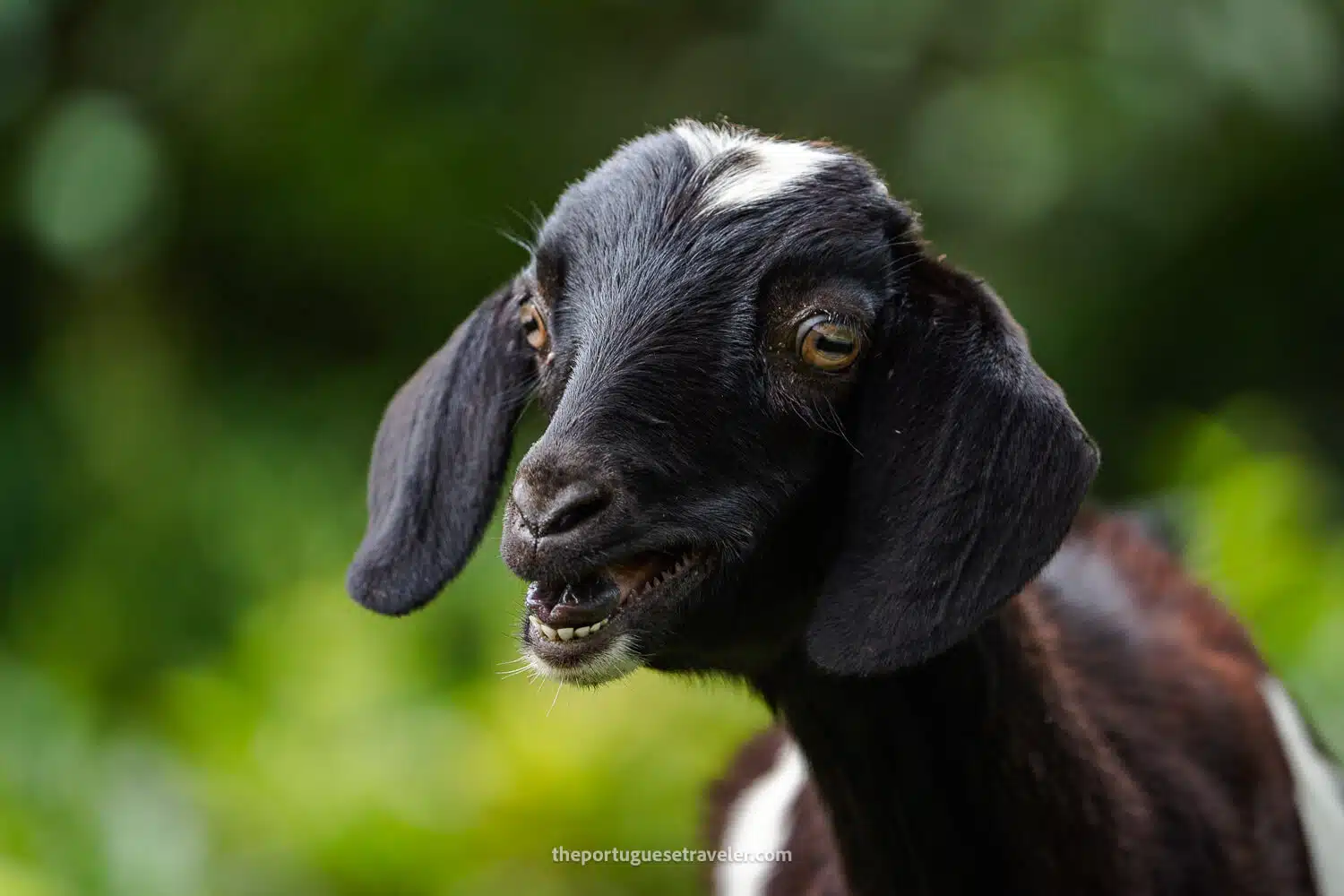
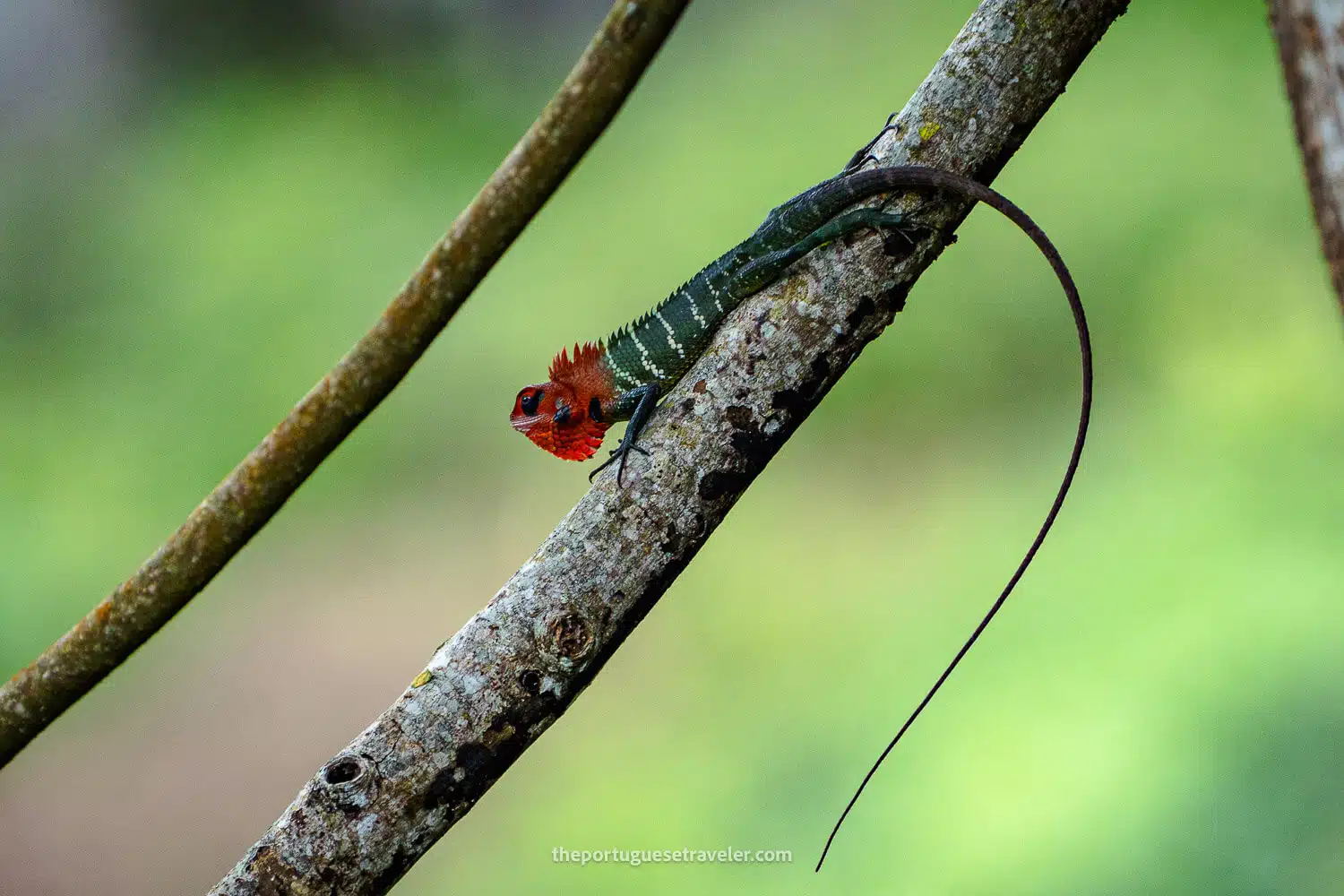
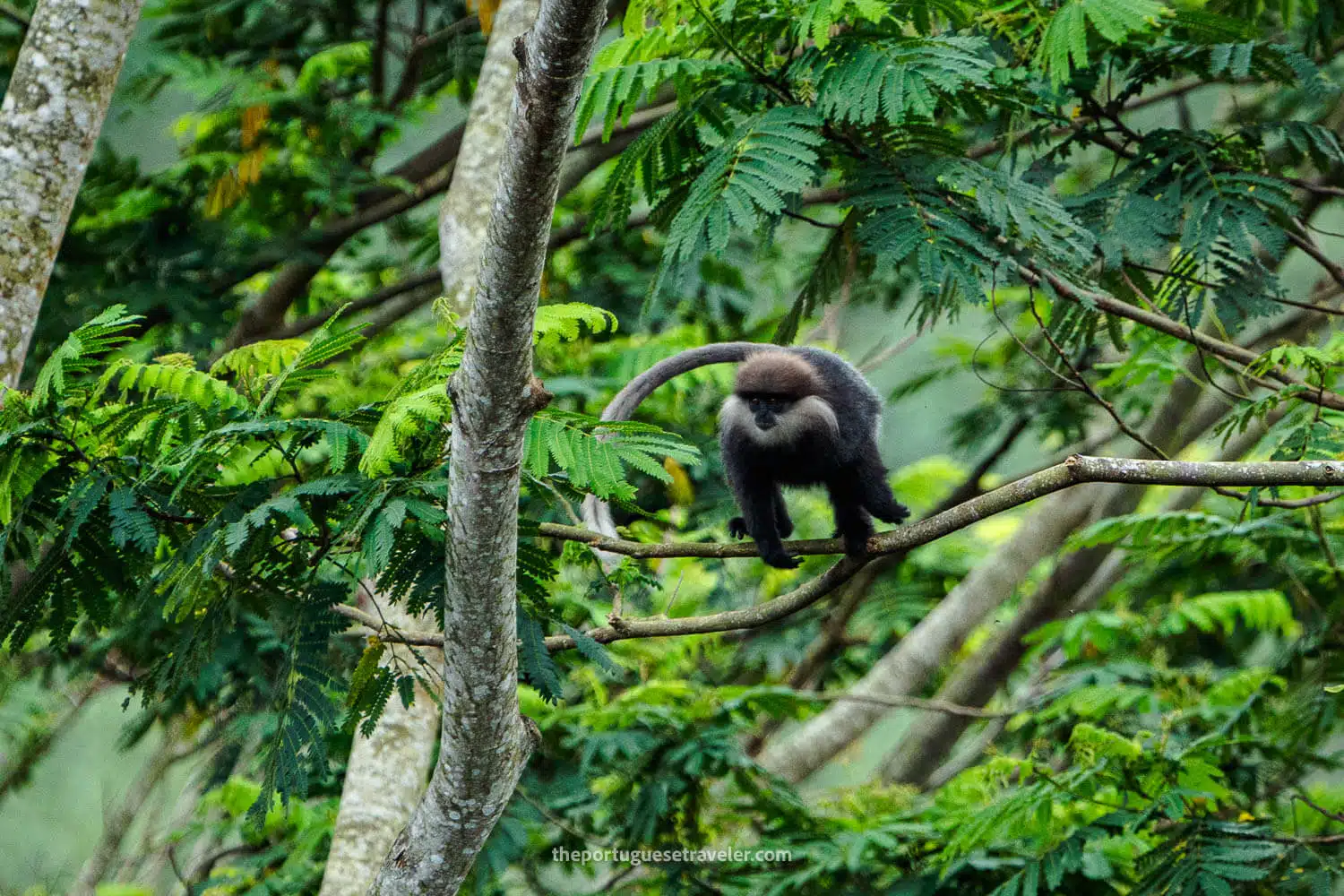
Photo Gallery
The Rainforest Ecolodge
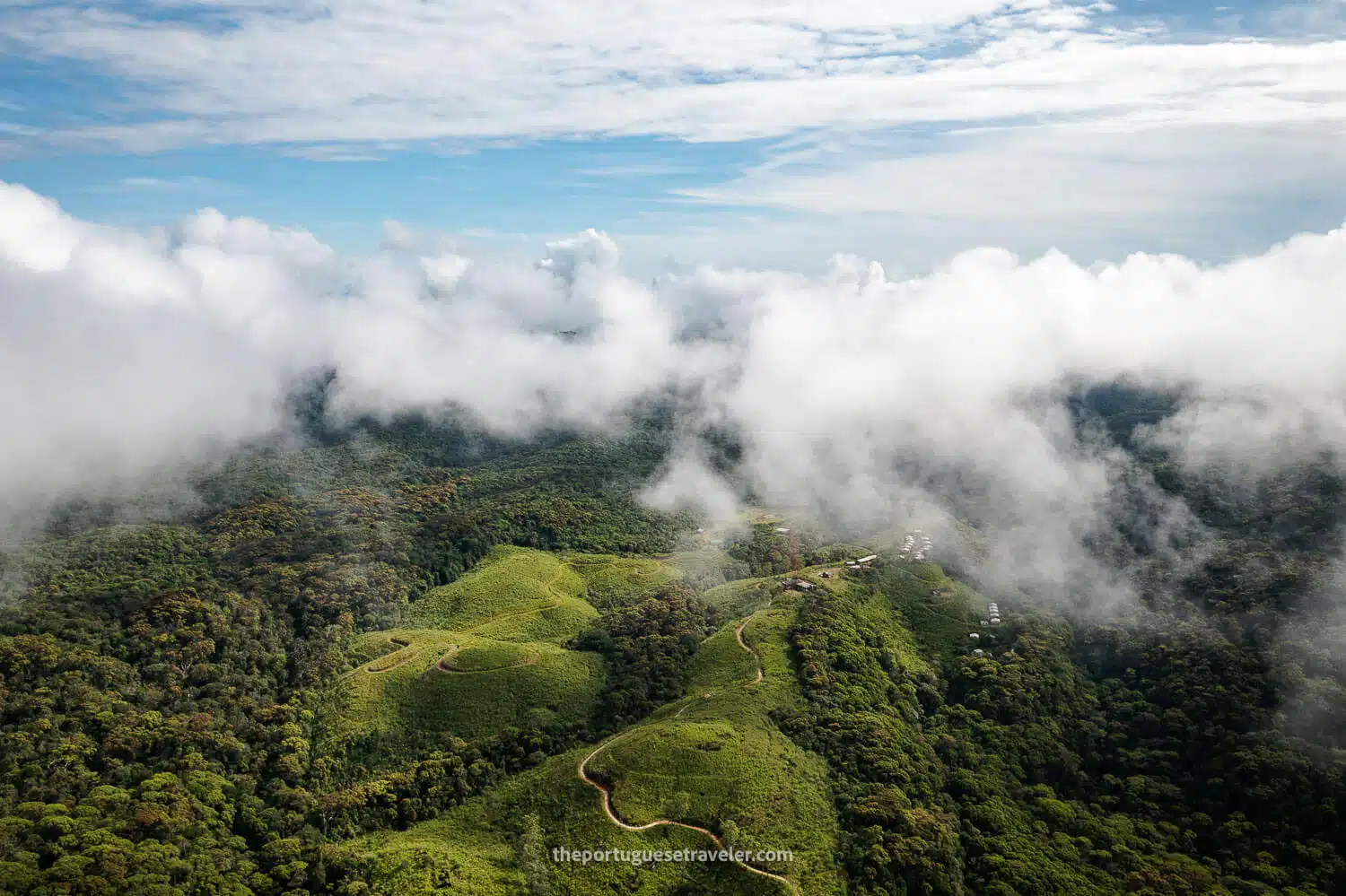
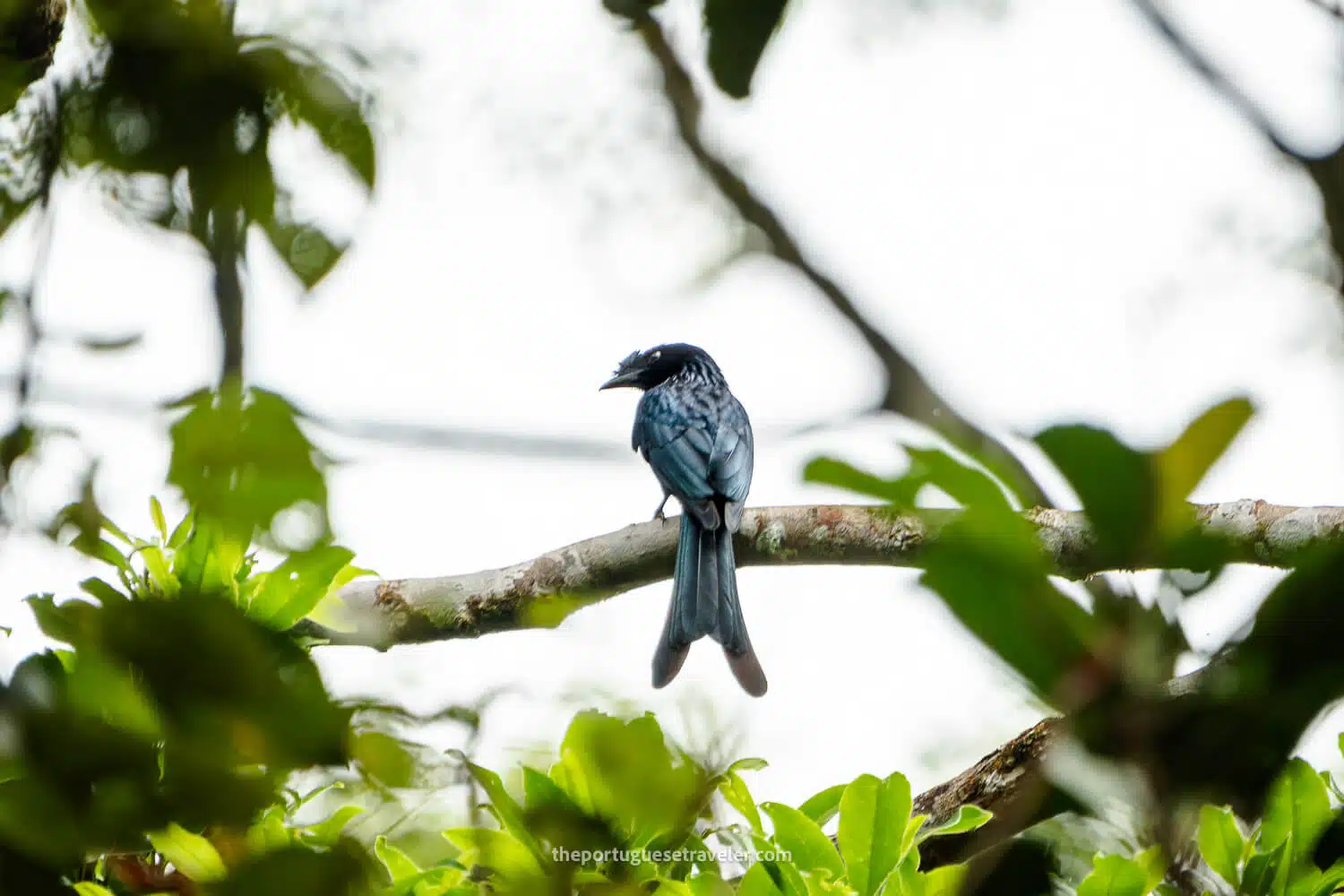
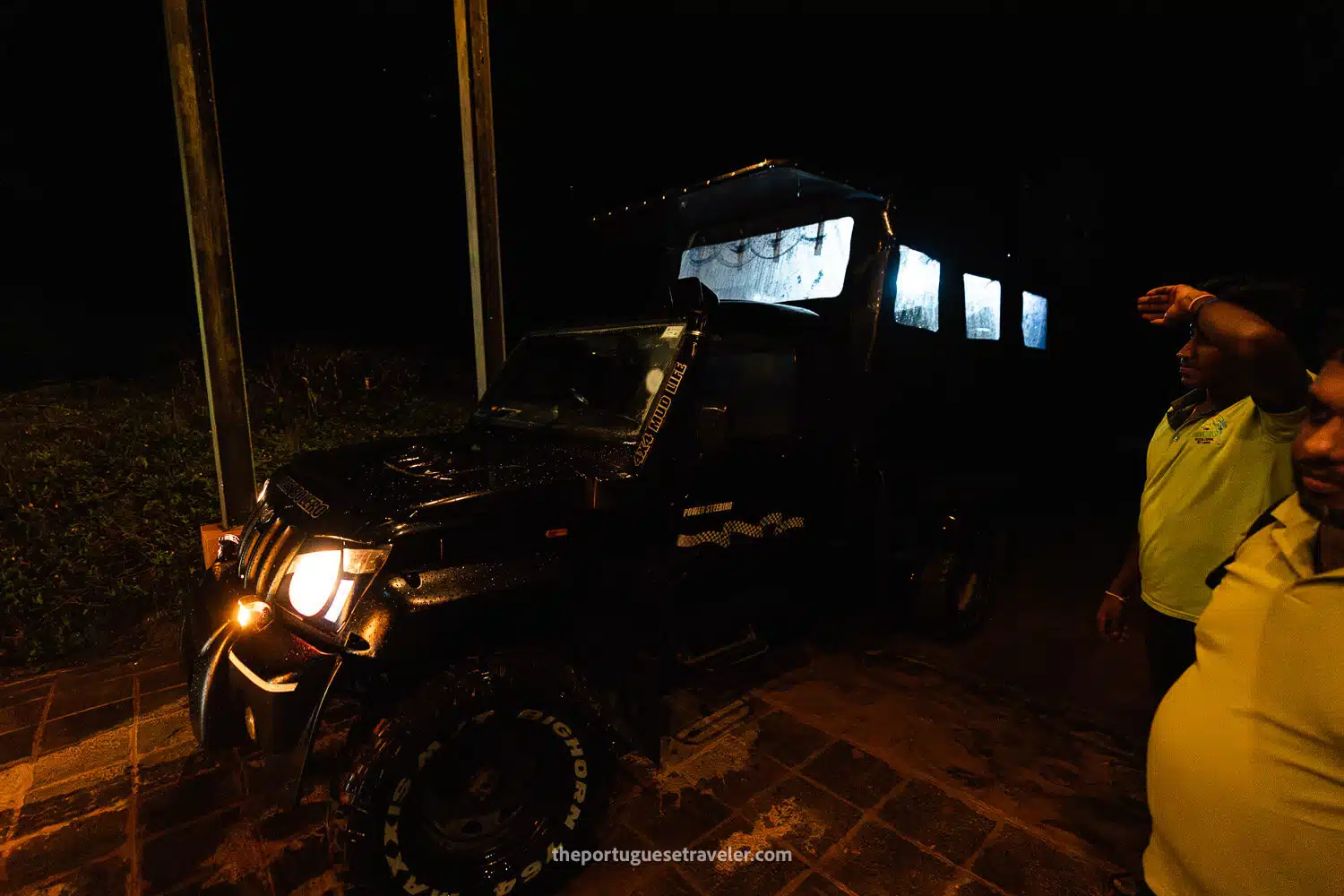
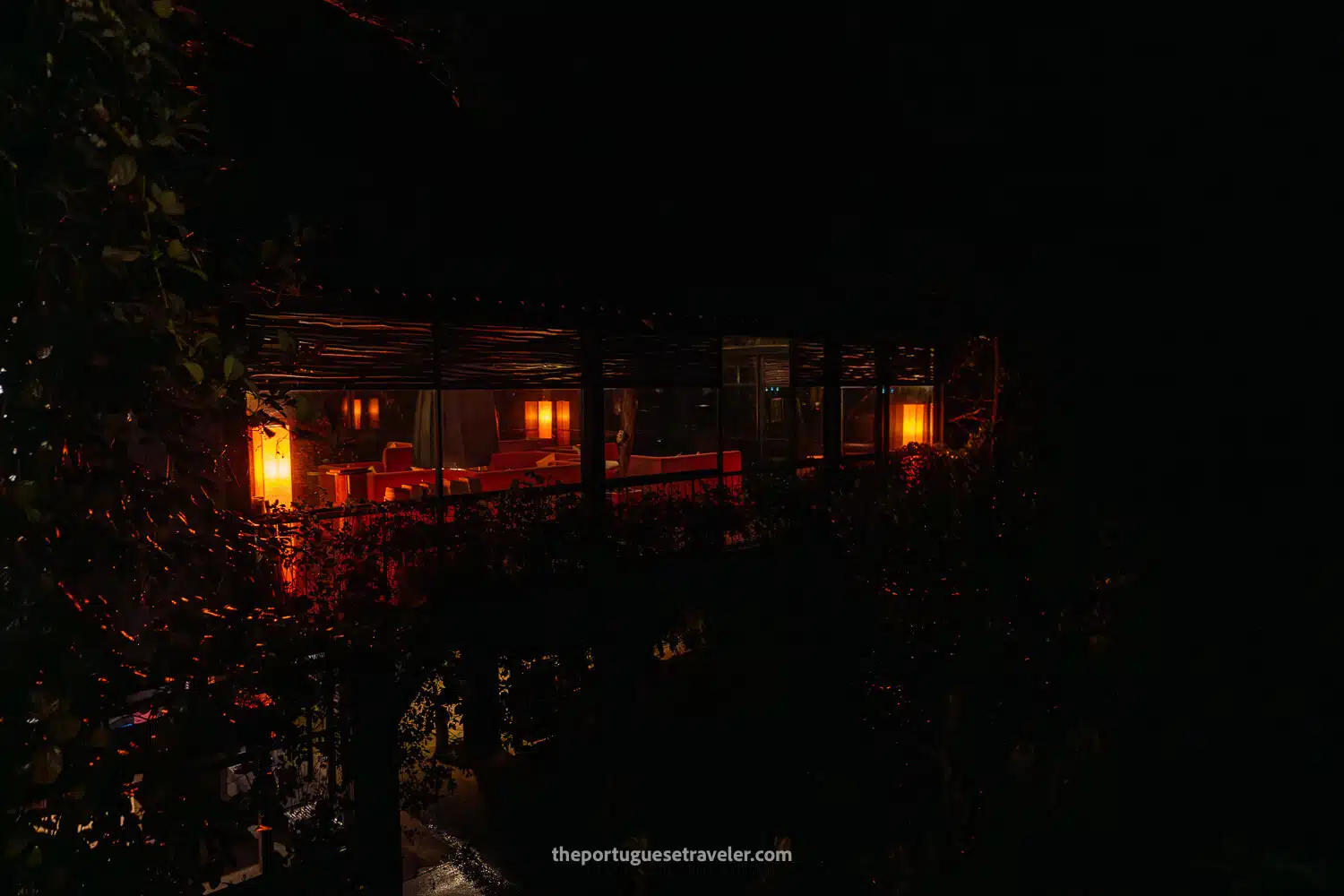
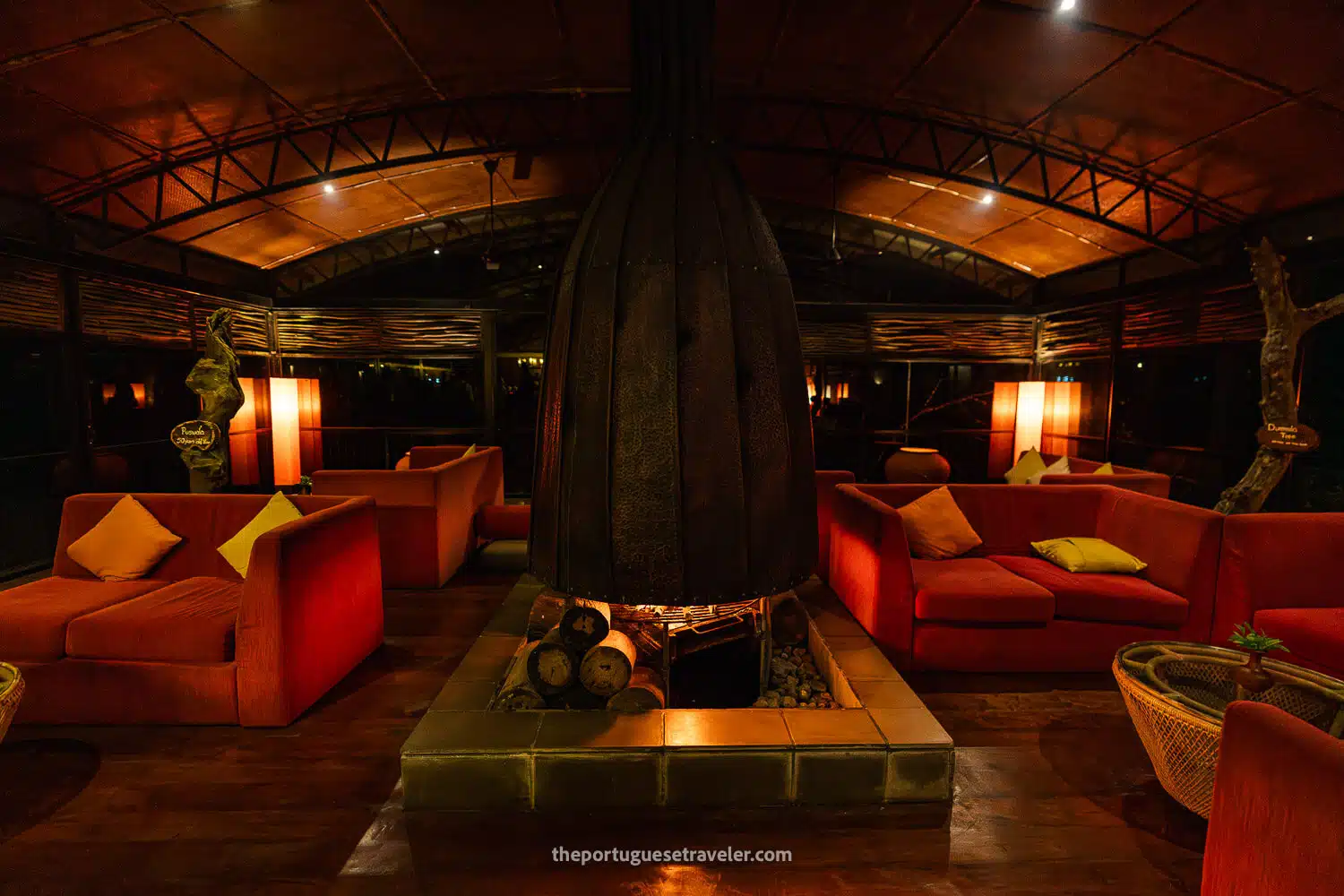
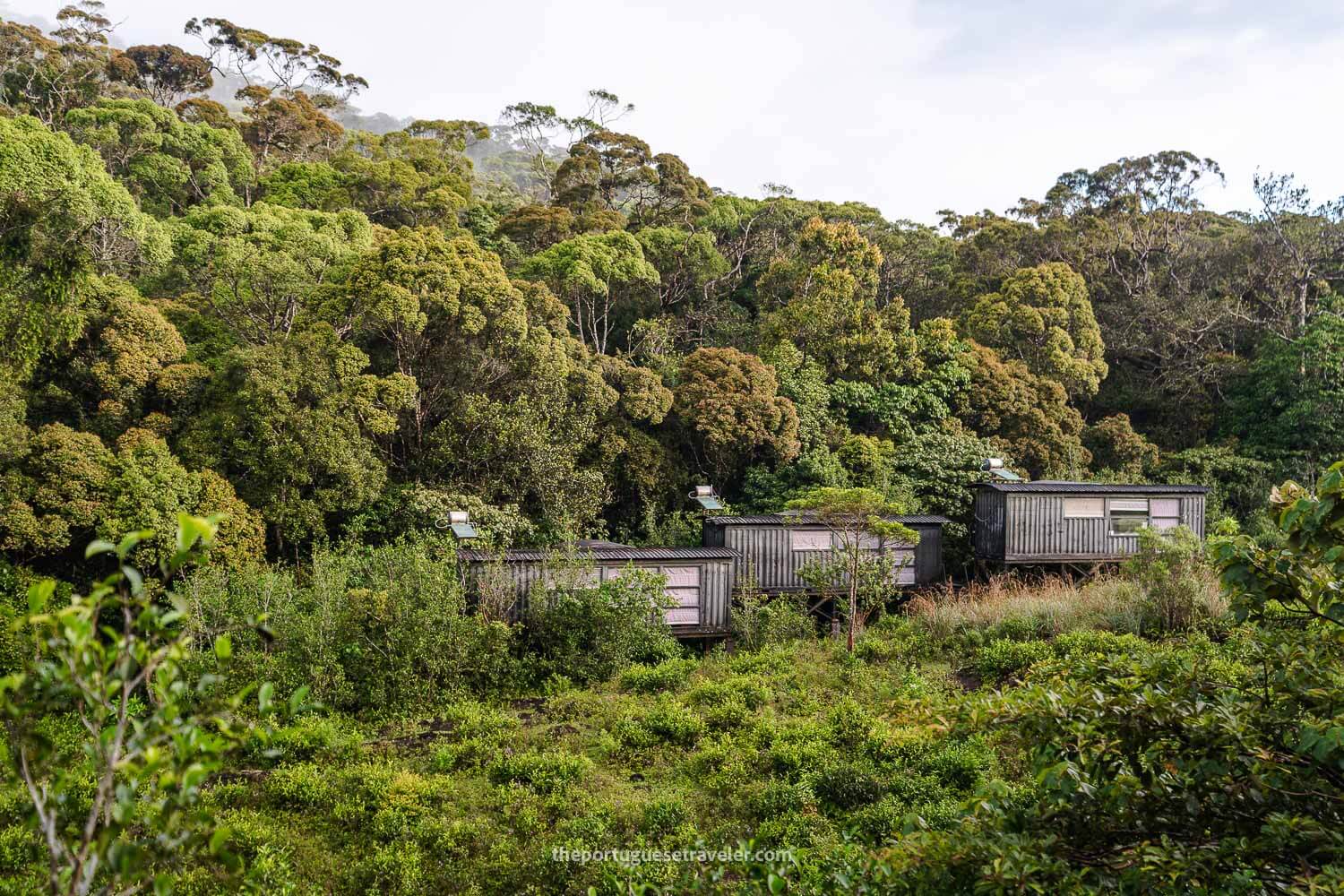
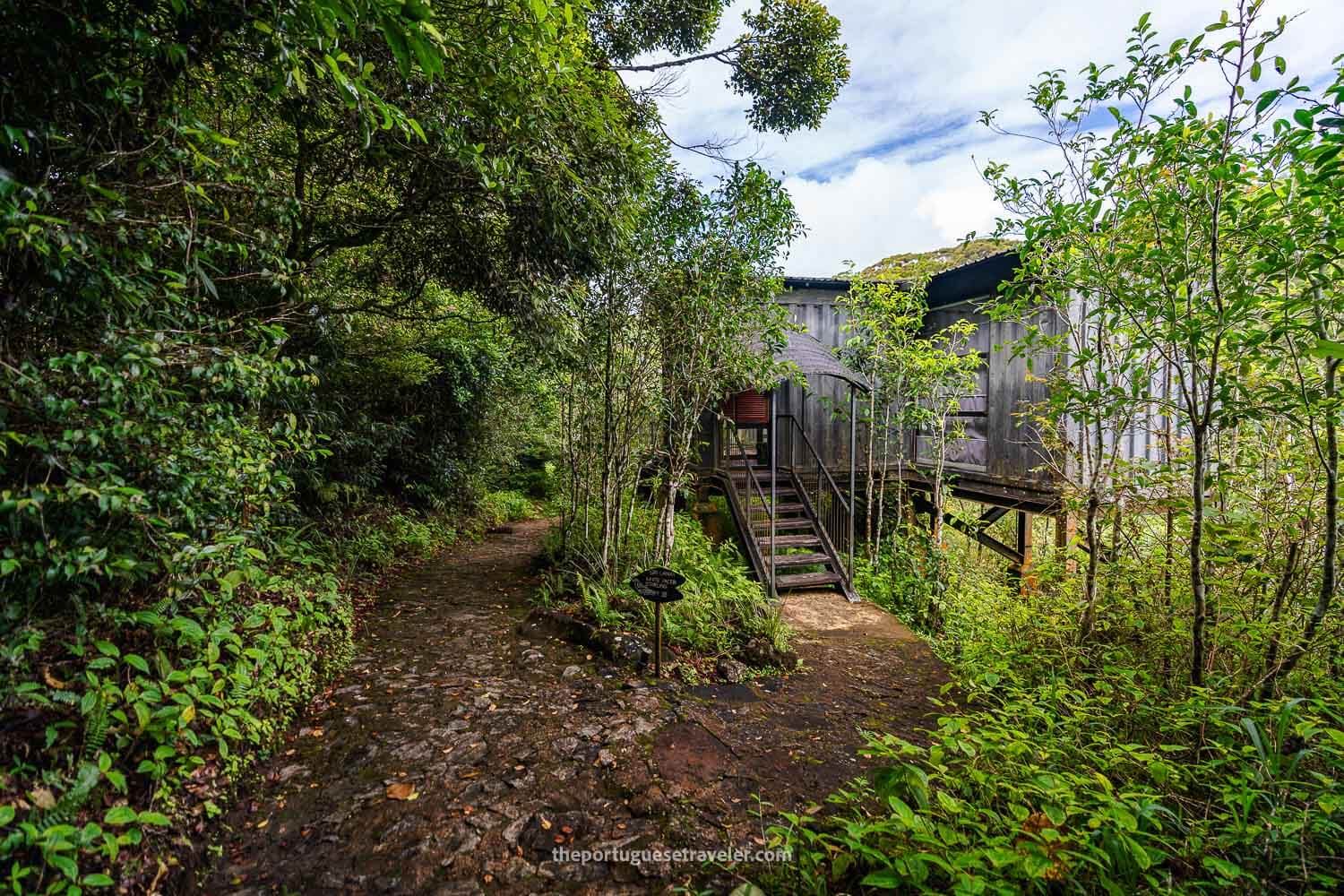
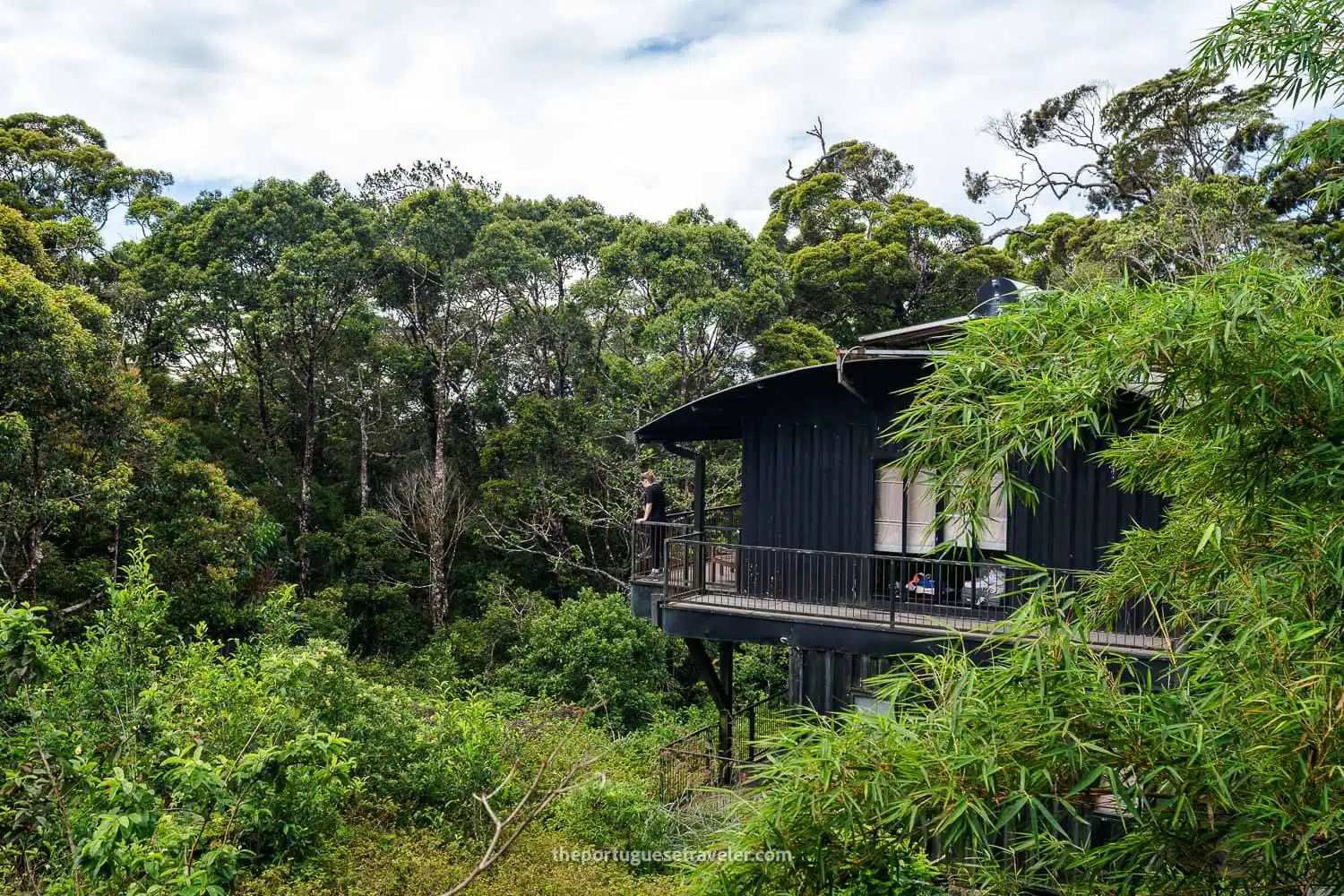
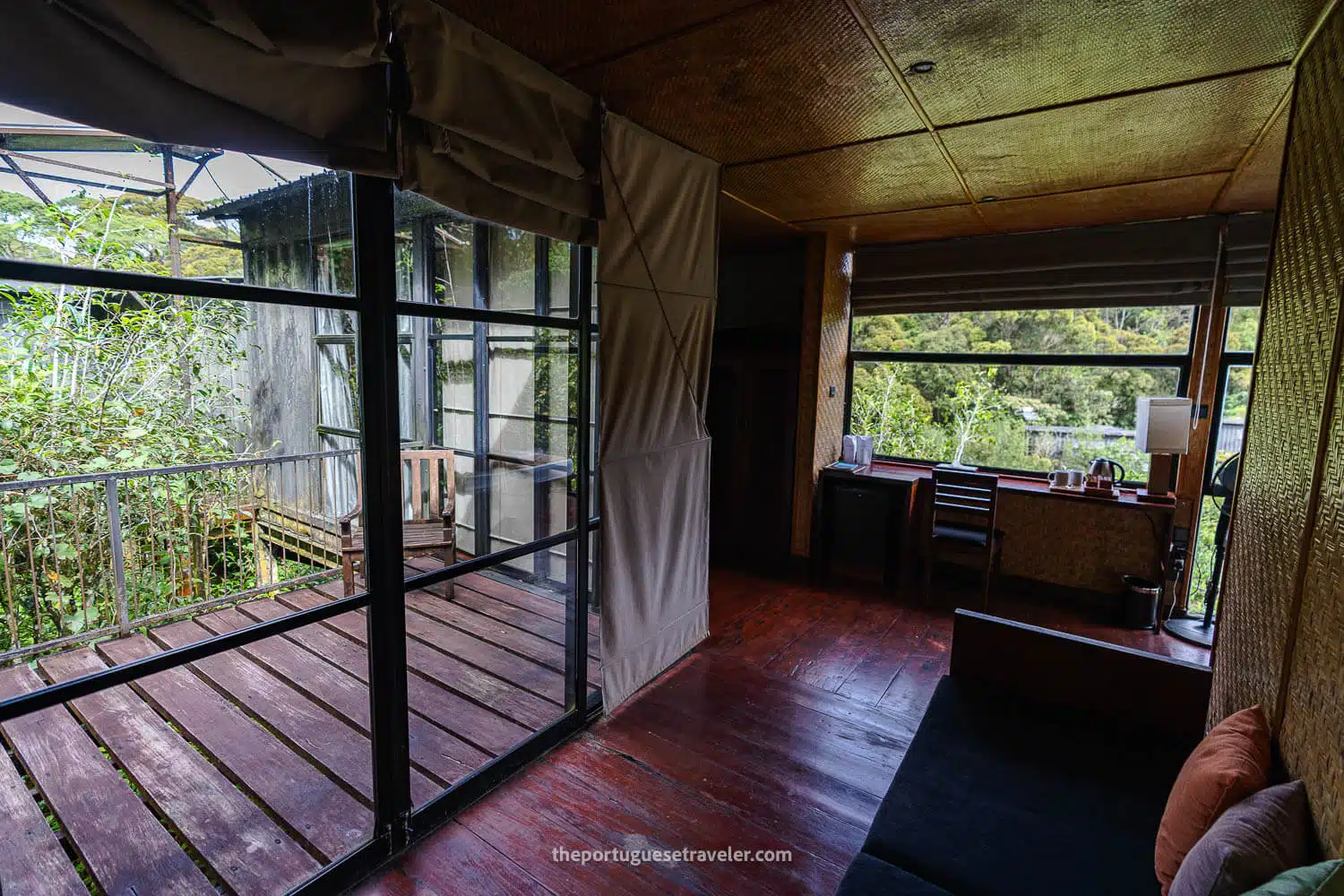
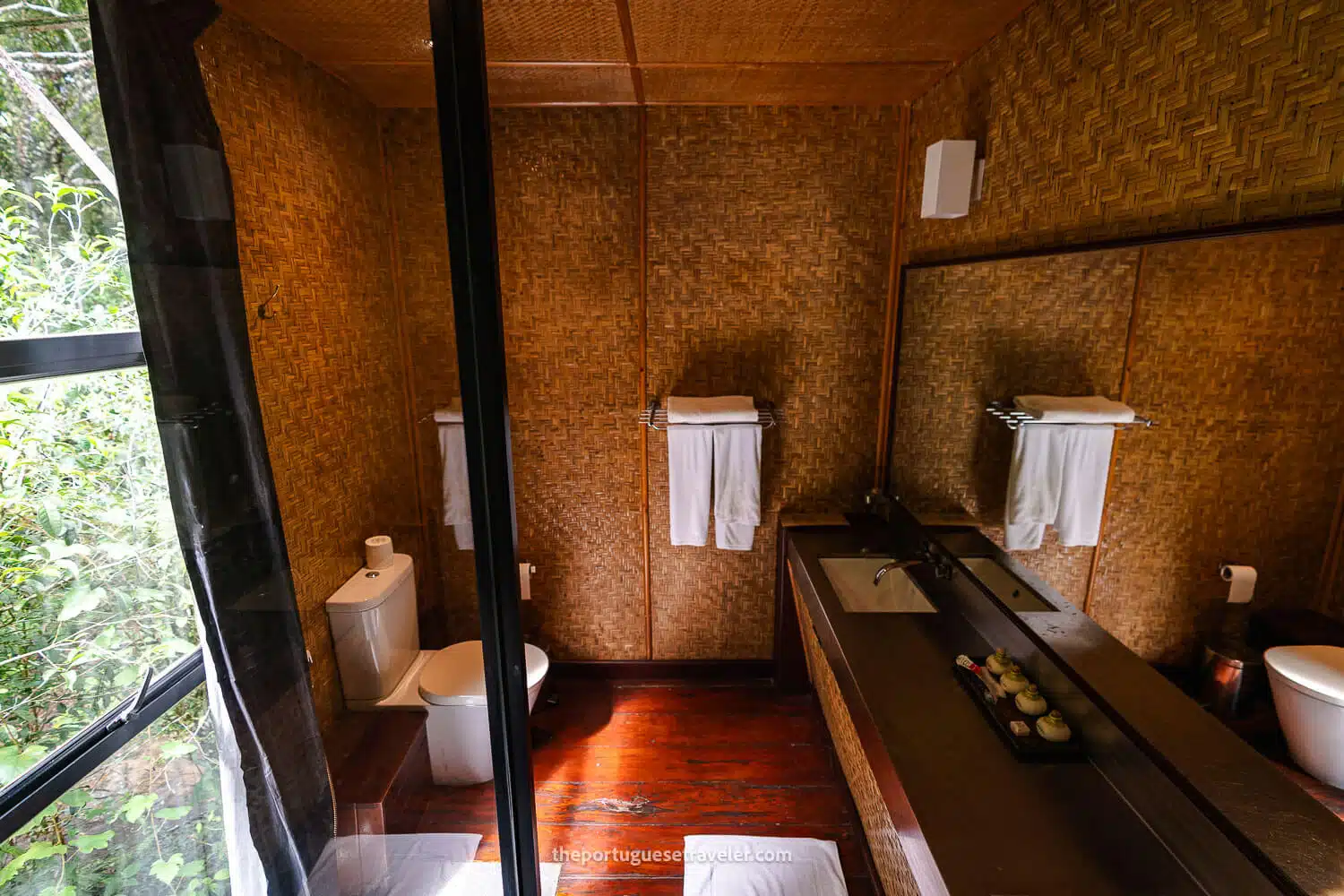
The Jungle Hike & Waterfall
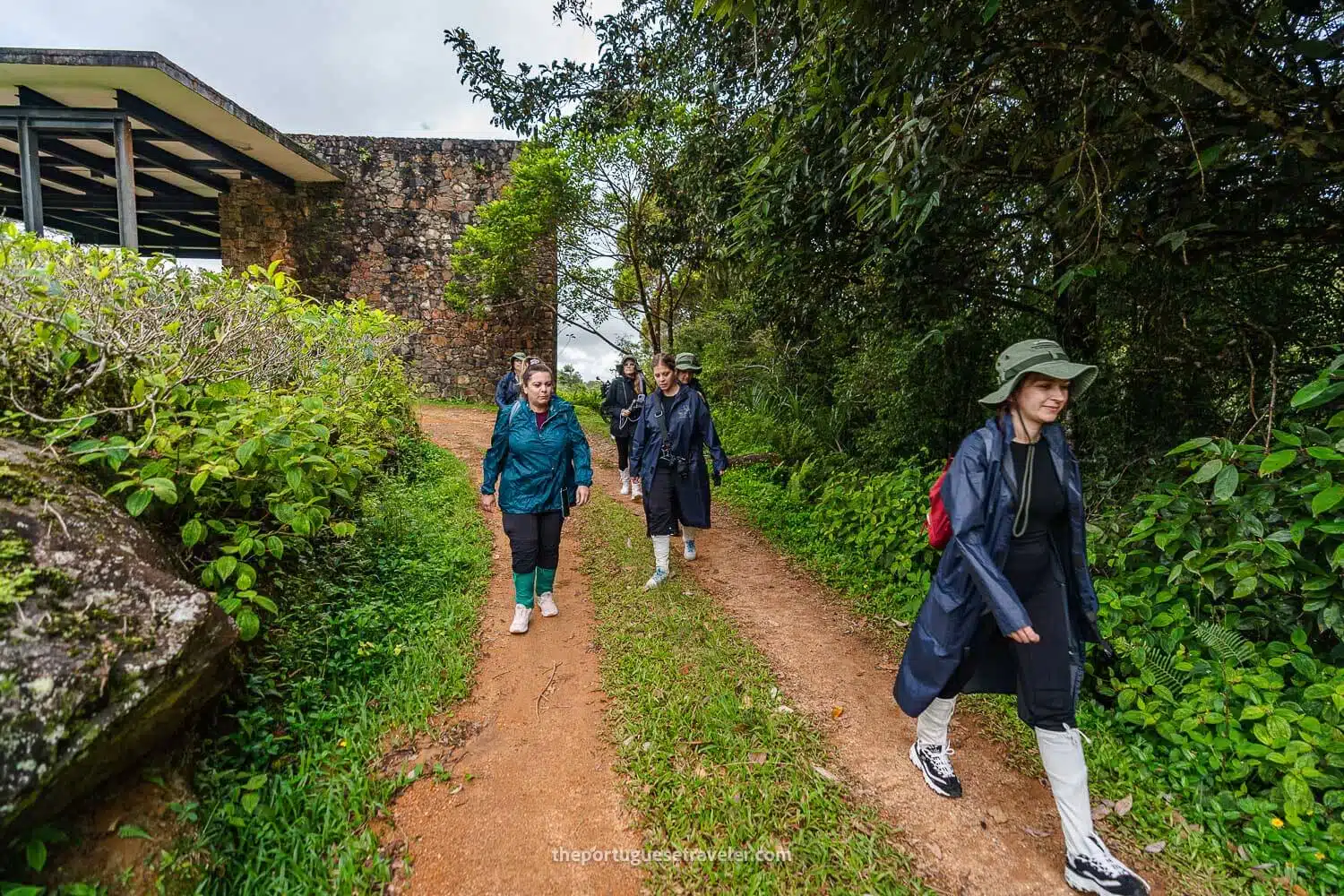
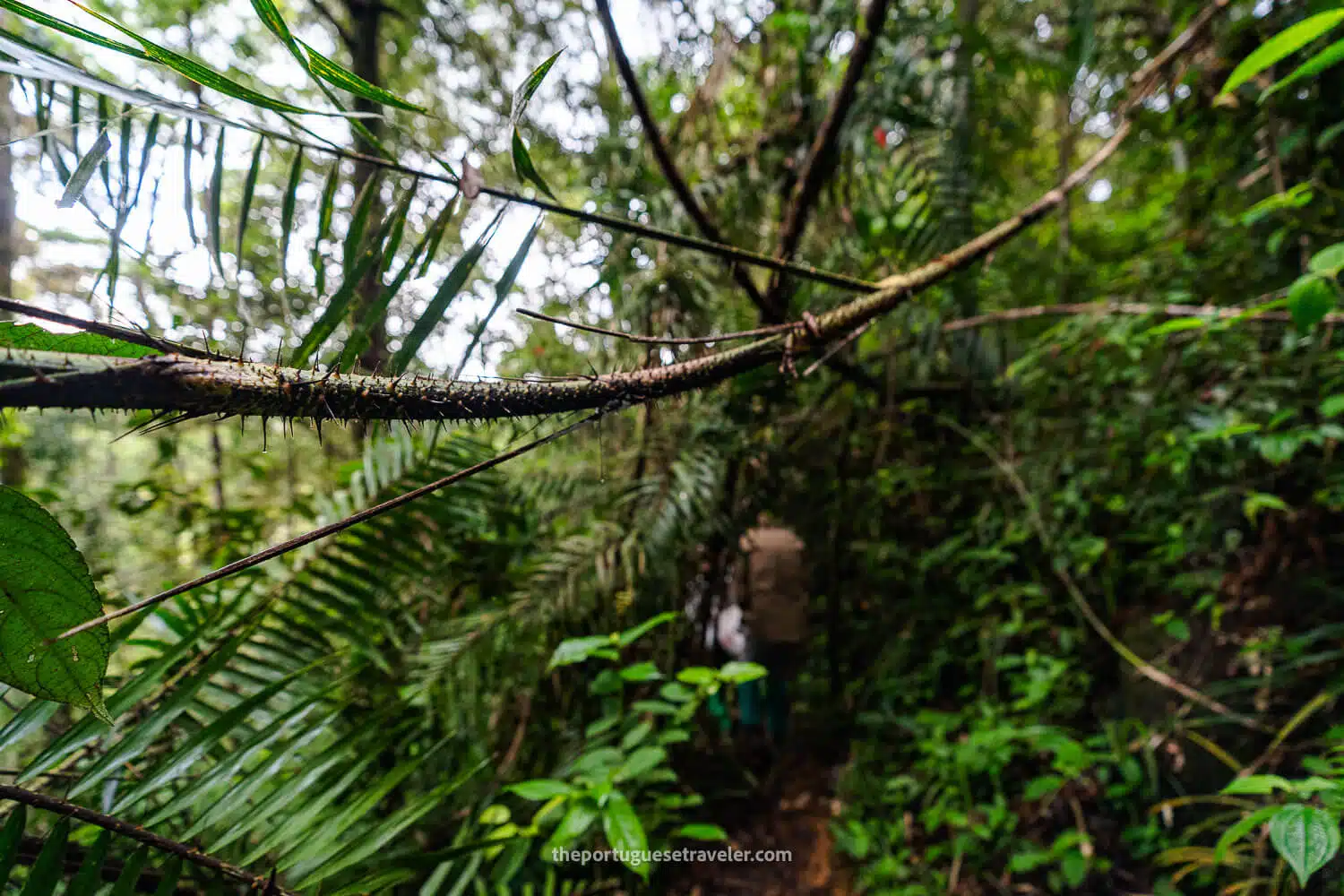
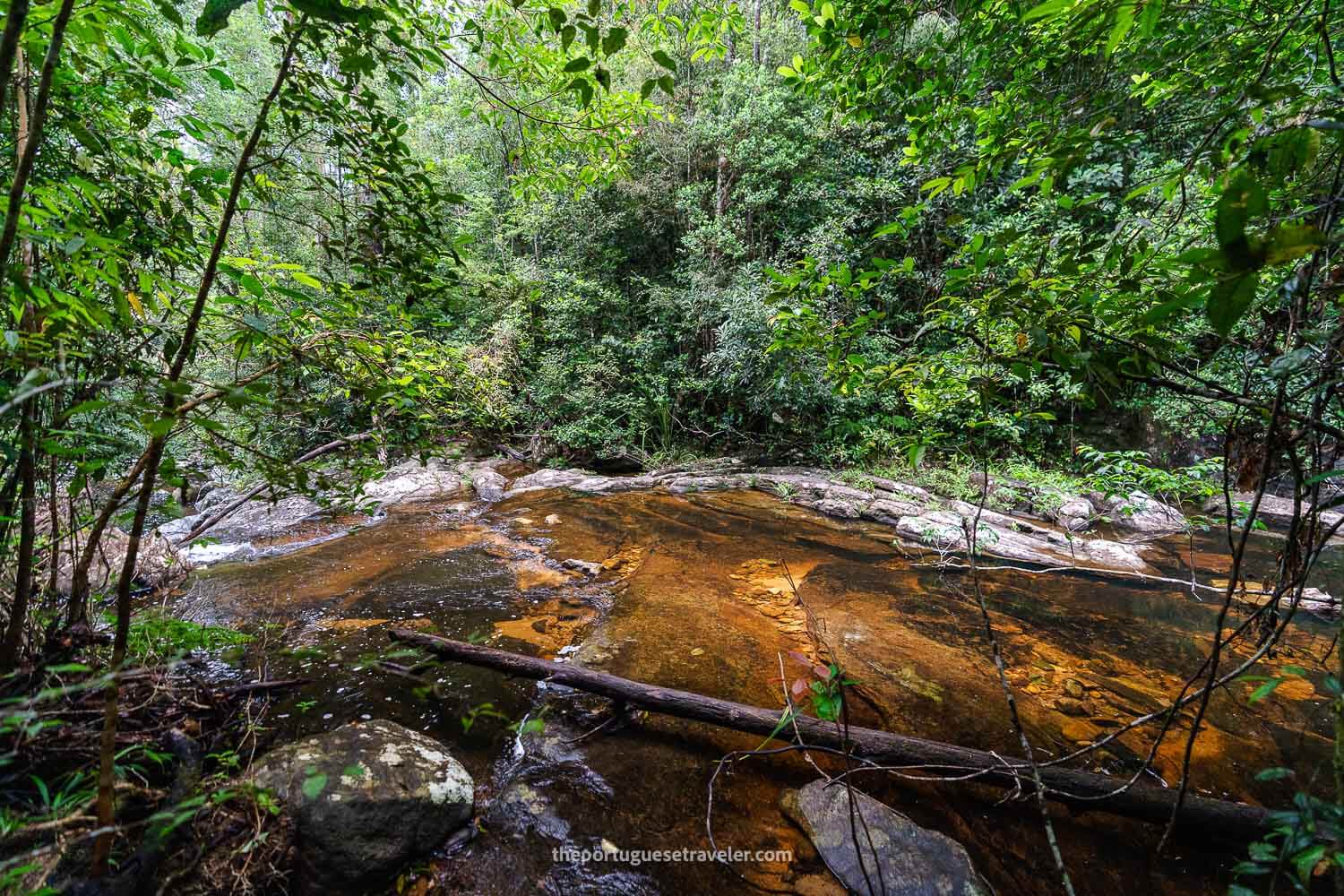
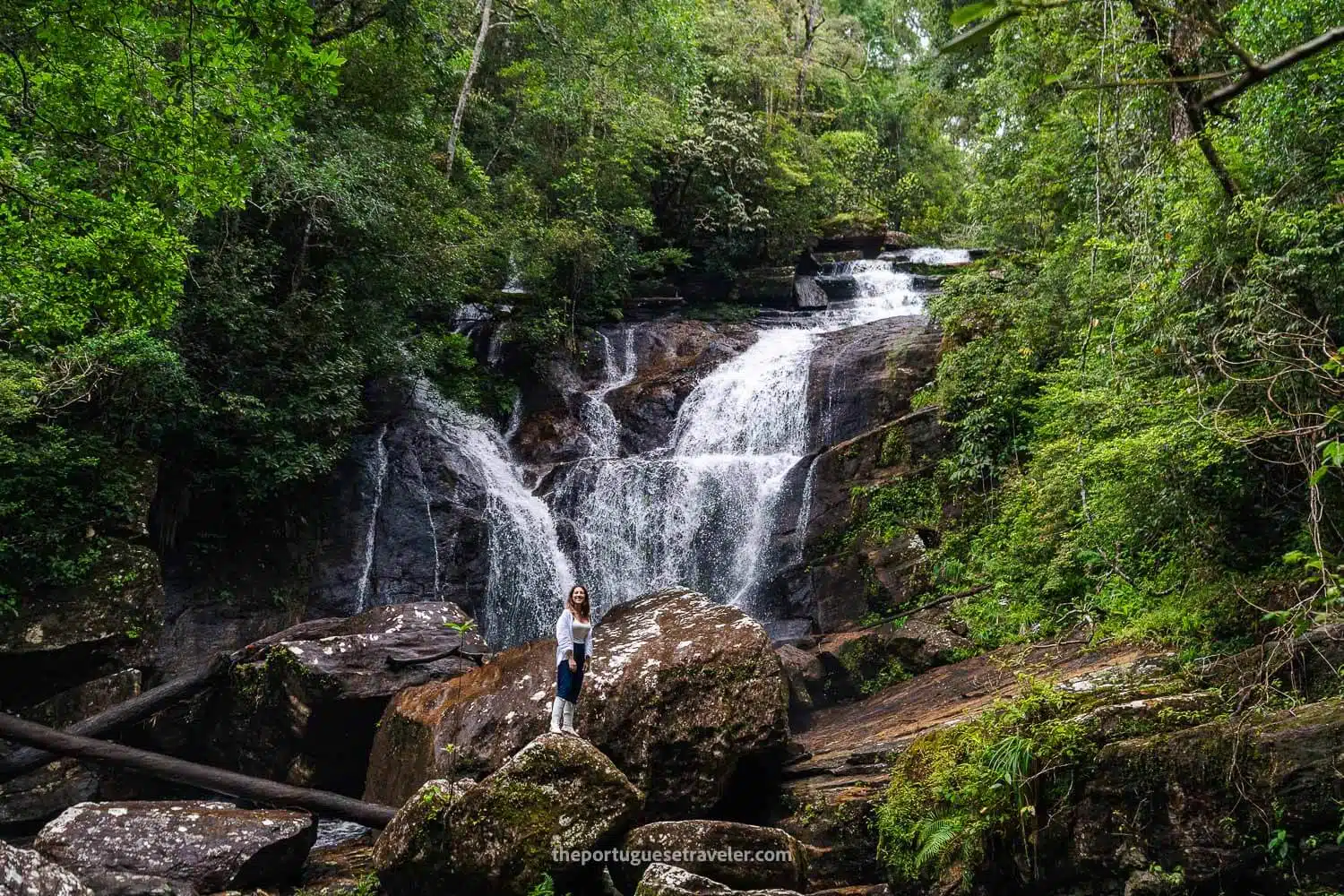
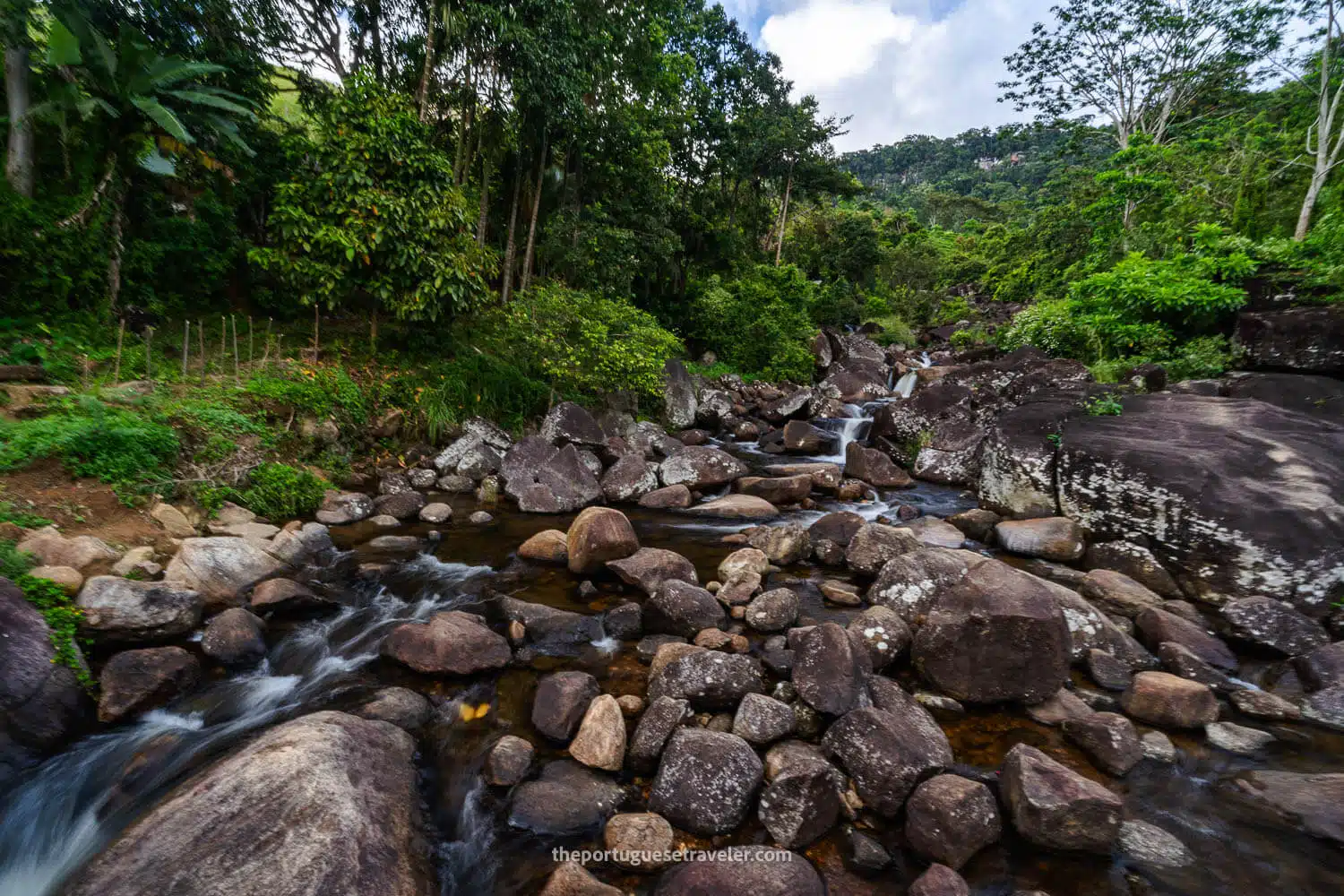
Fish Spa and Relax
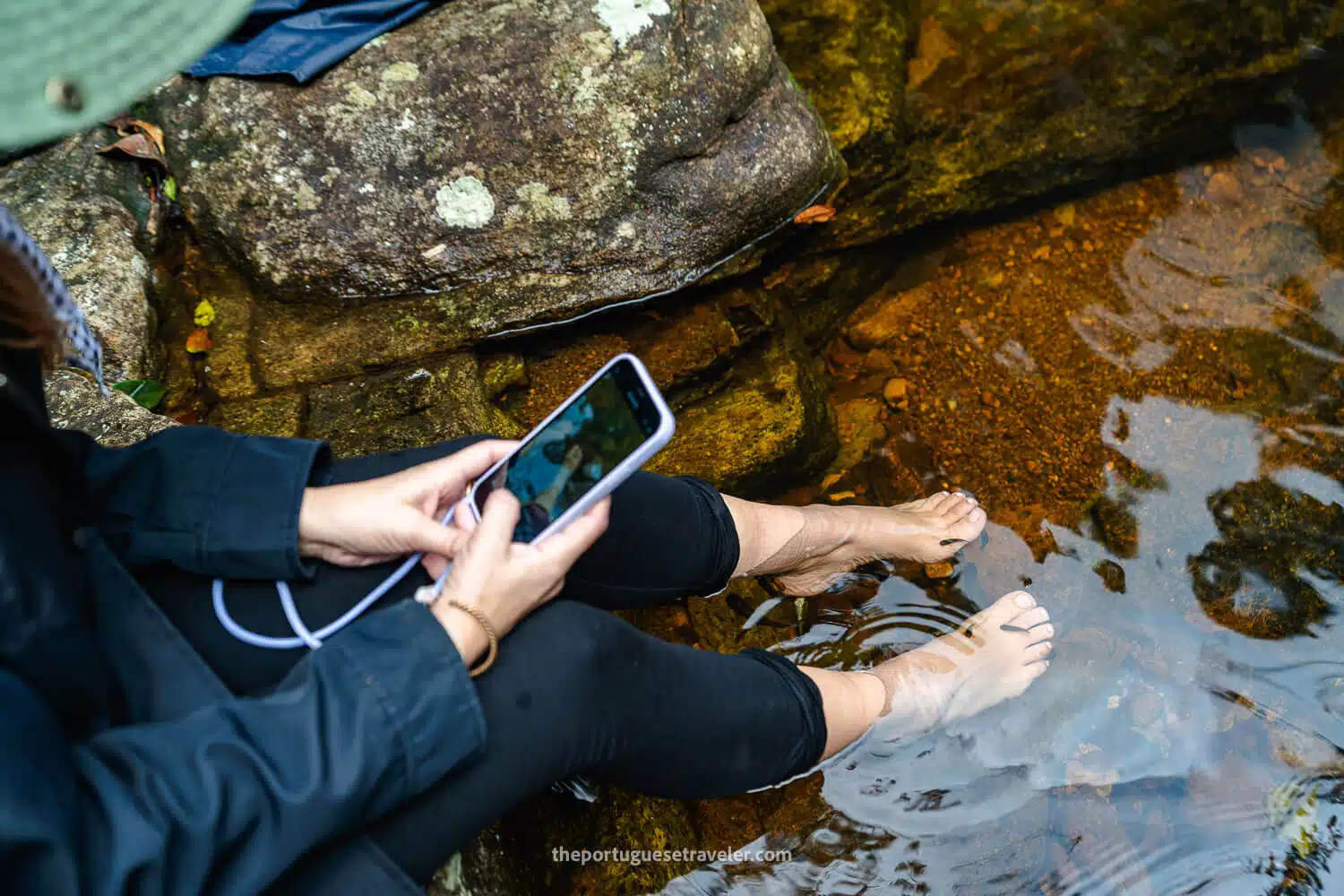
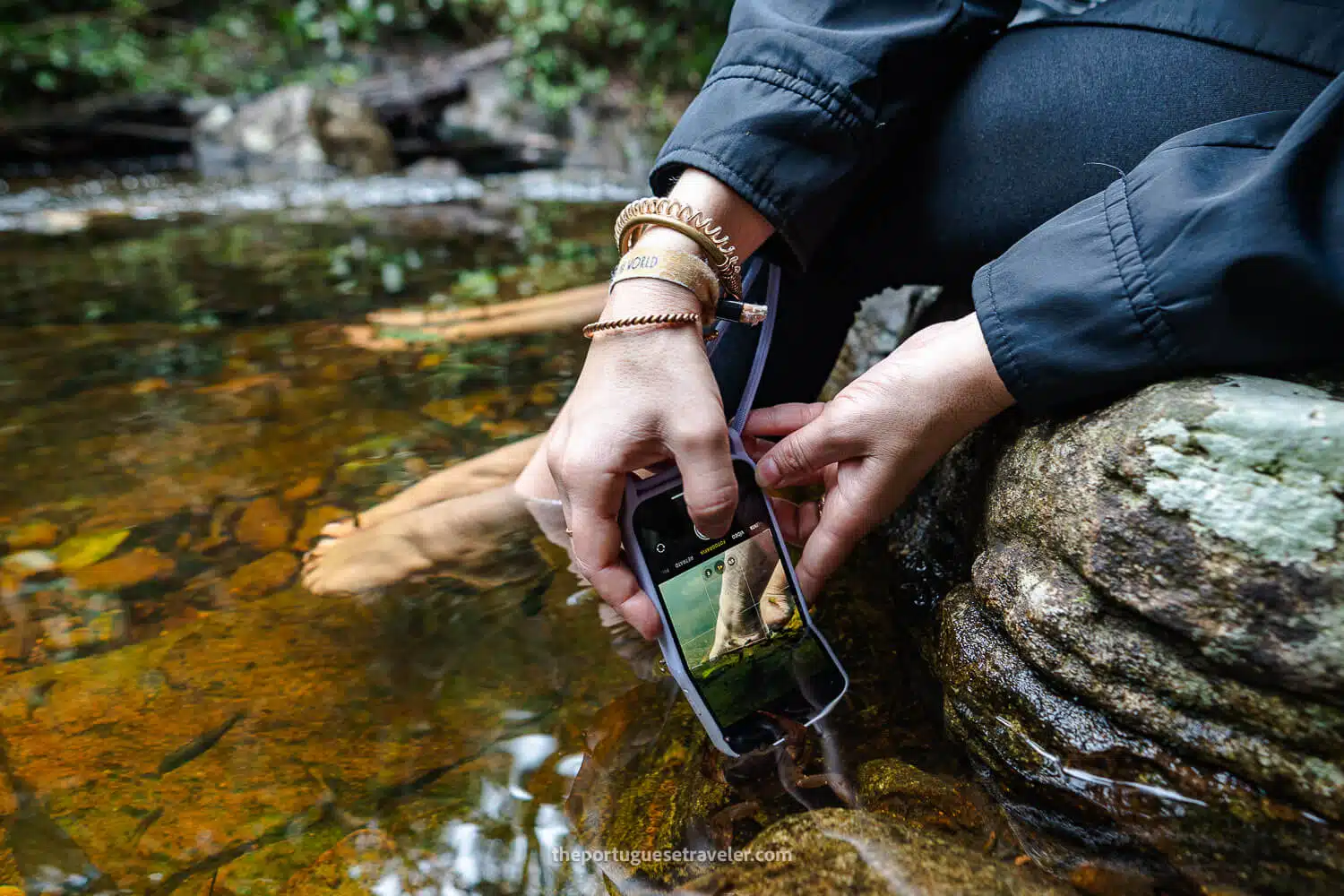
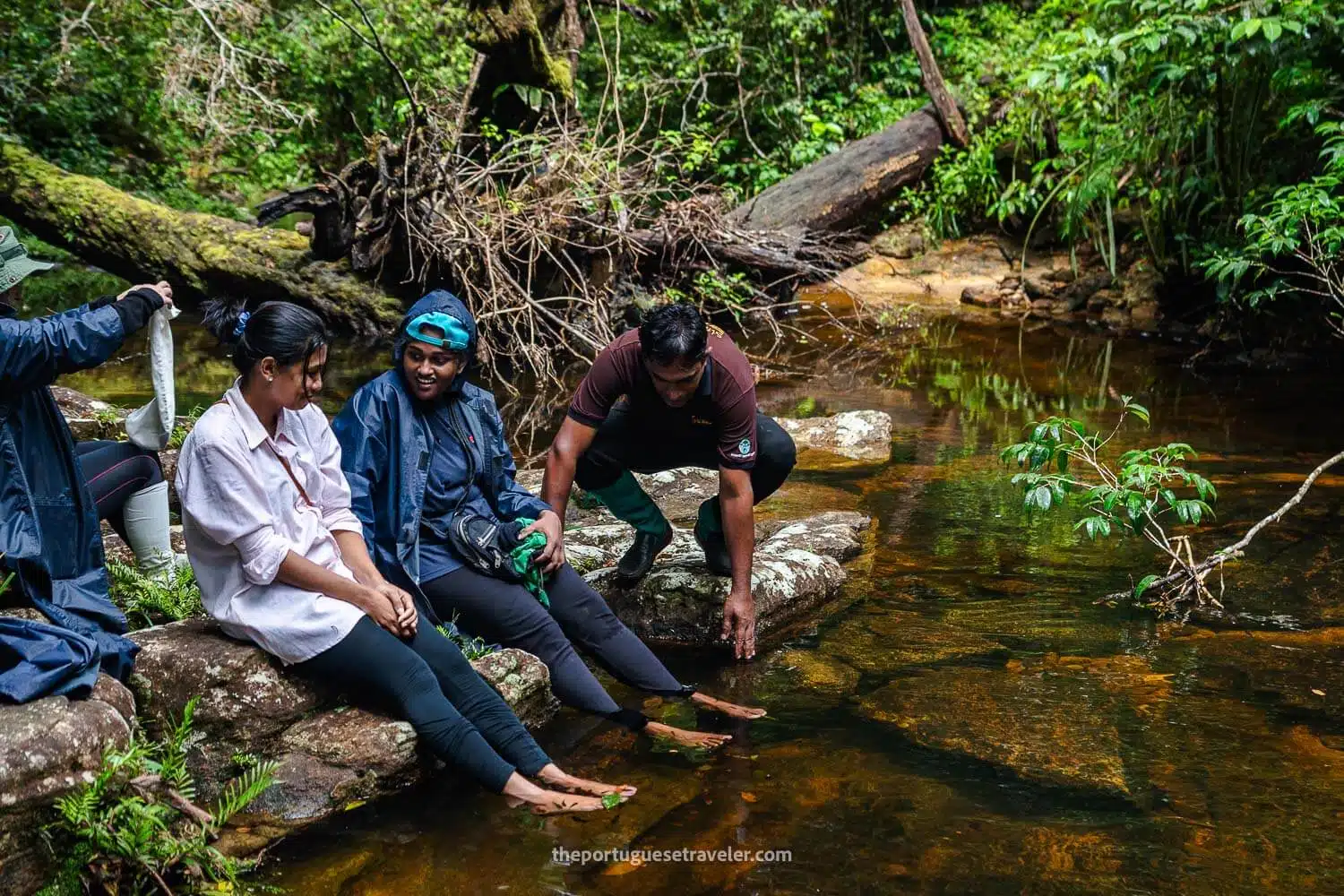
Dawn Wildlife Encounters
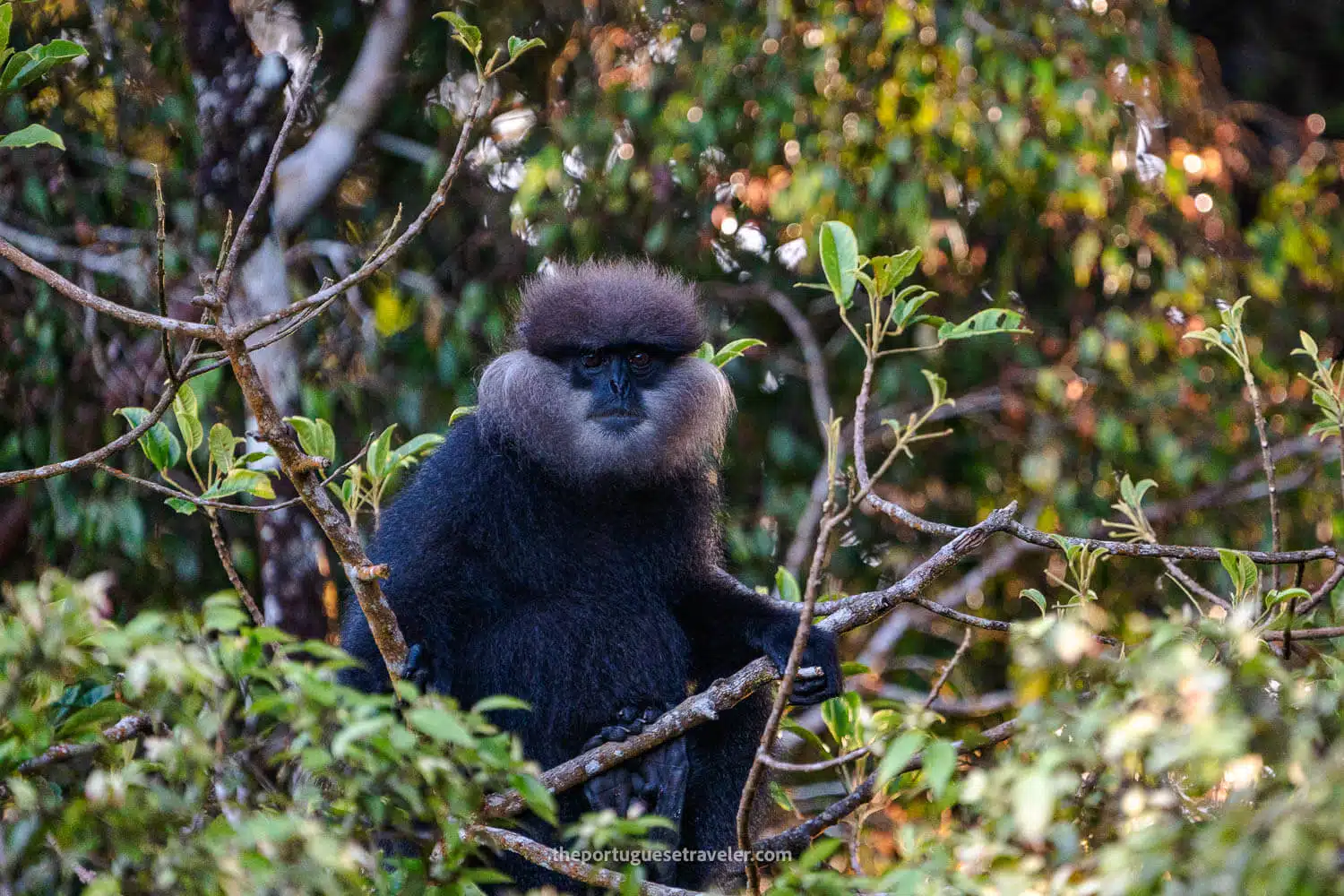
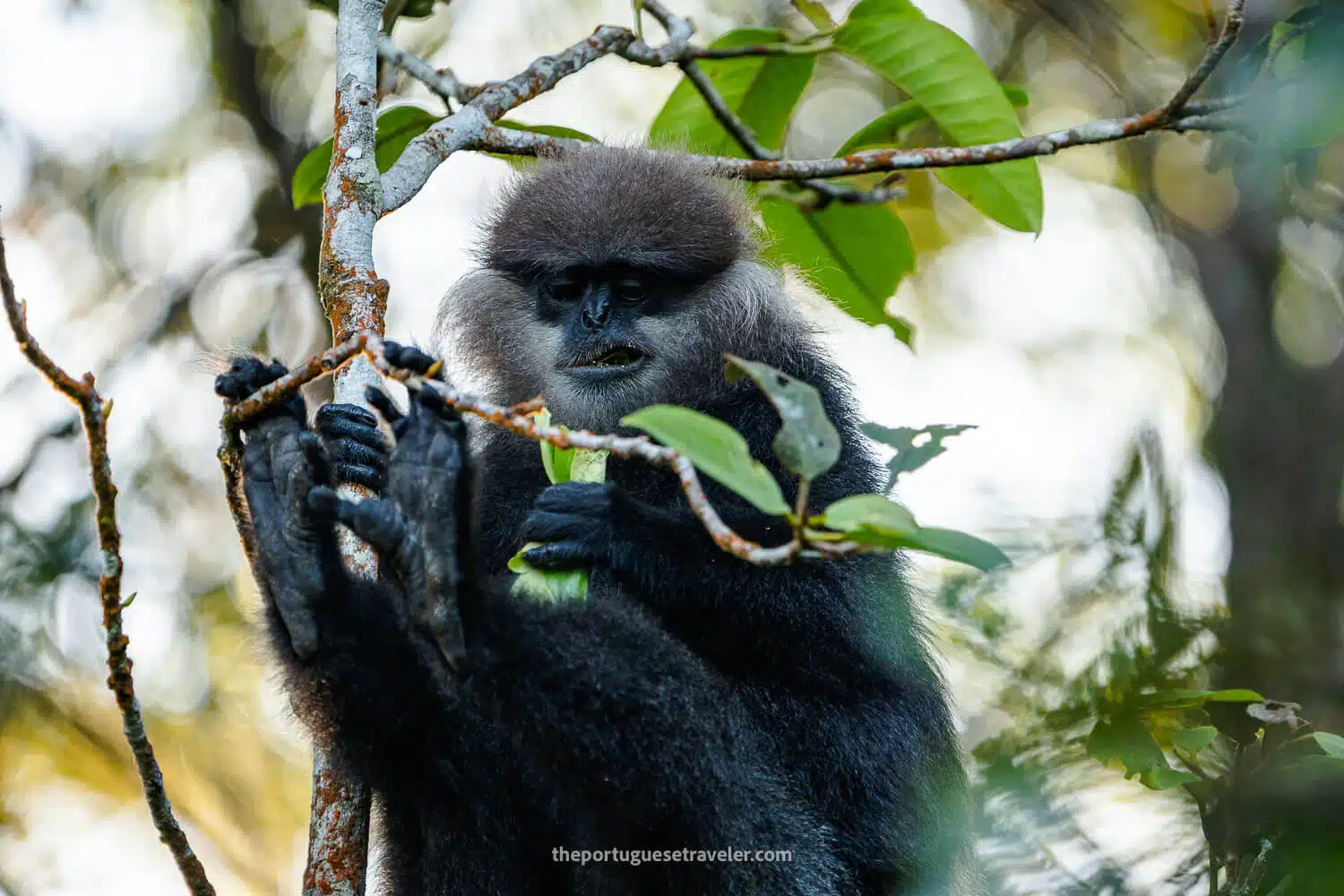
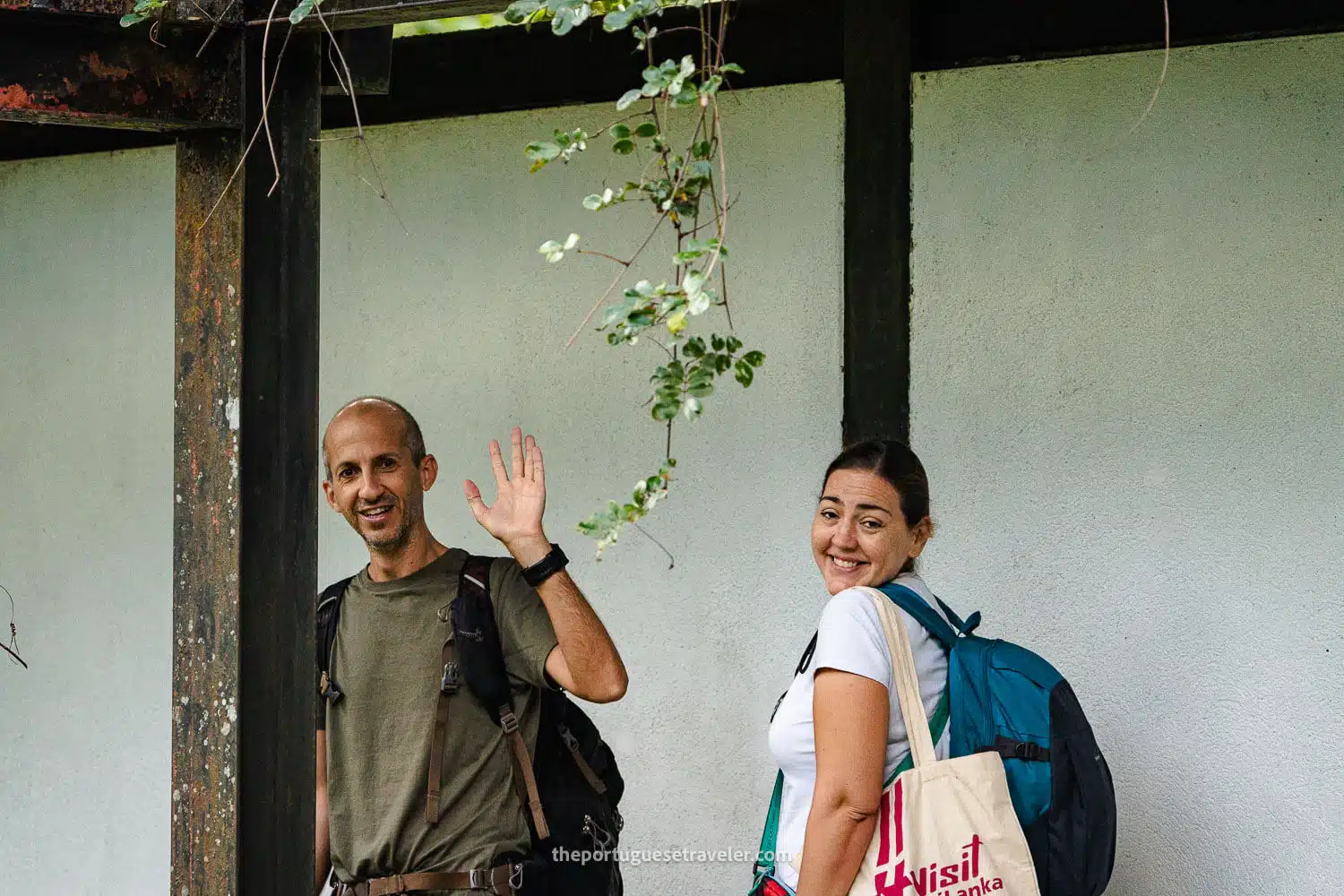
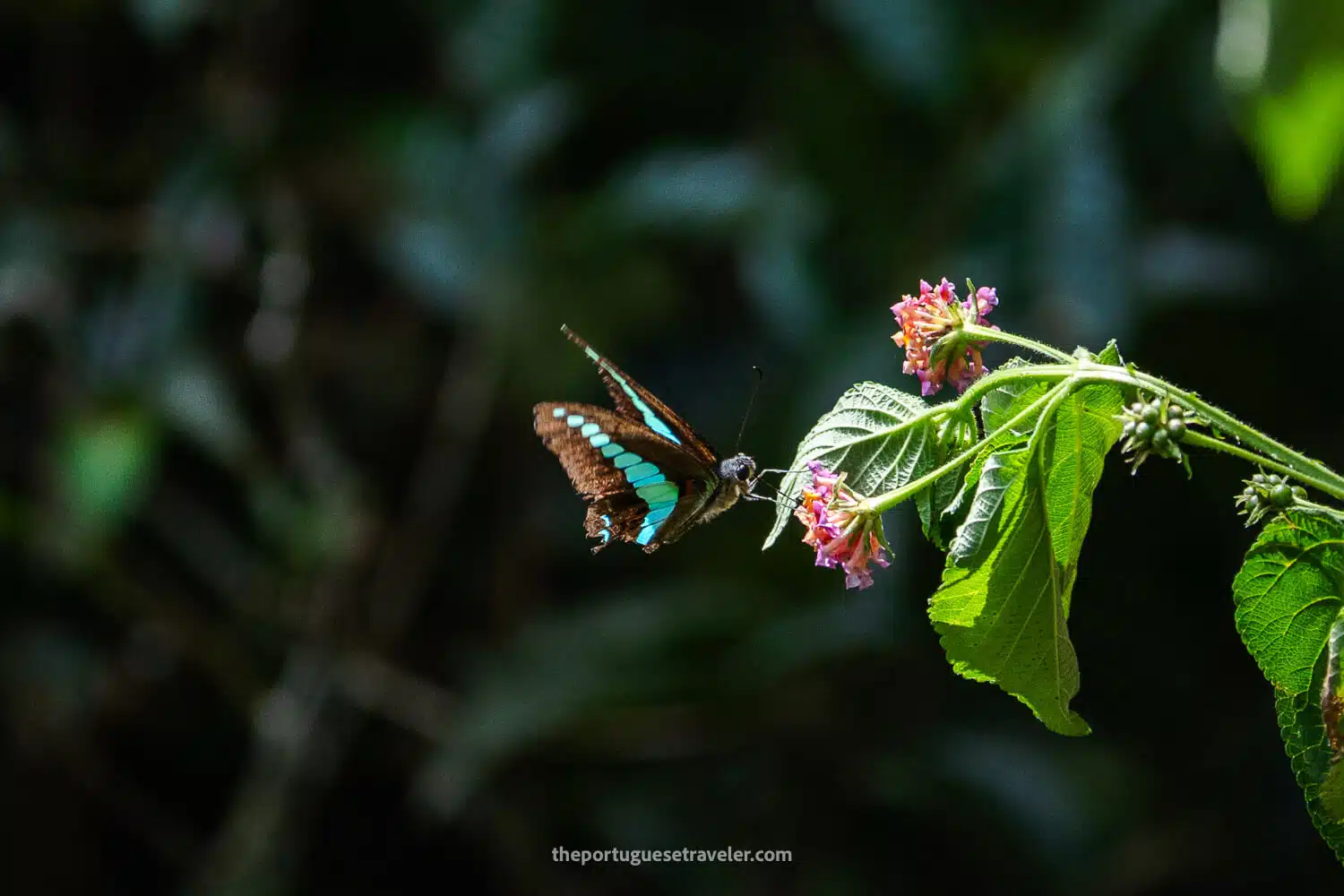
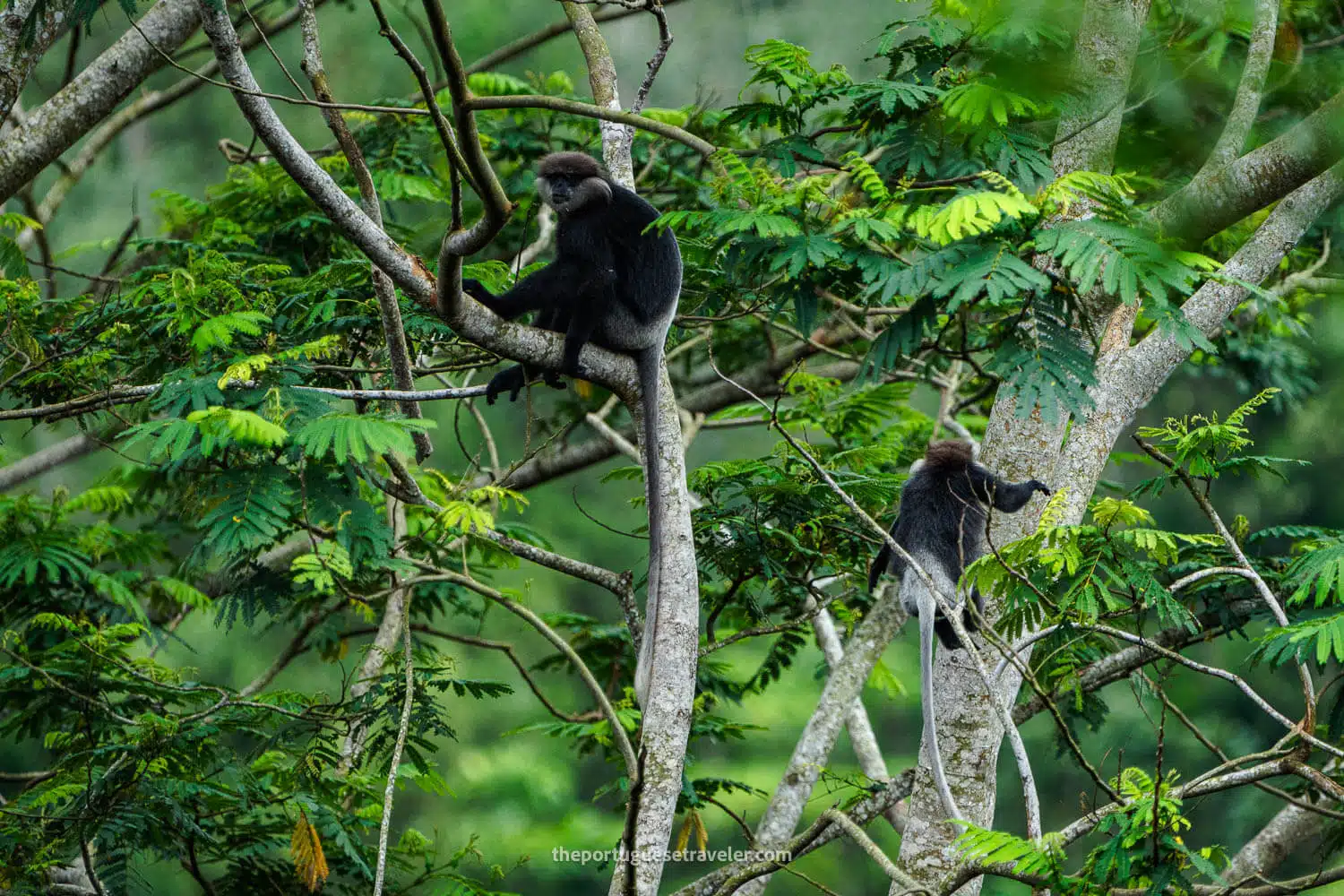
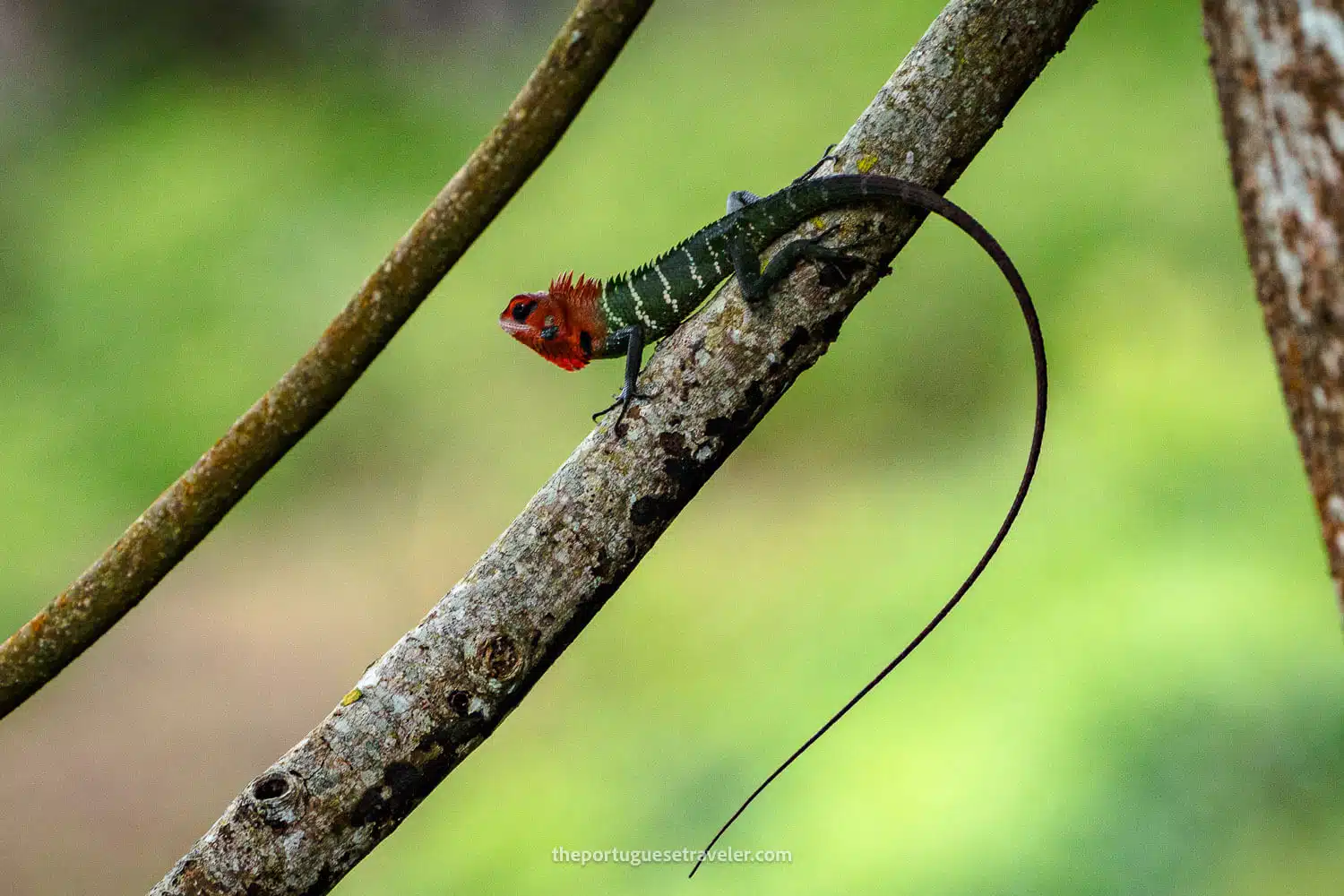
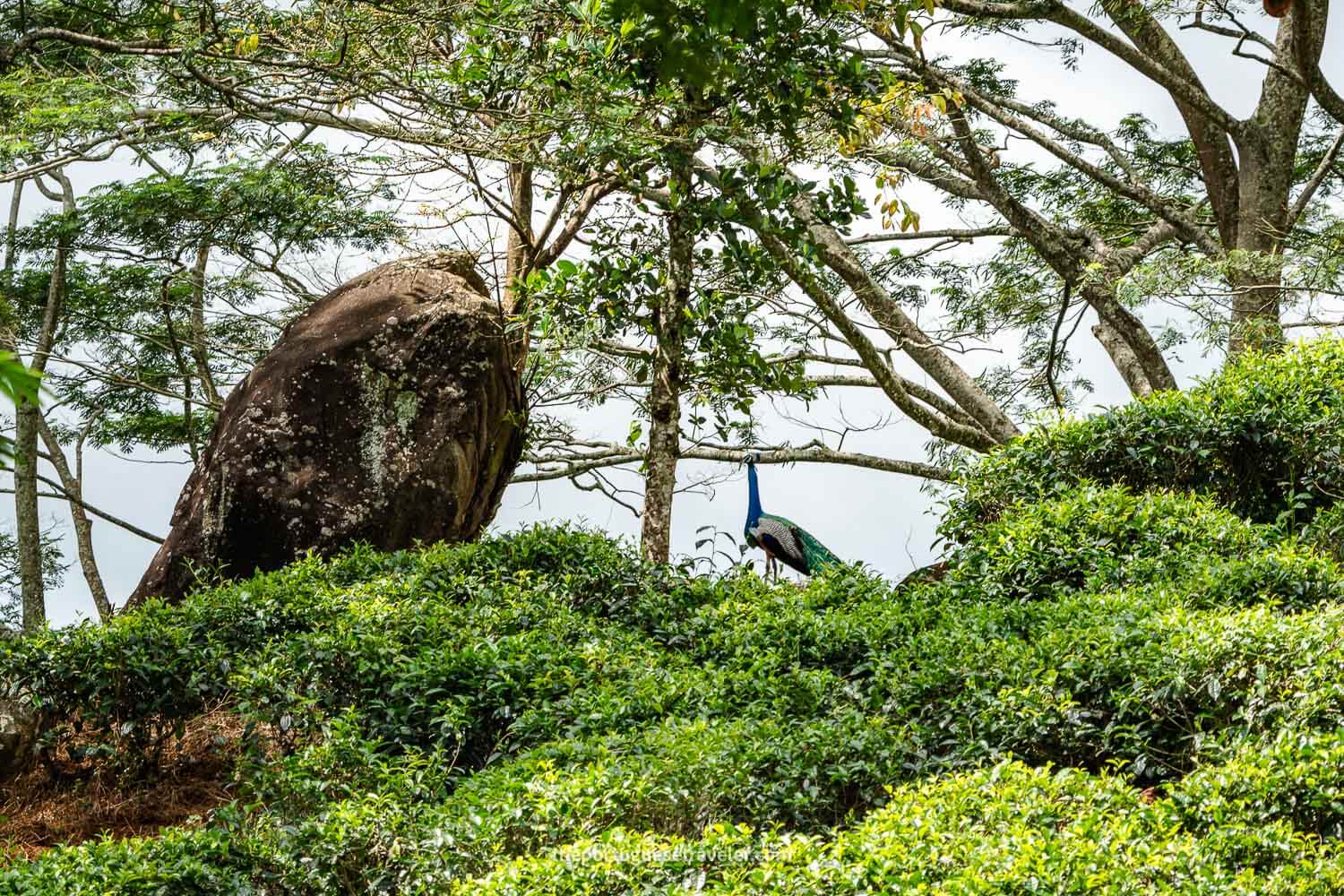
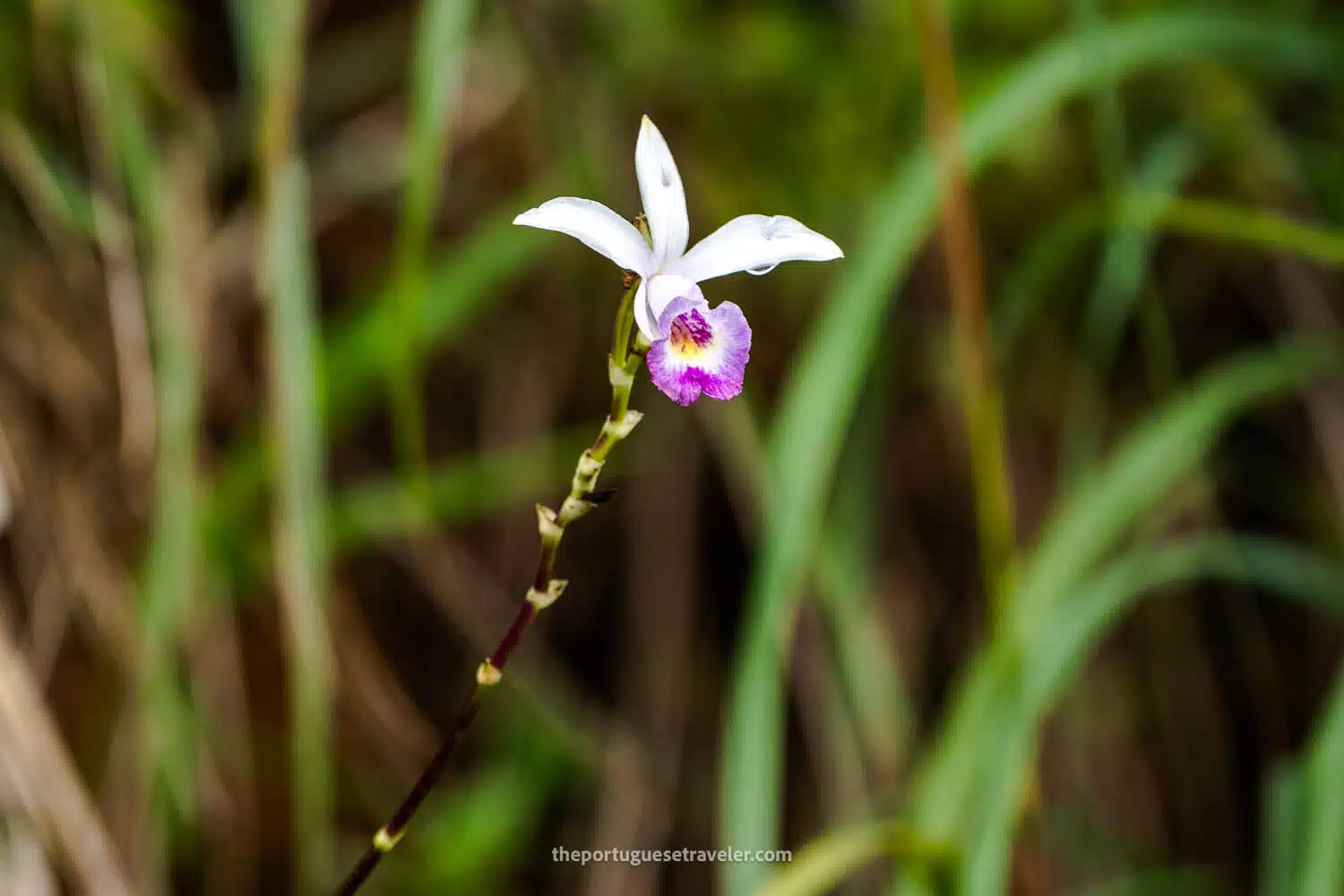
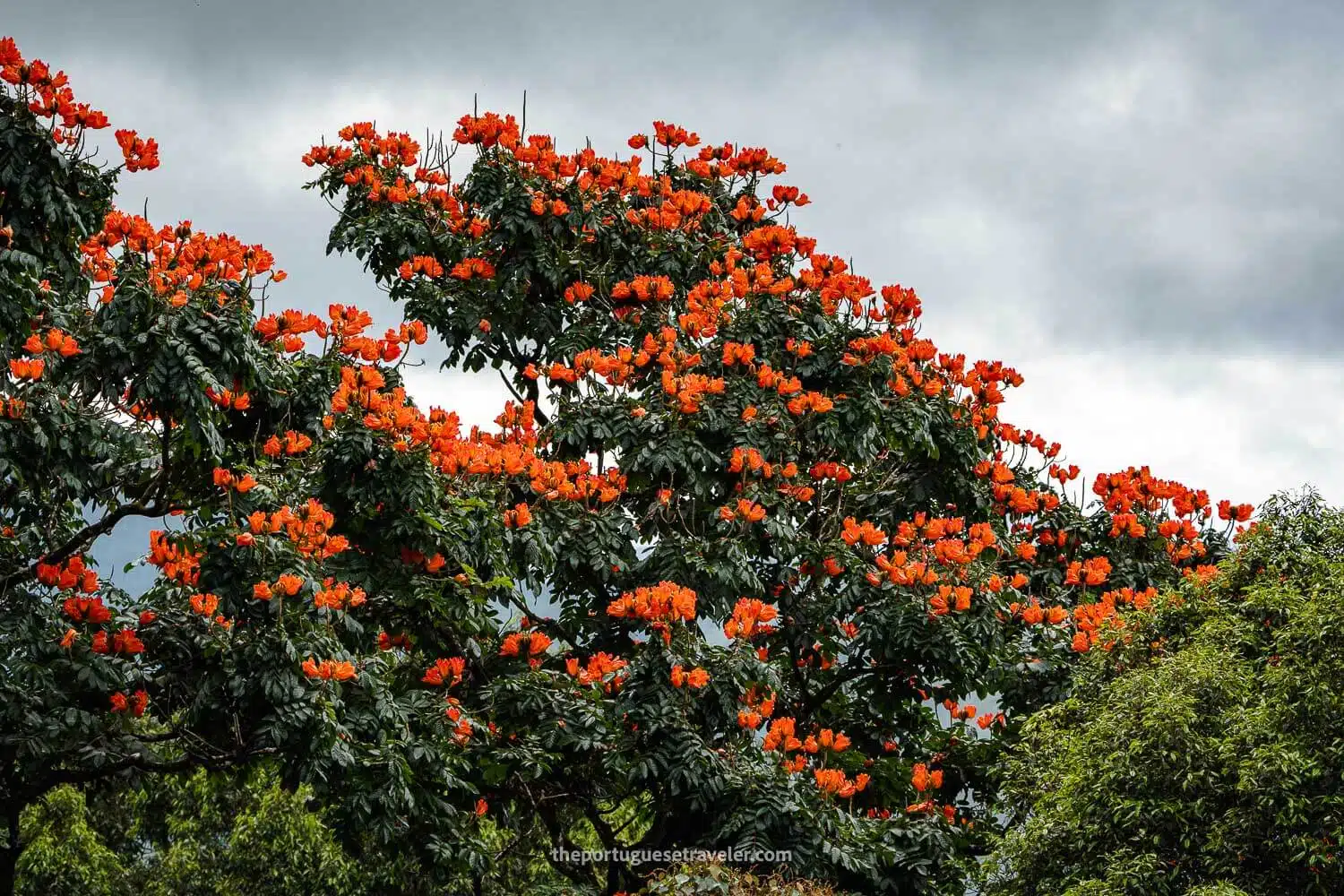
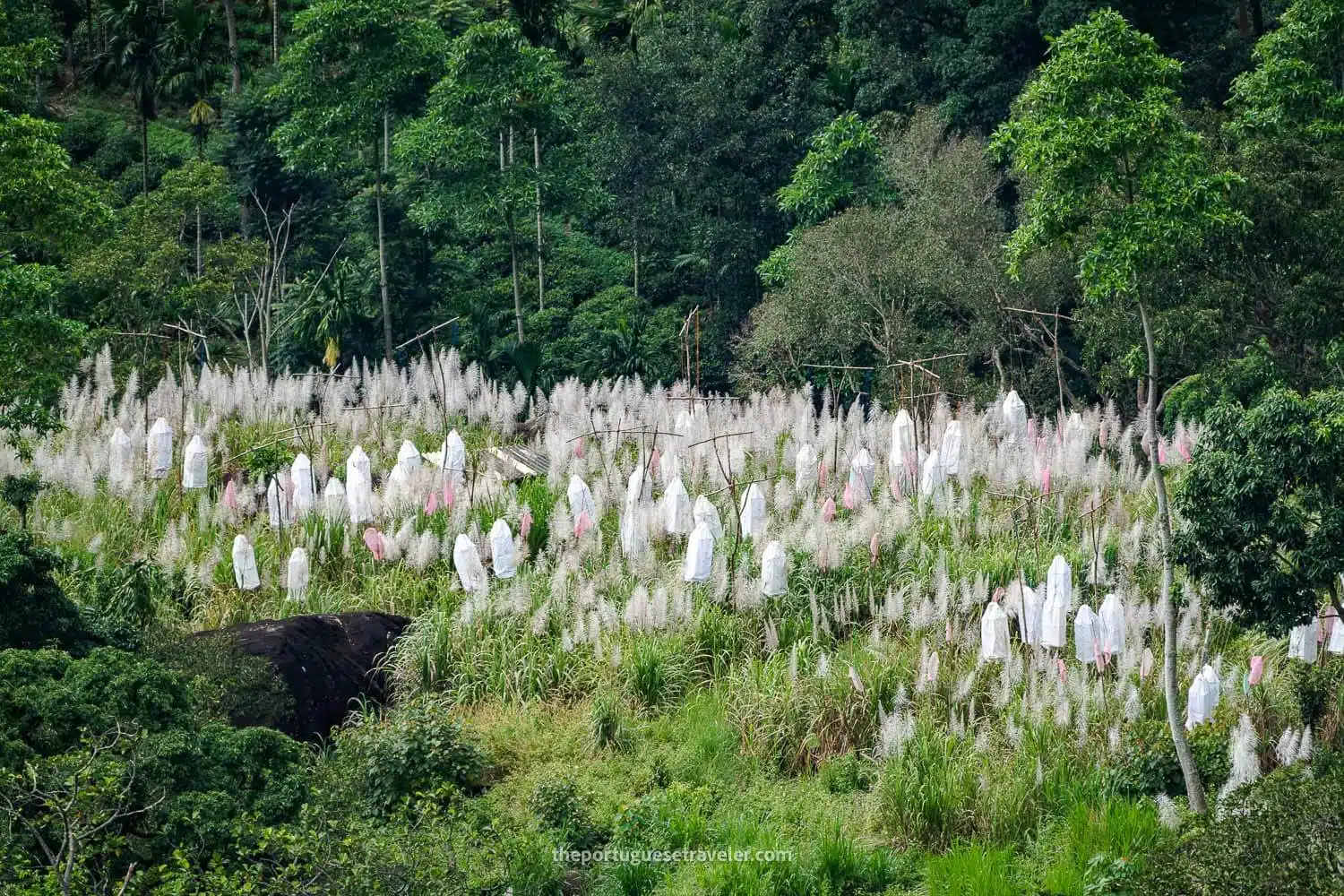
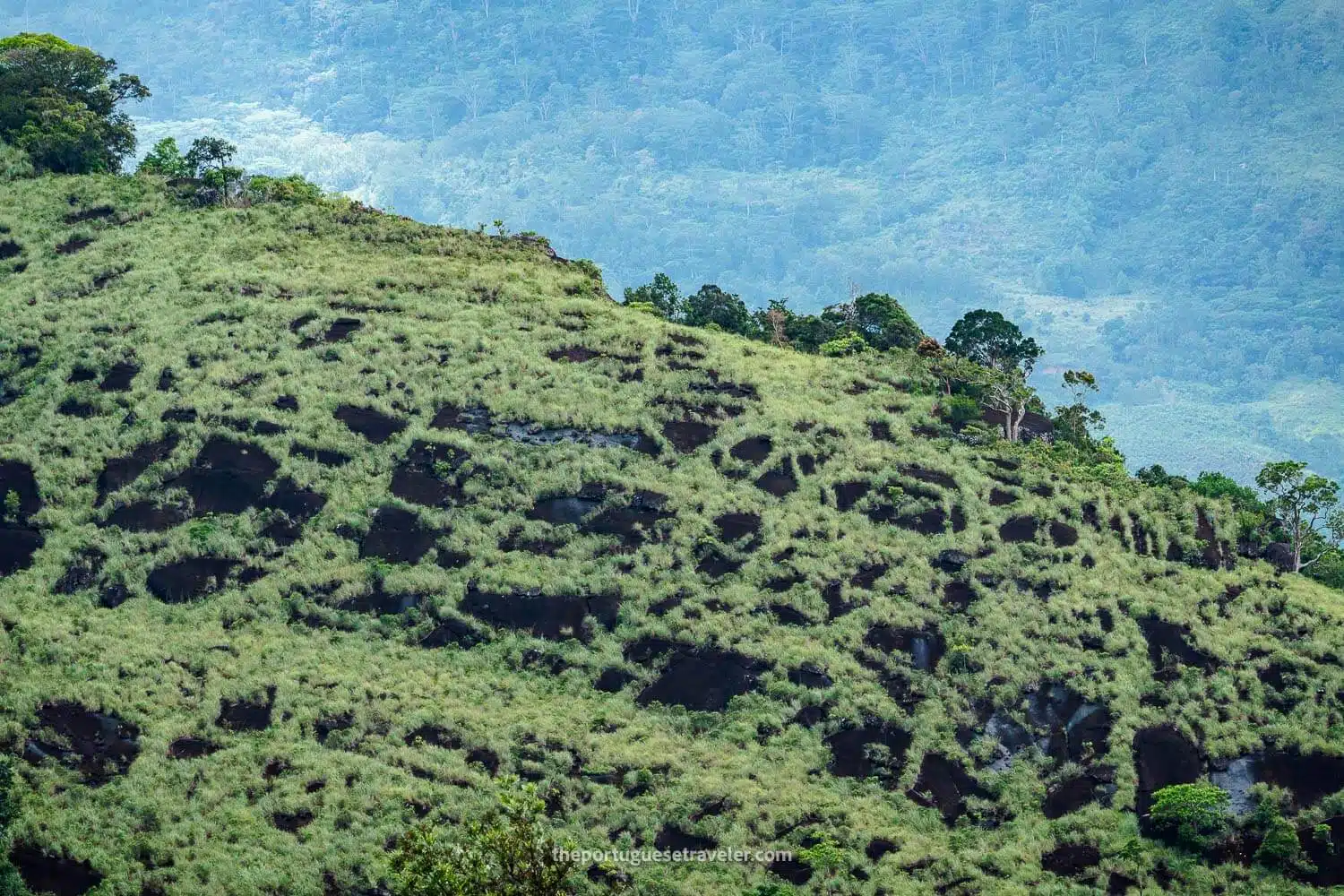
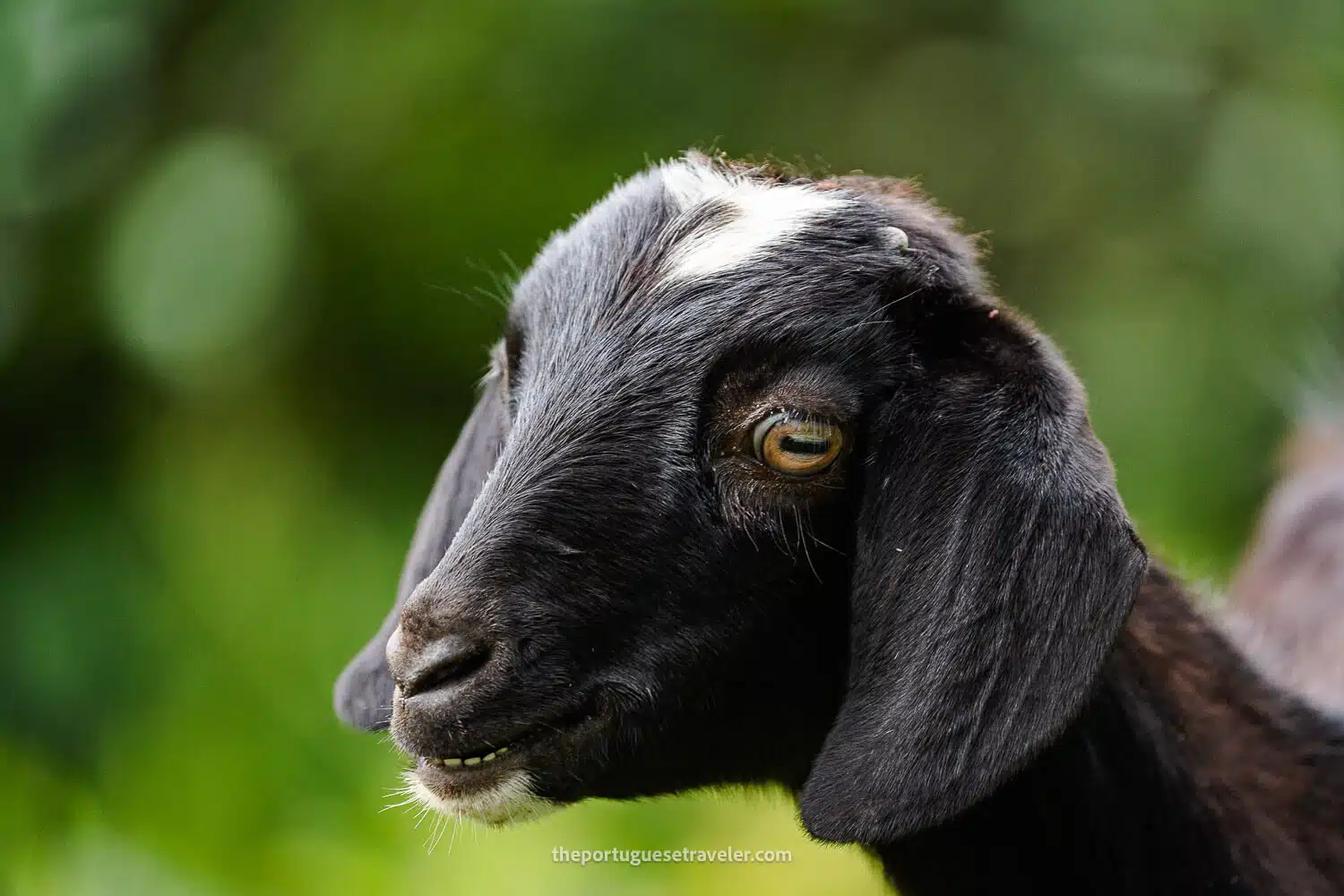
Plan your next adventure with us!
Here are the links we use and recommend to plan your trip easily and safely. You won’t pay more, and you’ll help keep the blog running!
Adventures in Sri Lanka - The Ancient Ceylon
Explore The Galapagos Islands
Hiking in Switzerland & Italy
The Hidden Worlds of Ecuador
ABOUT ME
I’m João Petersen, an explorer at heart, travel leader, and the creator of The Portuguese Traveler. Adventure tourism has always been my passion, and my goal is to turn my blog into a go-to resource for outdoor enthusiasts. Over the past few years, I’ve dedicated myself to exploring remote destinations, breathtaking landscapes, and fascinating cultures, sharing my experiences through a mix of storytelling and photography.
SUBSCRIBE
Don’t Miss Out! Be the first to know when I share new adventures—sign up for The Portuguese Traveler newsletter!
MEMBER OF
RECENT POSTS
COMMUNITY
TRAVEL INSURANCE
Lost luggage, missed flights, or medical emergencies – can you afford the risk? For peace of mind, I always trust Heymondo Travel Insurance.
Get 5% off your insurance with my link!



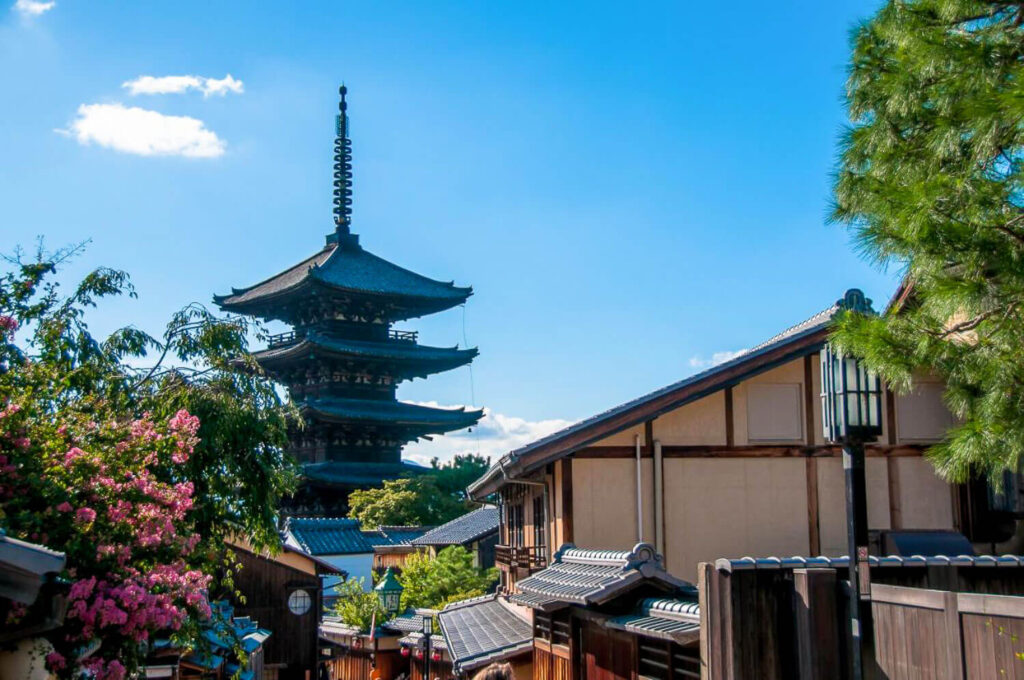
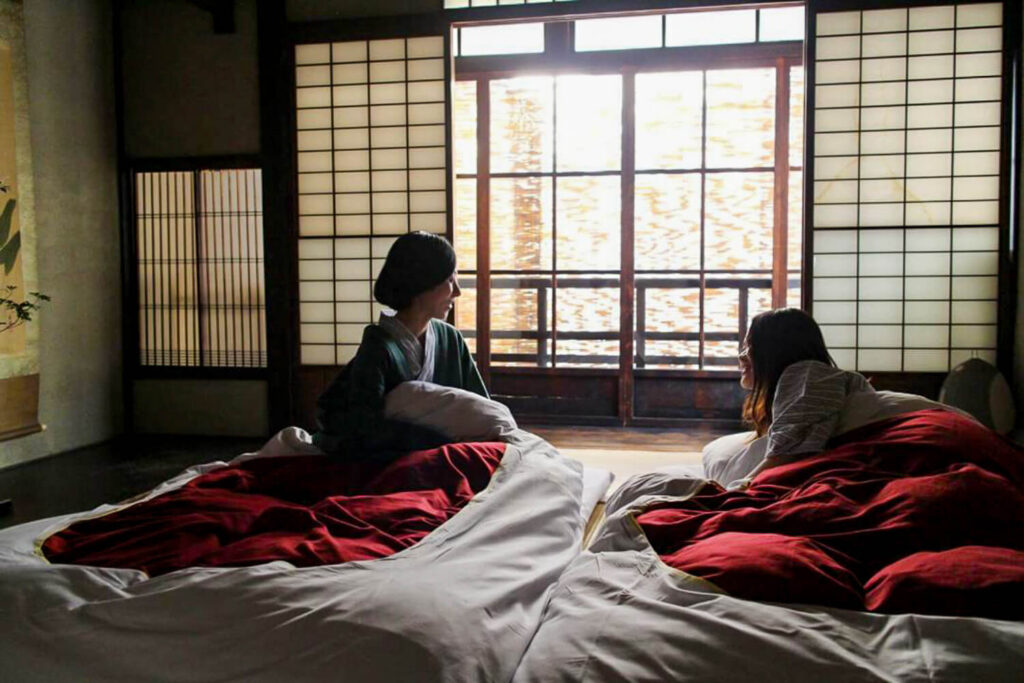

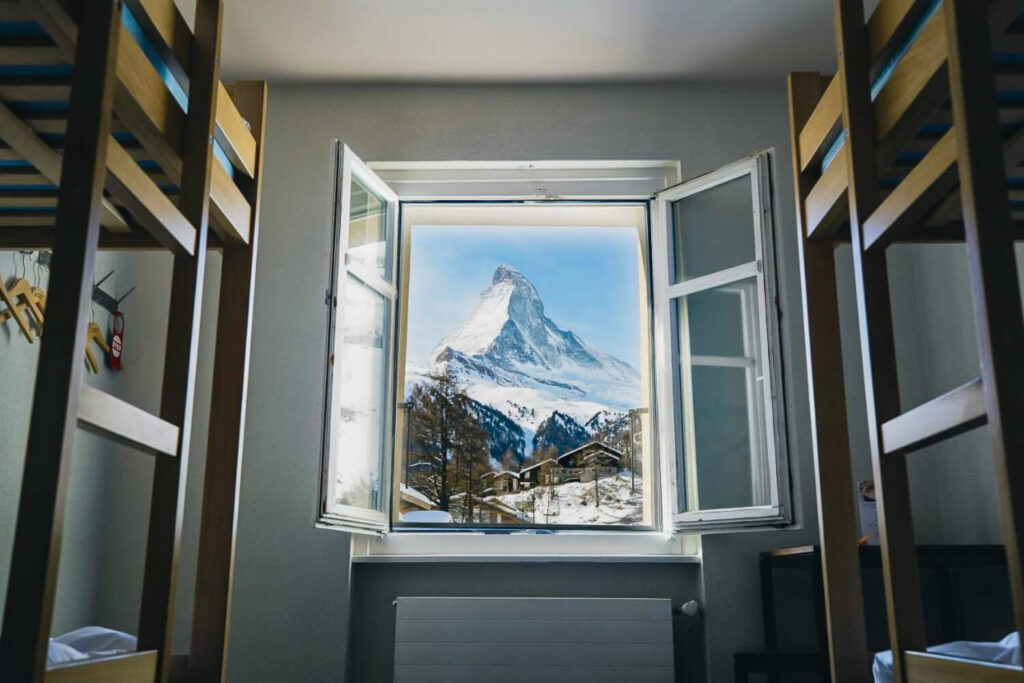
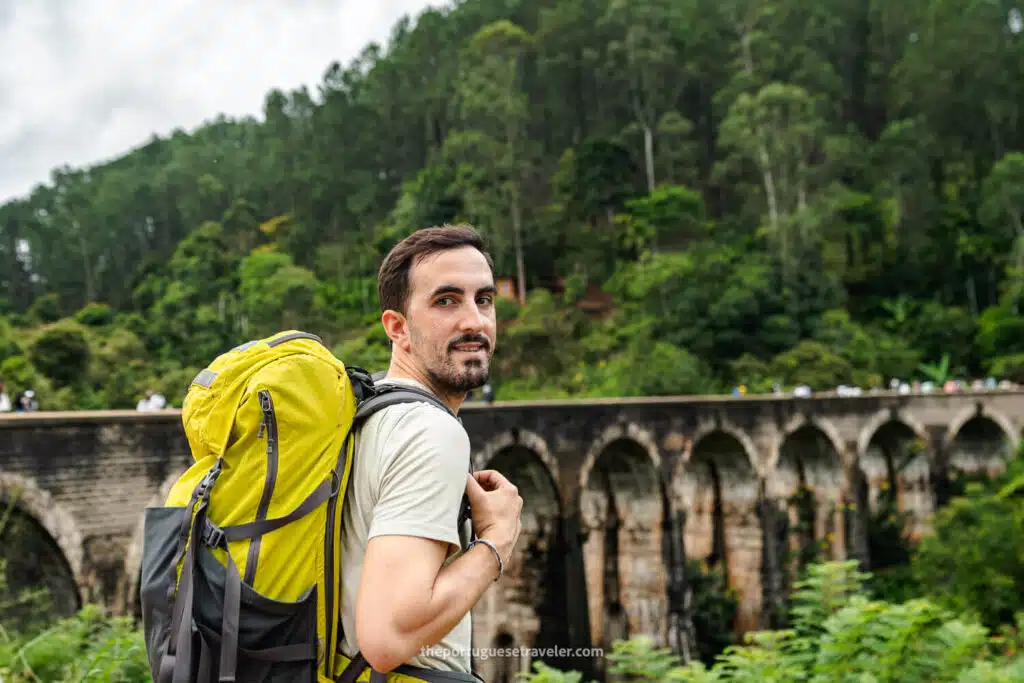

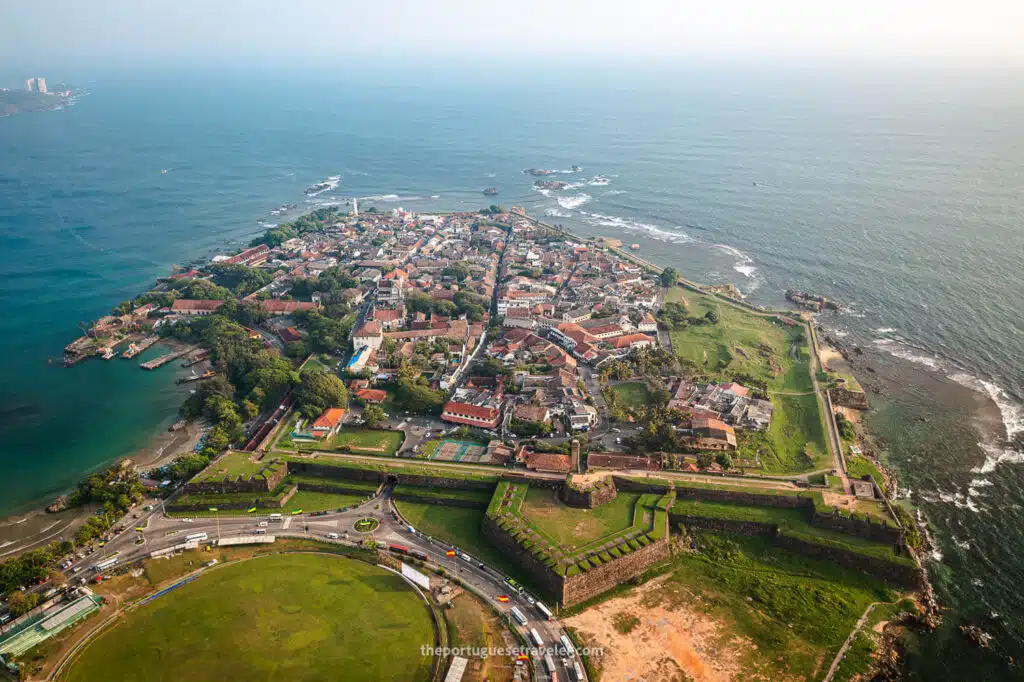
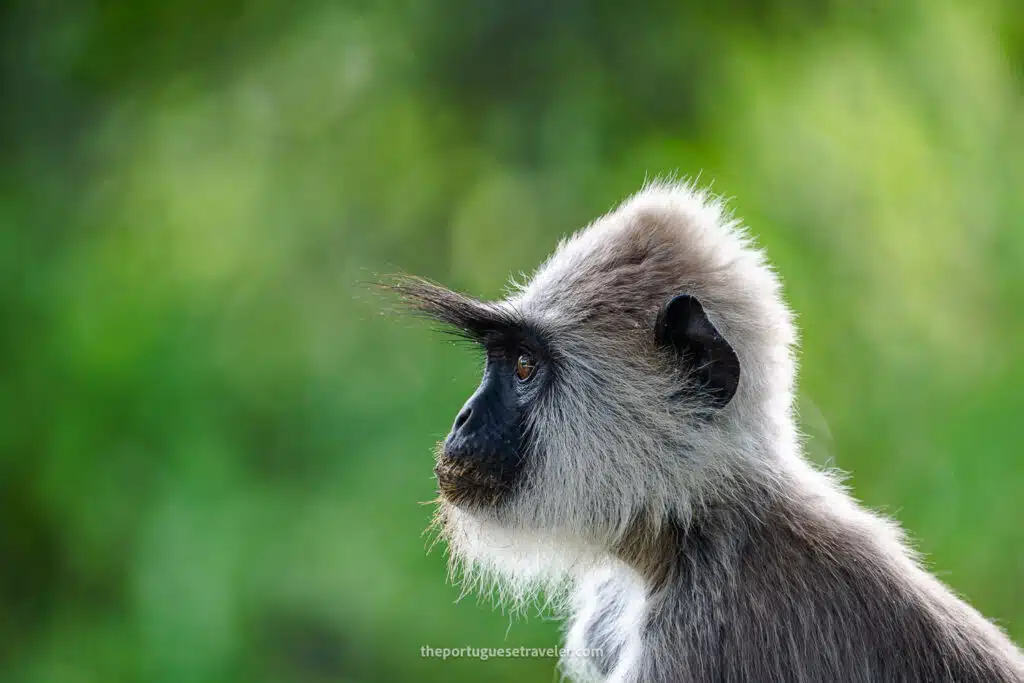

2 thoughts on “Sinharaja Forest Reserve – UNESCO World Heritage Site”
Tens fotografias da bicharada muito giras. Parabéns!
Obrigado Inês! Valeu a pena levar tanta tralha pra lá ahah